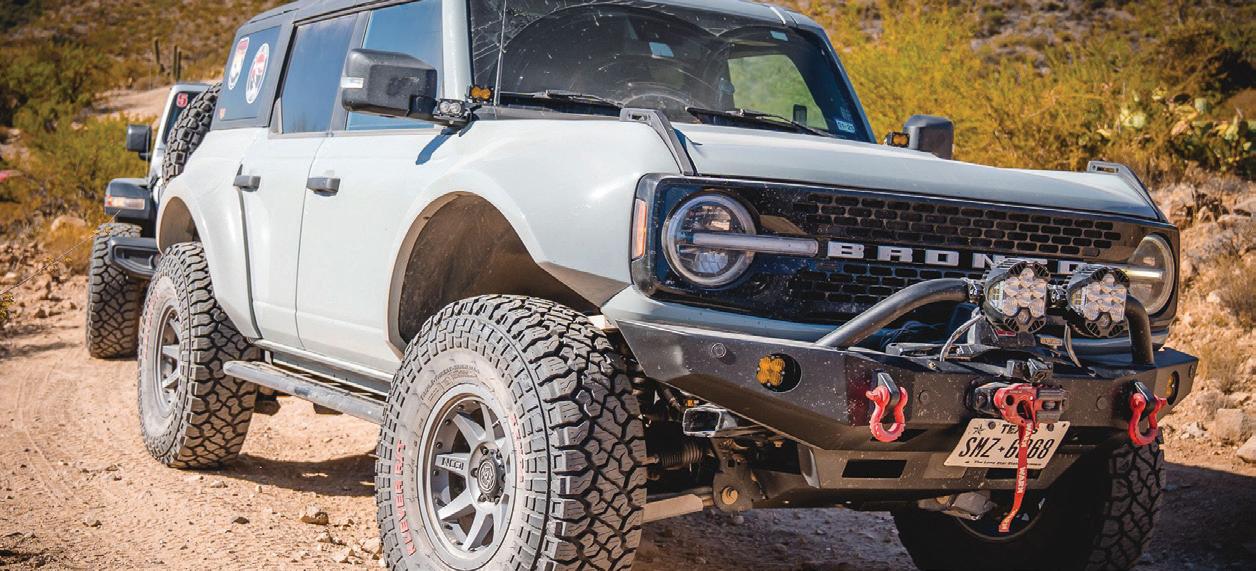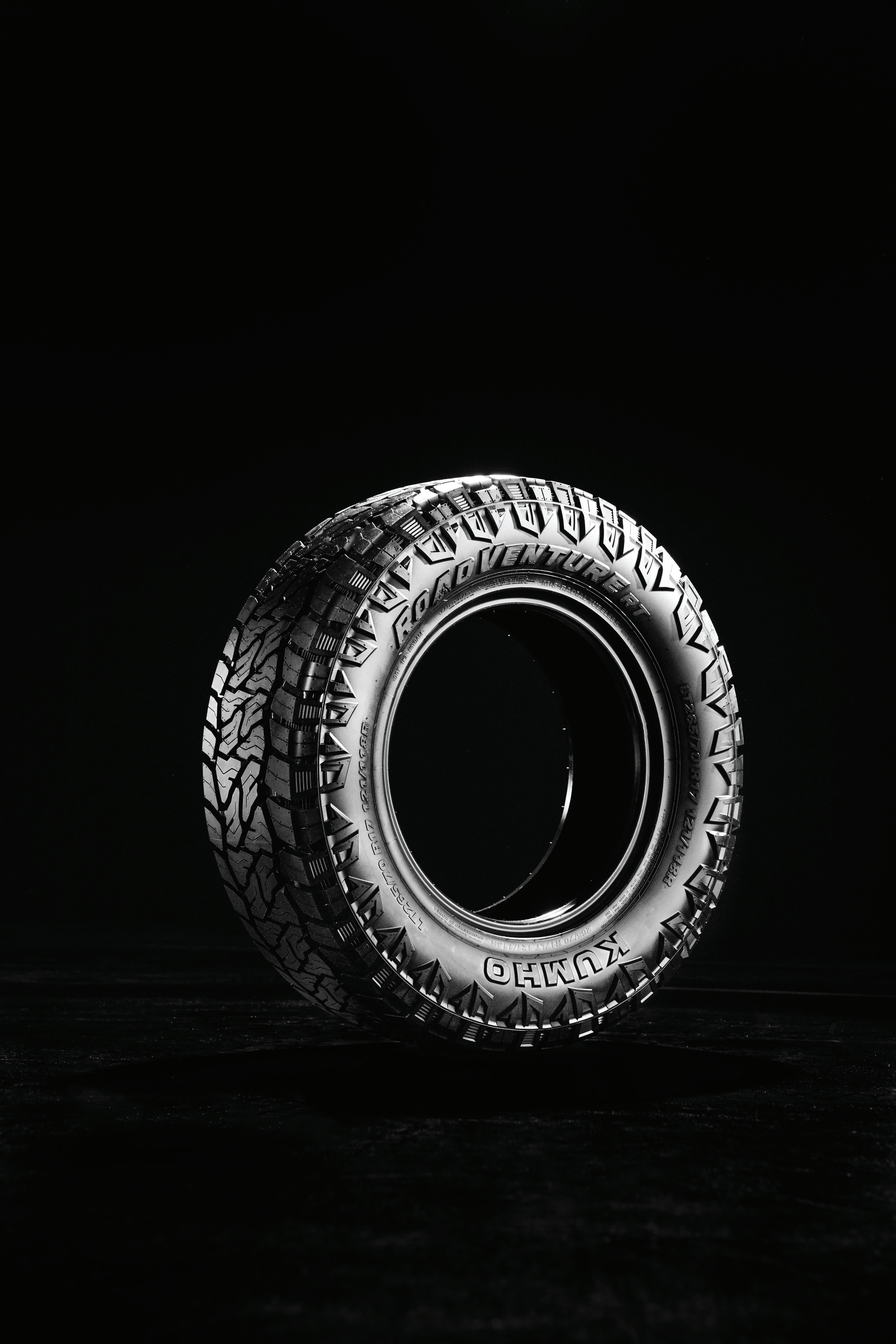
TAKING YOUR BUSINESS TO THE NEXT LEVEL IS NOW EVEN MORE REWARDING READ MORE >






TAKING YOUR BUSINESS TO THE NEXT LEVEL IS NOW EVEN MORE REWARDING READ MORE >




CALLING ALL DEALERS. ARE YOU READY TO HYPERDRIVE YOUR BUSINESS?
Delinte Tire’s NEW HYPERDRIVE Associate Dealer Program™ is here to give independent tire dealers an opportunity to put some extra cash in their pockets.


Join the HYPERDRIVE Associate Dealer Program today and start earning up to $3 per tire.
IT’S EASY. NO OPENING ORDER REQUIRED. JUST ENROLL>SELL>START EARNING.
All Delinte PCR and LTR tire models, including the new DV3 LMD AS Last-Mile Delivery tire are eligible for the rewards.
EASY MONEY HYPERDRIVE REWARDS LEVELS:
LEVEL 1 Buy 48 units - GET $1 per tire [ $192 per year ]


ENROLL TODAY TO START RECEIVING REWARDS! S N TO ENROLL
LEVEL 2 Buy 120 units - DOUBLE your rewards to $2 per tire [ $480 per year ]
LEVEL 3 Buy 240 units - TRIPLE your rewards to $3 per tire [ $2,880+ per year ]


YES! YOU CAN EARN OVER $2,880 DOLLARS A YEAR WITH HYPERDRIVE.
DISTRIBUTORS:
IF YOU WANT TO SELL DELINTE TIRES AND OFFER HYPERDRIVE REWARDS TO YOUR DEALERS, CONTACT US TODAY ON OUR WEBSITE AT DELINTETIRES.COM/ DEALER-INQUIRIES.












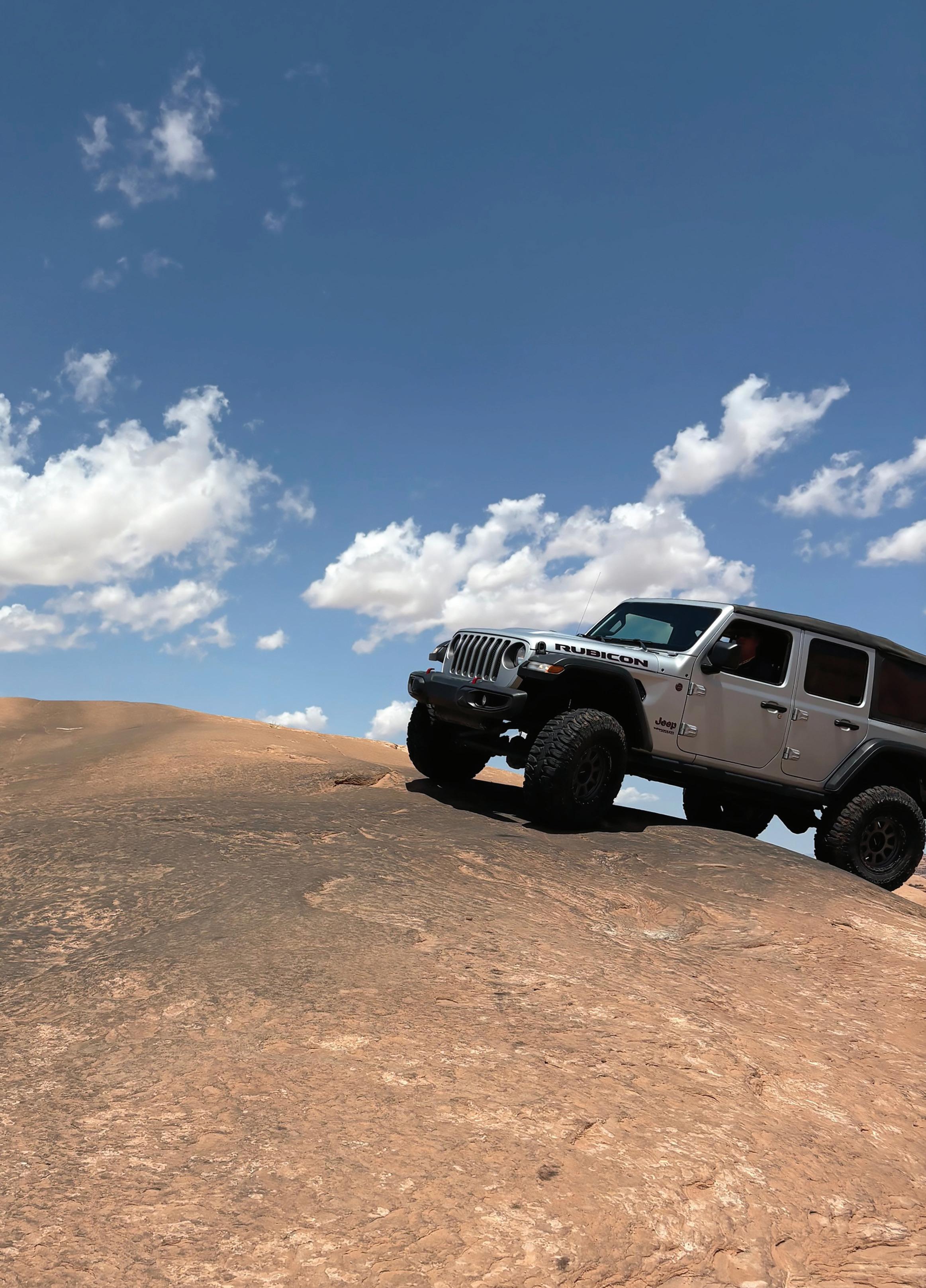
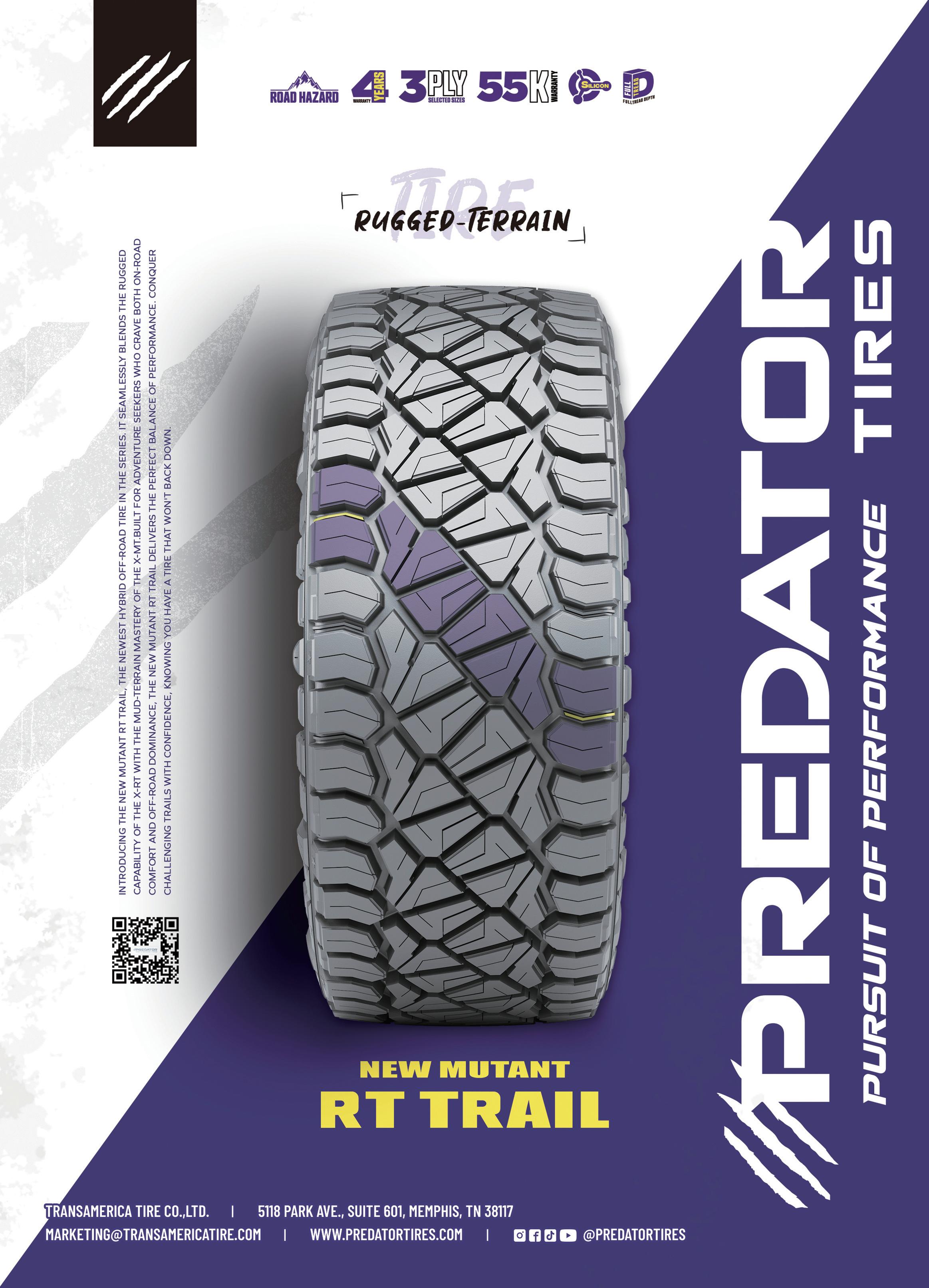







“We’re still
much
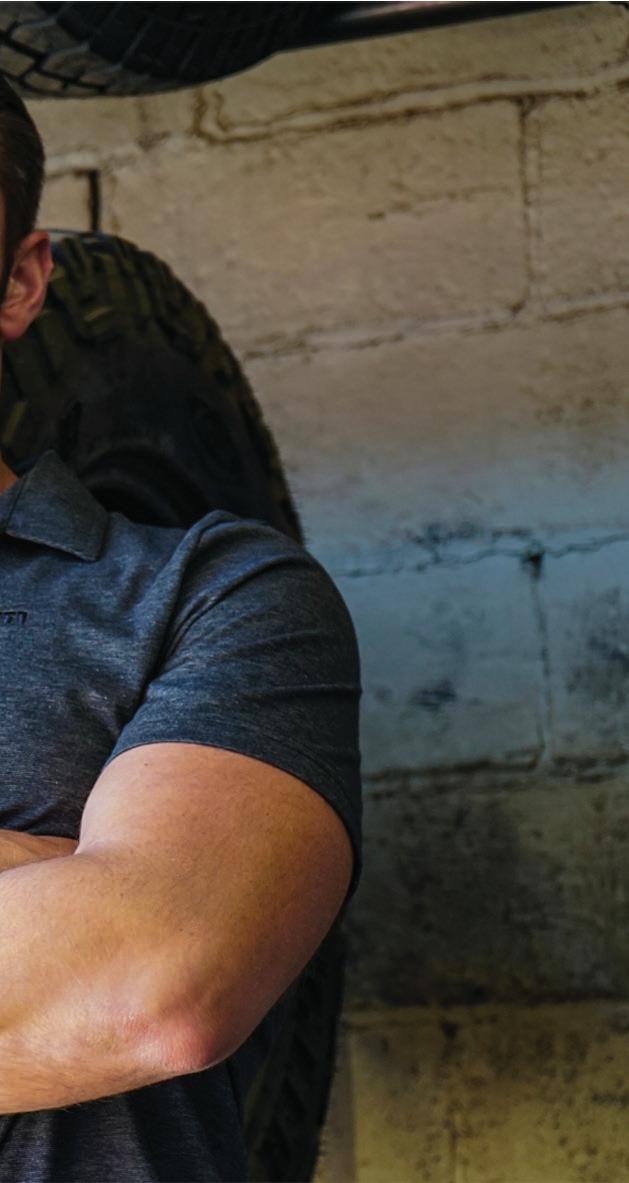
into the footprint we have,” says Tony Grace, CEO of Alma Tire Companies.



Mike Manges By
couple of months ago in this column, I wrote about a tire dealer who prefers to hire people “at warp speed” — my words, not his. The editorial elicited an email from Jason Lightbody, who runs the tire division at Houska Automotive in Fort Collins, Colo.
Jason wanted to talk about the virtues of hiring slowly — and what it takes to keep employees happy after they’re on-board.
Despite operating in a hot job market where good workers are in high demand, Houska Automotive, which employs around 50 people, moves slowly and deliberately when hiring.
“For us, the goal is to not need to hire a replacement later,” Jason explained. When interviewing candidates, “we ask as many questions as we can. We do as much social media investigating as we can. We even have team members look at candidates’ vehicles” to see how well they’re maintained.
“We take our time. Everybody gets interviewed twice. We want to know how someone will fit on our team. Whether we’re hiring for a service advisor or technician role, we have a playbook” that’s followed religiously.
The company will disqualify candidates who don’t want to work out sufficient notice with their current employers. “If we interview someone — even if they look like a good fit — and they say, ‘I can start anytime. I don’t need to give a two-week notice,’ we move past them, regardless of their credentials.”
Refusing to give notice “just tells me they’re going to do that to us down the road. I don’t want to hire somebody with the hope that I’m putting my competition at a disadvantage. We don’t go to battle that way. We want to beat them based on service. And our employees see that. They know we’re trying to get the best person we can and if it takes a little longer, that’s OK.”
Our conversation shifted to the subject of employee retention. When I asked Jason to share the secret of successful employee retention, he simply replied, “It’s love. It’s us loving our people. We give them a 401(k). We give them a very robust health care package. We pay the most competitive wages. And we want to know how they’re doing” on a personal level. “We want to know what’s going on with their kids and their spouses. It’s genuine. We encourage our people to have lives outside of work. Our owners have a townhouse in a ski town and they allow employees to go there and spend time and get away from work. We also encourage (employees) to have hobbies.
“This month, we’re taking what we call ‘tenured employees’ — employees who have been with us longer than 10 years” — via shuttle to a Colorado Rockies baseball game in Denver, some 65 miles away from Fort Collins. “We’re renting a suite for them.”
The day out has become an annual tradition at Houska Automotive. “People talk about it and new employees will say, ‘I can’t wait until it’s my turn.’”

“We take our time,” said Jason Lightbody, who runs the tire division at Houska Automotive in Fort Collins, Colo. “Everybody gets interviewed twice. We want to know how someone will fit on our team.”
Management actively seeks feedback from employees. “At Houska Automotive, you can walk into the president’s office at any time. We’re never like, ‘I’m the boss. You’re going to do what I say.’ We say, ‘What are your thoughts? How can you help?’ Fifty-four people together is a pretty smart machine.”
Jason told me that new employees are sometimes surprised at the level of care and concern Houska Automotive’s management team displays. “We have some guys who come here from other shops and they’re used to ownership-down management and finger pointing. That’s not what we do.”
Rolling out the red carpet for new employees is par for the course at Houska Automotive, according to Jason. “I took the last service advisor I hired to lunch on his first day. The next day, one of the guys he was going to start working for took him to lunch. A few days later, someone else took him to lunch. It blew his mind that any one of those guys on any one of those days would take him — a new person— to lunch.
“We didn’t go to lunch so we could milk ideas from him and discuss what his previous employer did. We already knew what those guys were doing. We wanted him to understand right from the get-go who we are.”
The average tenure of a Houska Automotive employee is 10 years. “I have a lot of guys on the tire side who’ve been with us between 10 and 15 years. Three guys have been with us longer than I have.” (Jason joined the company in 2010.)
It’s evident that Houska Automotive has developed a system that works extremely well. What’s working for you? Let us know. We’d love to hear your story. ■
If you have any questions or comments, please email me at mmanges@endeavorb2b.com.


RESOURCES FOR THE INDEPENDENT TIRE
The Modern Tire Dealer Show is available on Apple Podcasts, Spotify, iHeart Radio, Amazon Music, Audible and MTD’s website.

Sign up for Modern Tire Dealer ’s eNewsletters to receive the latest tire news and our most popular articles. Go to www.moderntiredealer.com/subscribe
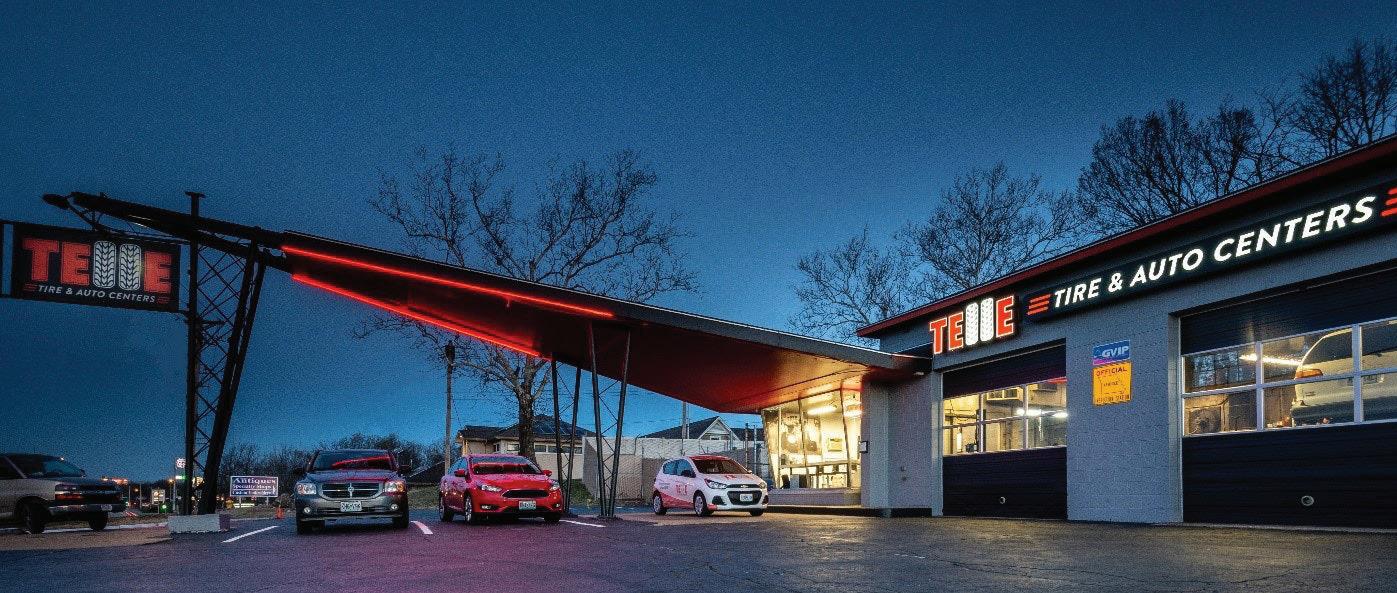
Telle Tire & Auto Centers has joined the list of independent tire dealerships that have added private equity support to their structure. That support is helping the dealership expand beyond its home base in the St. Louis, Mo., metro area.
We’re now well past the mid-point of 2025 and the economic picture remains uncertain. Yes, retail consumers are still holding back on purchases, but the water is choppy for those in the commercial world, too. Just look at how many of this past month’s top headlines touch commercial tire dealerships, including reports about new tires and new shops, plus a plant shutdown.
1. ATD discusses ‘reset’ in letter to industry
2. Michelin X Line Grip D offers more bene ts
3. Michelin announces Michelin X Multi Z2
4. Dealers: Tire demand and traf c on the decline
5. Yokohama launches premium drive tire
6. 2025 MTD 100 now available
7. Telle Tire brings on private equity partner
8. Bridgestone closes plant early
9. Tariffs create turbulence in the TBR tire market
10. Southern Tire Mart opens location in Idaho
Check out MTD ’s digital edition at the top of our website’s homepage.
SOCIAL MEDIA

Like us Facebook: facebook.com/ModernTireDealer
Follow us X: twitter.com/MTDMagazine
3515 Massillon Rd., Suite 200 Uniontown, OH 44685 www.moderntiredealer.com
PUBLISHER
Greg Smith gsmith@endeavorb2b.com (330) 598-0375
EDITORIAL
Editor: Mike Manges (330) 598-0368, mmanges@endeavorb2b.com
Managing Editor: Joy Kopcha (330) 598-0338, jkopcha@endeavorb2b.com
Associate Editor: Madison (Gehring) Hartline (330) 598-0308, mgehring@endeavorb2b.com
PRODUCTION
Art Director: Erin Brown
Production Manager: Karen Runion, (330) 736-1291, krunion@endeavorb2b.com
ACCOUNT EXECUTIVES
Darrell Bruggink / dbruggink@endeavorb2b.com
Marianne Dyal / mdyal@endeavorb2b.com
Mattie Gorman-Greul / mgorman@endeavorb2b.com
Cortni Jones / cjones@endeavorb2b.com
Diane Braden / dbraden@endeavorb2b.com
Sean Thornton / sthornton@endeavorb2b.com
Kyle Shaw / kshaw@endeavorb2b.com
Lisa Mend / lmend@endeavorb2b.com
Chad Hjellming / chjellming@endeavorb2b.com
Annette Planey / aplaney@endeavorb2b.com
MTD READER ADVISORY BOARD
Rick Benton, Black’s Tire Service Inc.
Jessica Palanjian Rankin, Grand Prix Performance
John McCarthy Jr., McCarthy Tire Service Co. Inc.
Jamie Ward, Tire Discounters Inc.
CUSTOMER/SUBSCRIPTION SERVICE (877) 382-9187
moderntiredealer@omeda.com
ENDEAVOR BUSINESS MEDIA, LLC
CEO: Chris Ferrell
COO: Patrick Rains
CRO: Paul Andrews
CDO: Jacquie Niemiec
CALO: Tracy Kane
CMO: Amanda Landsaw
EVP Vehicle Service/Repair Group and Fleet and Trailer Group: Chris Messer
VSRG Editorial Director: Chris Jones
Modern Tire Dealer (USPS Permit 369170), (ISSN 0026-8496 print) is published monthly by Endeavor Business Media, LLC. 201 N Main St 5th Floor, Fort Atkinson, WI 53538. Periodicals postage paid at Fort Atkinson, WI, and additional mailing offices. POSTMASTER: Send address changes to Modern Tire Dealer, PO Box 3257, Northbrook, IL 60065-3257. SUBSCRIPTIONS: Publisher reserves the right to reject non-qualified subscriptions. Subscription prices: U.S. ($81.25 per year). All subscriptions are payable in U.S. funds. Send subscription inquiries to Modern Tire Dealer, PO Box 3257, Northbrook, IL 60065-3257. Customer service can be reached toll-free at 877-382-9187 or at moderntiredealer@omeda.com for magazine subscription assistance or questions. Printed in the USA. Copyright 2025 Endeavor Business Media, LLC. All rights reserved. No part of this publication may be reproduced or transmitted in any form or by any means, electronic or mechanical, including photocopies, recordings, or any information storage or retrieval system without permission from the publisher. Endeavor Business Media, LLC does not assume and hereby disclaims any liability to any person or company for any loss or damage caused by errors or omissions in the material herein, regardless of whether such errors result from negligence, accident, or any other cause whatsoever. The views and opinions in the articles herein are not to be taken as official expressions of the publishers, unless so stated. The publishers do not warrant either expressly or by implication, the factual accuracy of the articles herein, nor do they so warrant any views or opinions by the authors of said articles.















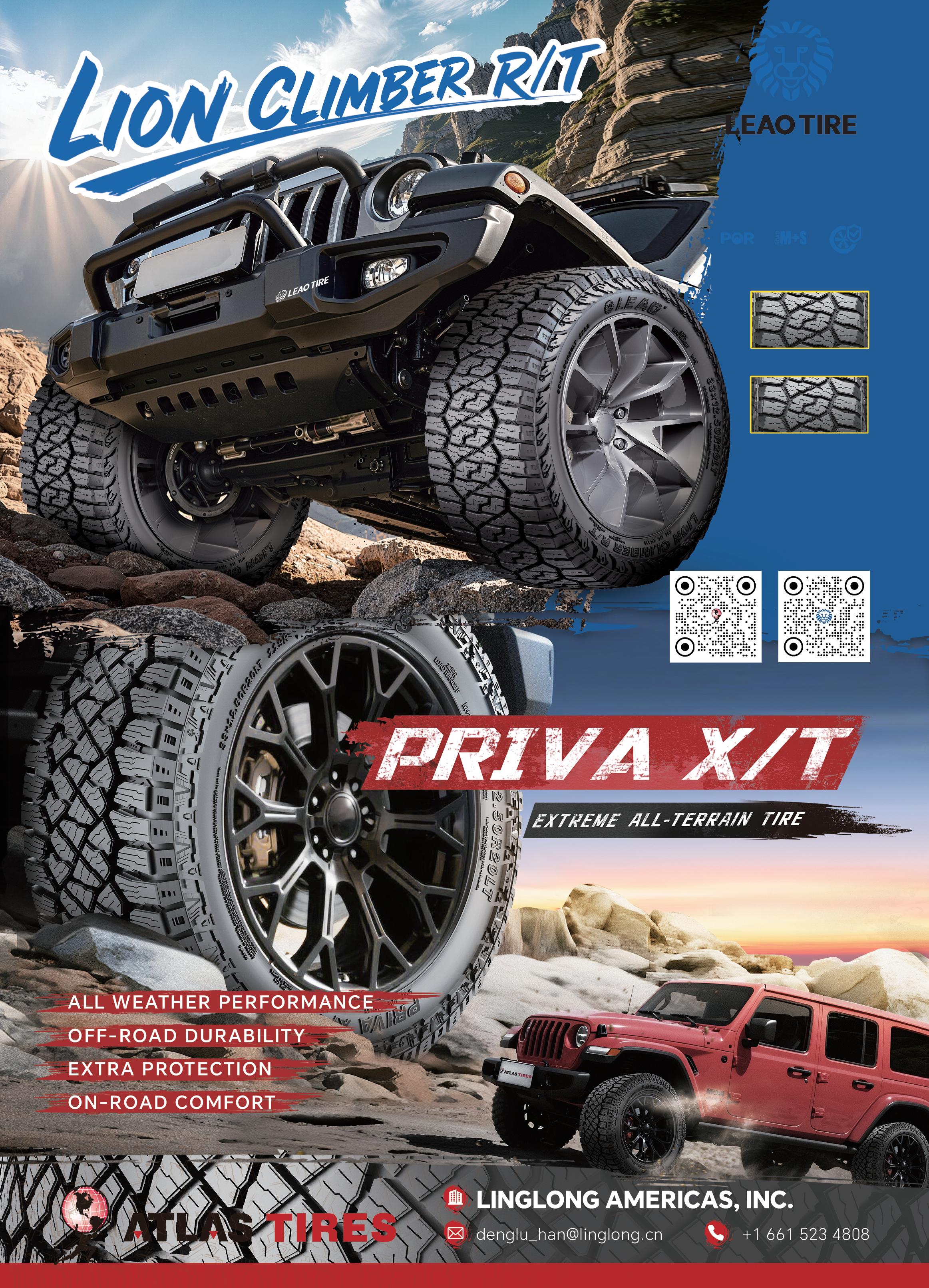

Yokohama TWS plans to supercharge the growth of its Mitas ag tire brand by making substantial investments on several fronts.
“Our desire is to double our sales of the Mitas brand in the aftermarket and attain similar levels we enjoy in the original equipment space,” said Lawrence Harmon, regional president, North Central America, Yokohama TWS, before MTD recently toured the company’s Mitas ag tire plant in Charles City, Iowa.
“To achieve this, we will further develop our dealer network — choosing the right partners that can best articulate the brand’s value proposition. It is our responsibility to work with these dealers to equip them with the knowledge and tools to best represent this brand in the market.
“We are continuously working on new marketing programs, focusing on growing demand for Mitas products to support our dealer network,” Harmon continued. “This year, for example, we will launch our Mitas Traction Rewards dealer program, which offers incredible advantages for its members and training for our aftermarket partners. Product development is also a key part of our growth strategy, with new and exciting sizes to grow Mitas in the marketplace.”
Mitas and Trelleborg “are the two major brands” within Yokohama TWS’ ag tire portfolio. Both are “focused on performance,” with Mitas sold as “a premium ag tire” at a “competitive” price point, according to Andrea Masella, marketing director, NCA agriculture, Yokohama TWS.
The Charles City plant, now Yokohama TWS’ only manufacturing facility in North America, will be a critical component of Mitas’ growth. (The company shuttered its Trelleborg ag tire plant in South Carolina during the first quarter of 2025.)
“Since becoming part of the Yokohama group, the Mitas plant ... has seen three major capital investments, with a fourth scheduled for installation in the

Yokohama TWS’ Mitas ag tire plant in Charles City, Iowa, will play a critical role in the further growth of the Mitas brand, say Yokohama TWS officials. Pictured are first shift workers at the plant, which opened in 2012 and manufactures radial tires for a wide range of agricultural applications.
Photo: MTD
third quarter of 2025,” said Dietrich Riedemann, the facility’s manager. “We have made many upgrades and additions” to the 13-year-old facility.
“Looking ahead, we have more advancements scheduled. At the Charles City plant, we are consistently focused on increasing capacity and optimizing our product mix, with a strong emphasis on efficiency.”
The plant focuses on producing radial tires for a wide range of agricultural applications.
“While our daily output varies based on product mix and market demand, we currently have sufficient capacity to meet demand across” multiple distribution channels, Reidemann told MTD. “We’re fortunate to have a highly skilled and adaptable workforce that can operate efficiently during both high- and low-volume periods.”
While boosting output is a critical pillar of the plant’s long-term objectives, “we are equally focused on maintaining efficiency and competitiveness in all market conditions. Our goal remains the same: to deliver high-quality products, optimize resources and offer the best value to our customers — all while keeping
Mitas pricing competitive with overseas manufacturers.”
The Charles City plant’s location also provides Yokohama TWS with another strategic advantage, according to Tom Rodgers, commercial director, NCA agriculture, Yokohama TWS.
“I think if the last five years have taught us anything, it’s that supply chain disruption is both unpredictable and inevitable. It is costly and creates significant headaches for dealers, farmers and OE producers. By near-sourcing, we can significantly reduce any of the risks” associated with tariffs and supply chain disturbances.
This localized strategy also enables “faster market response and agricultural practice adaptation,” while enhancing shipping efficiency “and access to high-quality, specialty tires without international levies,” said Rodgers.
The Mitas brand’s growth plans are one component of parent firm Yokohama Rubber Co. Ltd.’s global strategy, said Harmon. “Yokohama has continued to invest heavily in the off-highway tire market. We are fully committed to the market and see wonderful opportunities in the future.” — Mike Manges

Bridgestone Americas Inc. ended operations at its LaVergne, Tenn., plant nearly a month before the factory was scheduled to close. Operations at the truck tire plant ceased July 2, ahead of the July 31 schedule. The closure affected 700 employees. LaVergne was one of two Bridgestone TBR tire plants in the U.S.
American Kenda Rubber Co. Ltd.’s newest distribution center — a facility in Henderson, Nev. — opened in April and is fully operational. It is stocking passenger, light truck and S/T radial tires and shipping to customers in the western regions of the U.S.
Sailun Group Co. Ltd. has bought a shuttered truck tire plant in China from Bridgestone Corp. for $36.9 million. Bridgestone had closed the plant after announcing in February 2024 that it was pulling out of the commercial tire business in China.
Continental Tire the Americas LLC has appointed Wyatt Hamilton Sr. as the new director of sales for the company’s truck tire replacement division in the U.S. Hamilton has been with Continental’s truck tire team for the last 20 years.
Sun Auto Tire & Service Inc. has entered the Tennessee market via the recent acquisition of Barrett’s Tire, a business established in 1951 and located in Dover, Tenn. Sun Auto also bought Miller’s OK Tire in Columbus, Miss.
TGI offers Yokohama Tire Group International LLC (TGI) has announced it will be an authorized distributor for Yokohama tires in Florida, Oregon and Washington. TGI will also offer the Yokohama Advantage Program for retailers.
On June 30, American Tire Distributors Inc. (ATD) issued an open letter to the tire industry, which reads as follows:

“ATD now operates with a clean balance sheet, sufficient liquidity and the full endorsement of our ownership group,” the company said.
Photo: ATD
“To Our Industry Partners, Customers, and the Tire Community, Over the past several months, American Tire Distributors has navigated one of the most significant transitions in our company’s history. Recent shifts in our vendor portfolio mark a significant moment in our journey. We recognize the impact these changes have had on our customers, partners, and the industry — and we meet this moment with transparency, urgency and resolve.
“Today, we stand united and forward-looking, backed by a world-class team, a resilient and fully supportive vendor network, a committed ownership group and a board of directors that believes deeply in our mission. Together, we are not simply responding — we are rebuilding, reinvesting, and redefining our role in the marketplace.
“ATD now operates with a clean balance sheet, sufficient liquidity and the full endorsement of our ownership group. This financial flexibility allows us to invest in people, infrastructure and innovation at a time when others are constrained. Our strategy includes working hand-in-hand with all of our loyal manufacturer partners to fill product voids with compelling, high-quality offerings across every segment. These partners appreciate the important role ATD plays in our industry, for customers and vendors alike.
“Our service model will remain unchanged and centers on operational precision. We are doubling down on inventory availability, service reliability and order accuracy — areas where we have and will lead. Our investments in logistics technology, automation and data analytics will enable us to continue serving customers faster and smarter than ever before. Every decision we make begins with the customer in mind. We are investing in field teams, tools and programs designed to help our customers grow their businesses — because our success is measured by theirs.
“We welcome the questions and undestand why they are being asked. We’re confident in our answers and the solutions we’re shaping, grounded in performance, strengthened by partnerships and driven by perseverance. This is not a return to business as usual. This is a reset of who we are and how we lead.
“To our loyal and valued customers: Your resilience, trust and entrepreneurial spirit define this industry. We are here to help you grow and thrive — with better service, better programs and better alignment. We will continue to earn your business each day, product by product, delivery by delivery.
“To our Tire Pros franchisees: You are a vital part of our future. We remain fully committed to supporting your businesses with a stronger platform, more integrated resources and an enhanced customer value proposition.
To our vendor-partners: We will be the distributor who delivers volume, value, growth and long-term alignment. To our team: We’ve built a culture defined not by adversity, but by how we rose from it. Stay proud. To the press and industry analysts: This is a pivotal time for ATD. What happens next will be defined not by recent events, but by the strength of our response and the power of our partnerships. We are not retreating, we are accelerating. This is a bold reset grounded in operational excellence, customer focus and financial strength. With the support of our team, partners and stakeholders, we are building something better. More focused. More flexible. More committed to helping our customers succeed than ever before.”
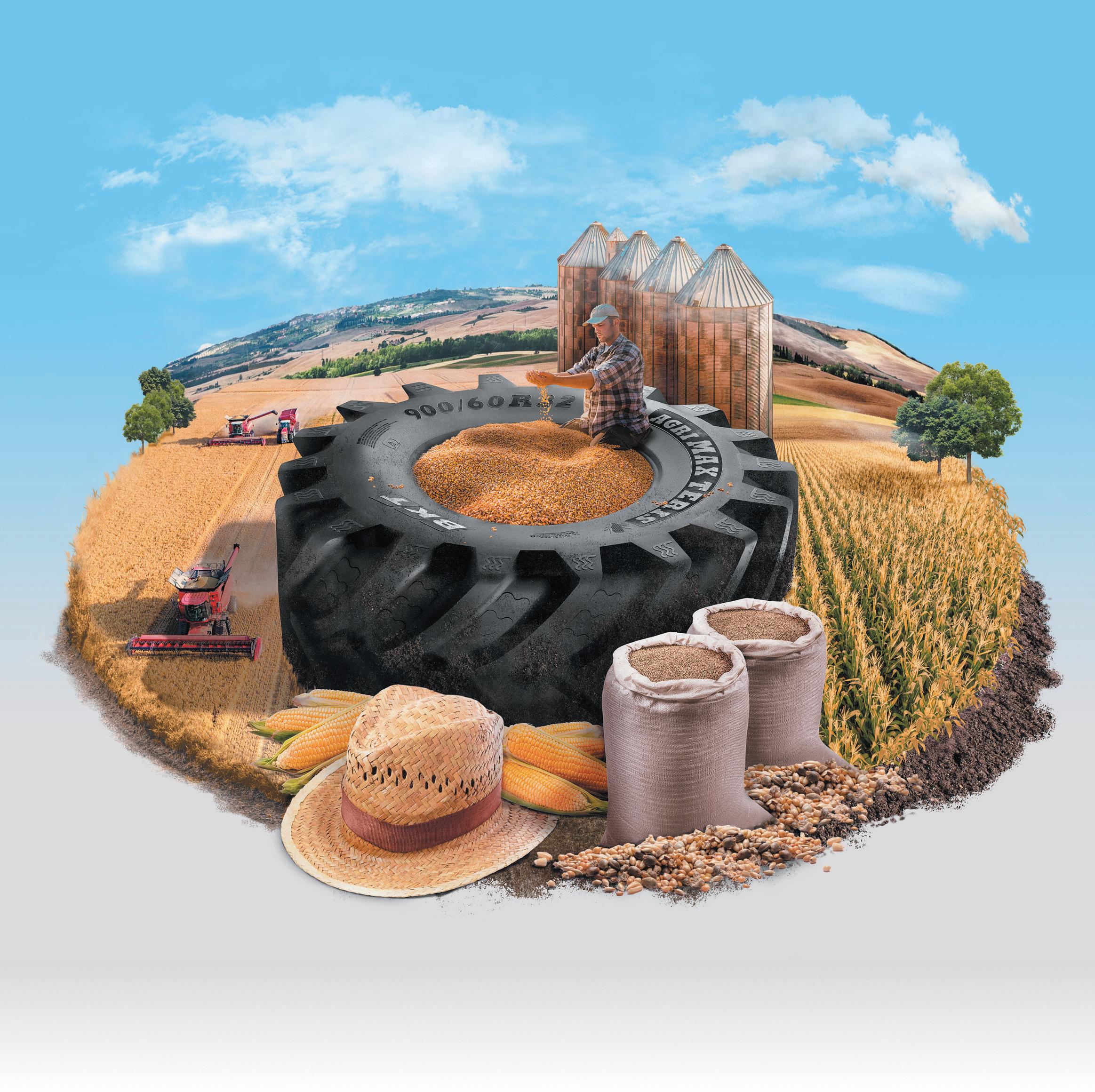

No matter how challenging your needs, AGRIMAX TERIS is your best ally for all harvesting operations. This radial tire actually combines extraordinary traction and high load capacity with outstanding stability. Thanks to its special compound, the reinforced shoulder and bead, AGRIMAX TERIS provides a high level of puncture resistance as well as great handling and driving comfort.
AGRIMAX TERIS is BKT’s response for combined harvesters providing best performance without damaging your crops.
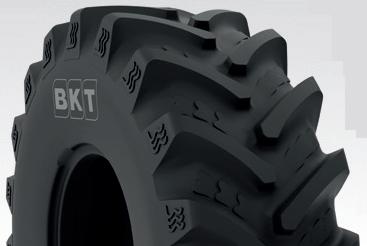

Office: (+1) 330-836-1090
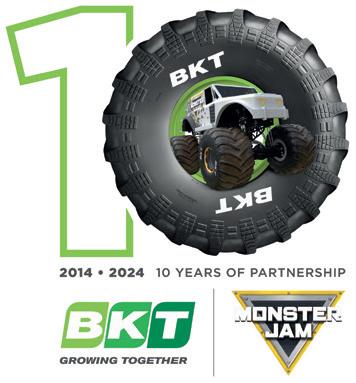
Southern Tire Mart at Pilot (STMP) added fi ve locations during the second quarter. They are located in Red Oak, Texas; Austinburg, Ohio; Emlenton, Pa.; Limon, Colo.; and Wichita Falls, Texas. The STMP network includes more than 80 locations, with plans to reach 100 stores by the end of 2025.
Straightaway Tire & Auto’s Victory Tire & Auto brand has acquired Pod’s Complete Care, its 19th location in the greater Minneapolis, Minn., market. The eight-bay shop in White Bear Lake has the potential to expand its footprint and team for additional business.
The Wheel Group (TWG) named Wade Kawasaki its new CEO, effective Aug. 1. Kawasaki has served as the distributor’s executive chairman since 2022, working with TWG’s leadership team and financial partners to help shape the firm’s strategy. Kawasaki previously served as president and CEO of The Coker Group.
S&S Tire Inc.’s core leadership team recently got together at the University of Kentucky’s football stadium to focus on one of the Lexington, Ky.-based dealership’s core values: developing and supporting employees. Key leaders representing the company’s wholesale, commercial, sales and operations functions spent the day reviewing metrics and creating best practices.
Grand Rapids, Mich.-based GreatWater 360 Auto Care has acquired Hubbell’s Auto Repair in Marion, Iowa, and also opened a Belden’s Automotive & Tires store in San Antonio, Texas. Hubbell’s Auto Repair will retain its name, but will have access to tools, training, technology and GreatWater’s peer network support.
Fitment Group has launched a new, web-based tire price trend dashboard. e dashboard is available now “at no cost to industry professionals and interested users,” according to Fitment Group o cials.
“ is dynamic platform is designed to deliver insights into retail tire pricing trends across the United States, o ering a powerful data driven resource during a time of rapid market change.
“ e dashboard provides users with data-driven views of tire price uctuations over four key time intervals: the past 12 months, six months, three months, and one month. Drawing from a curated subset of more than 11 million unique online advertised price points, the platform updates weekly to ensure timely and accurate tracking.
“Users can explore pricing trends by popular tire sizes, leading brands, and tiered segments, allowing for easy comparative analysis and insights.”
To further enhance usability and interpretation, Fitment Group has integrated articial intelligence-generated summaries into the platform. “ ese summaries provide high-level overviews and key takeaways within the three main segmentation categories, helping users quickly interpret complex data patterns.”
“Fitment Group has been monitoring and analyzing retail tire prices for over a decade,” says J.P. Brooks, chief revenue o cer at Fitment Group. “In light of current economic uncertainties, we wanted to give back to the industry by o ering a resource that helps businesses stay informed and responsive to shi ing market dynamics.”
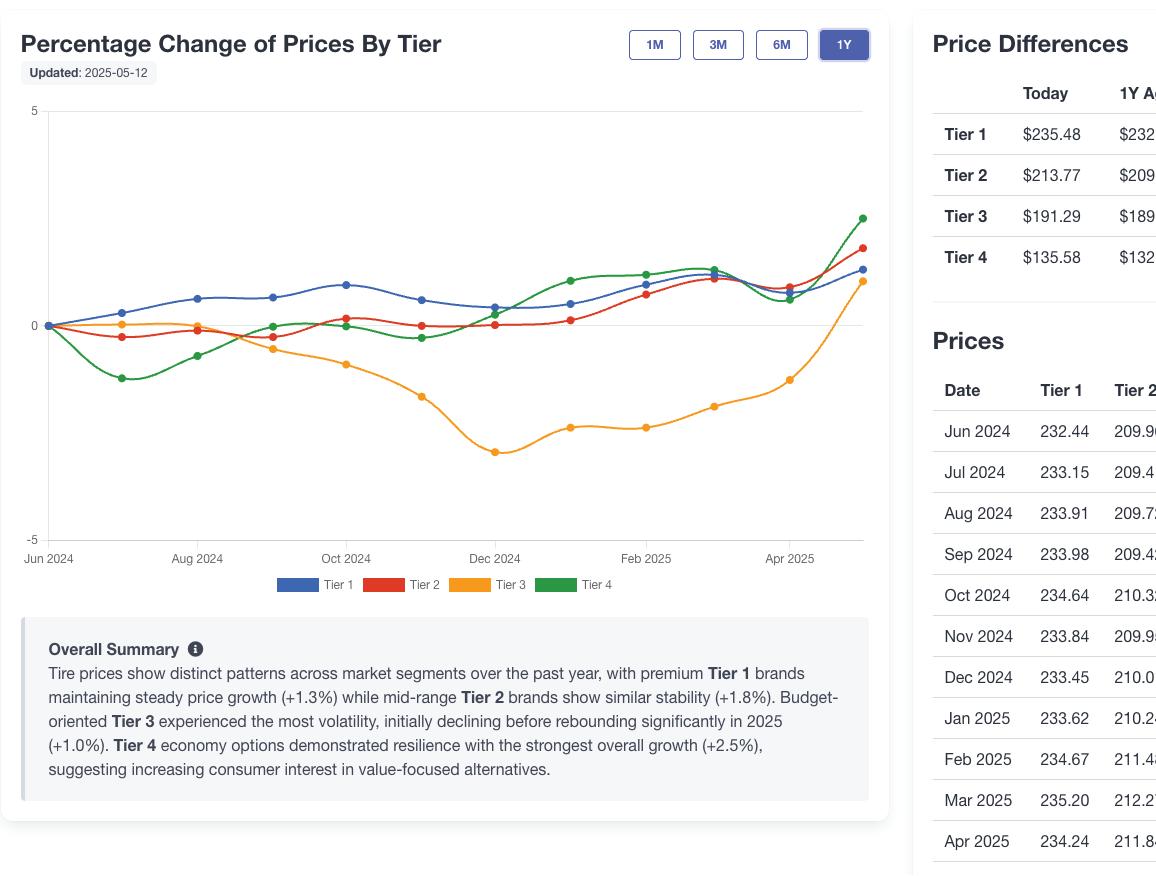

Users of the Fitment Group’s new dashboard can follow pricing trends by tire size, tire brands and/or product tiers.
Hankook Tire America Corp. announced a number of executive leadership changes across its sales and marketing organizations.
Kyuwang (Ken) Cho has been named senior vice president of North America marketing, transitioning from his dual role overseeing PC/LT sales and marketing. Previously, Cho served as vice president of global sales for Hankook Tire in Korea.
K.C. Jensen has been named vice president of U.S. PC/LT sales, expanding his responsibilities from the Western region to a national scope. Jensen joined Hankook in 2018 and “has been instrumental in leading strategic initiatives and enhancing growth strategies in the U.S. market,” according to Hankook o cials.
Mark Roe returns to Hankook as vice president of U.S. TBR sales, including supervision of the company’s replacement and OE sales team. Previously, Roe held leadership positions at American Omni Trading Co., Hankook and, most recently, was vice president of sales at Ralson Tire North America.
“ ese leadership appointments re ect Hankook’s strong momentum in North America,” says Rob Williams, president of Hankook Tire America Corp.











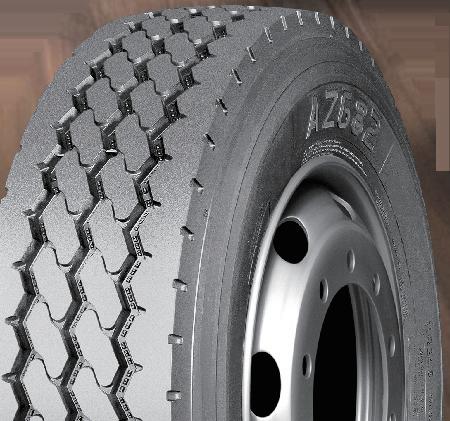

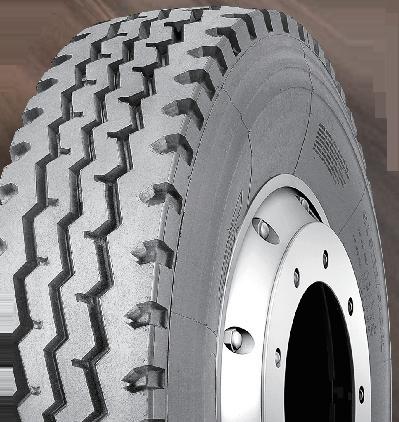
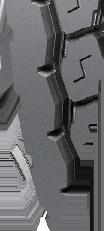
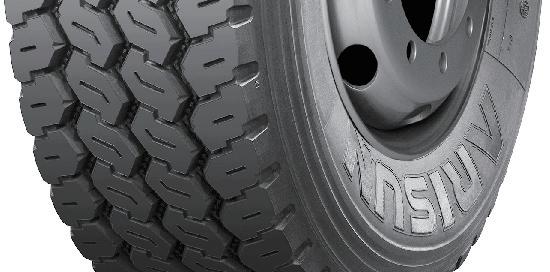






















The new Radar Dimax All Weather tire from Omnisource will be available exclusively through www. TireRack.com. The tire’s lineup covers passenger cars, crossovers and SUVs and fits wheels ranging from 14 inches to 18 inches.
Bridgestone Retail Operations LLC plans to open its first Firestone Complete Auto Care tire and automotive service center in the state of Maine by mid-August. The new store in Biddeford is designed to offer customers a modern service, including digital displays and new automotive technologies.
Turbo Wholesale Tires LLC has launched an all-inclusive rewards program under its Lexani brand for the Lexani, Lionhart and Rolling Big Power tire lines. The rollout of the program includes LexaniShop. com, where each brand’s literature, point-of-sale materials and apparel are available and redeemable with program points.
Fountain Tire has expanded its retreading operation after acquiring the Benson Tire retread plant in London, Ontario. The facility spans 20,000 square feet and has the capacity to manufacture more than 30,000 retreads annually. It’s Fountain Tire’s fifth retread facility.
Yokohama TWS’ Interfit material handling tire and wheel services business has acquired Chicago, Ill.-based Industrial Tire Solutions (ITS). Founded in 2006 by Mike Pollini and the late Charlie Cohen, ITS provides on-site tire fitment.
Joel “Jody” Hickman, co-founder of Oak Hill, Ohio-based H&H Industries, died on July 20 at the age of 74.

Les Schwab Tire Centers Inc. has acquired Staley’s Tire & Automotive, a two-location dealership based in Billings, Mont. The acquisition gives Les Schwab three stores in Billings.
“Les Schwab Tires started in a small town in 1952 and communities like Billings have helped us get to be the company we are today,” says Matt Campbell, Les Schwab area manager.
“Our commitment to customer service is grounded in our core values of honesty and dedication to the communities where we live and work. We are excited to carry forward the 40-year legacy of Staley’s Tire & Automotive and continue serving the Billings area.”
Staley’s Tire & Automotive opened in 1985. The family-owned business ran a commercial tire center on South Frontage Road in Billings and a retail outlet located on Central Avenue. Together, the stores employ 26 people, all of whom are expected to stay with Les Schwab.
“In preparation for the official store opening today, July 28, both locations underwent light conversion updates,” say Les Schwab officials. “The Central Avenue location received a modest remodel ahead of the opening, with a full renovation planned for 2026. The South Frontage Road store also saw light upgrades, with a comprehensive remodel scheduled for September.”
“We’re thrilled to join the Les Schwab Tires family and gain the resources to better serve our customers and community,” says Harry Staley, founder of Staley’s Tire & Automotive. “That’s been our mission for more than four decades and we see a real alignment between our values and Les Schwab’s commitment to small-town service that puts the customer first.”
Houston, Texas-based Beasley Tire Service has named Michael Beasley its new president in a move that will support the dealership’s growth plans.
“Michael began his career at Beasley Tire at the age of 13, working during the summers and on weekends,” say Beasley Tire officials. “After receiving his business degree from Sam Houston State University in 2003, Michael took on the role of sales manager. For the last 15 plus years, Michael has been the vice president and COO of the company.
“As president, Michael will assume all responsibilities for the daily operation of the company, continuing to lead the company alongside his father, Bob Beasley, who will retain the position of CEO.”
Michael represents the third generation of the family business, which was founded by E.B. Beasley Sr. in 1968.
“Beasley Tire has grown from a single location in 2005 to commercial/retail locations covering central and southeast Texas.”
The dealership also is a Michelin retreader.
The Tire Industry Association (TIA) has opened voting for its 2025-2026 board of directors election. Five seats are available for this year’s board — four for a three-year term and one for a two-year term. Two incumbents are among the nine candidates on the ballot. TIA members may cast their votes by mail-in ballot or online at TIA’s website, www.tireindustry.org. Voting will close on Sept. 1, 2025.






Relevant statistics from an industry in constant motion
27.1%
Share of service shops in 2025 with posted labor rates below $100 an hour
Source: IMR monthly repair shop surveys
Photo: 15903754 © Linda Johnsonbaugh | Dreamstime.com


$435 BILLION

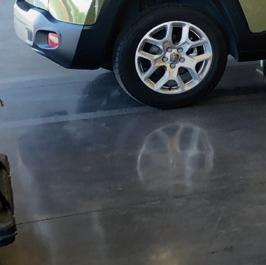

Forecasted amount consumers will spend to repair and maintain their vehicles this year


Source: Auto Care Association and MEMA Aftermarket Suppliers 2025 forecast Photo: 123082584 © Mbr Images | Dreamstime.com


$4,275


7,110











Number of outlets operated by the ve largest independent tire dealerships in the U.S.










Source: 2025 MTD 100
Photo: Discount Tire














e average added cost of tari s on each new vehicle sold
Source: J.D. Power July 2025 forecast Photo: 297466335 © Bill H | Dreamstime.com
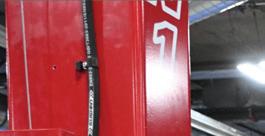


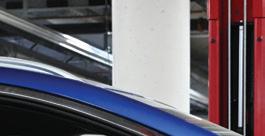







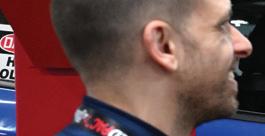


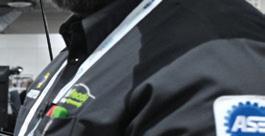







172,731



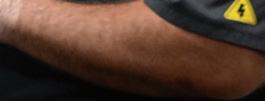

Total number of automobile technicians who are ASE-certi ed
Source: National Institute for Automotive Service Excellence
Photo: AAPEX






ENROLLMENT IS NOW OPEN!




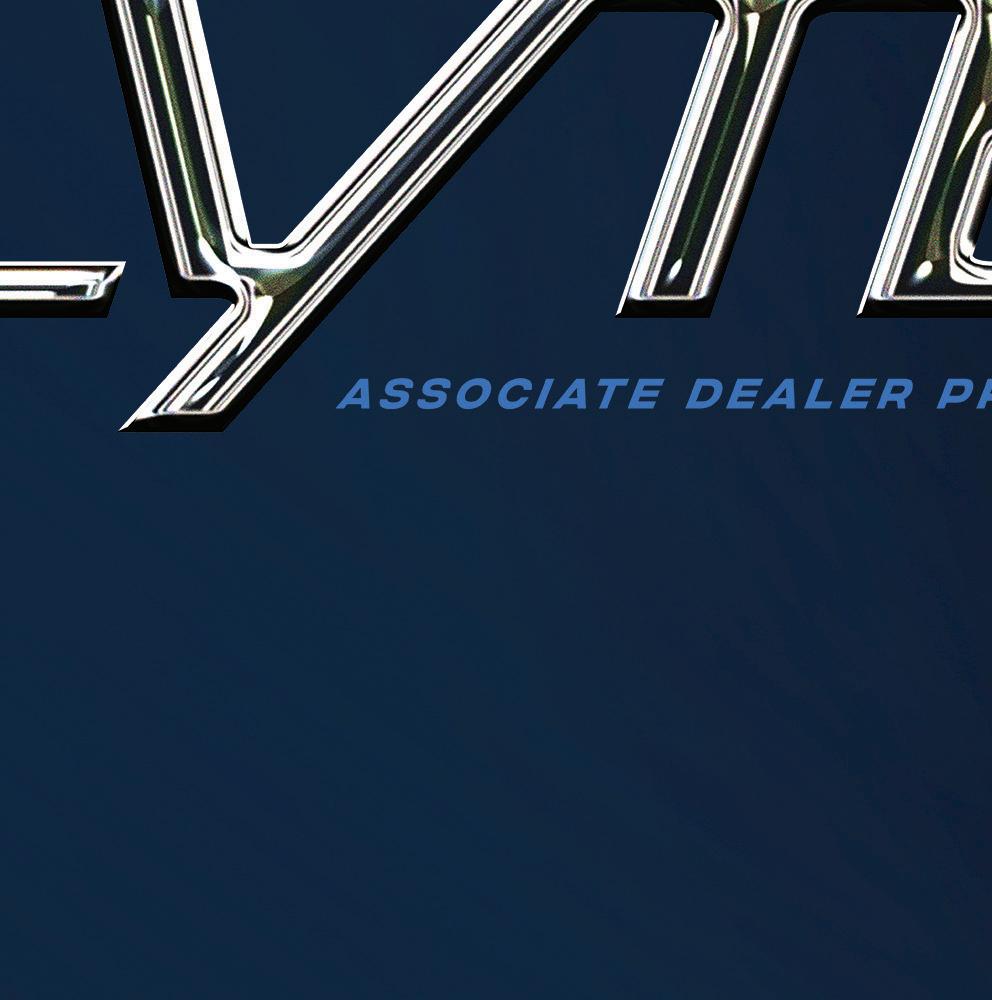
LANDSAIL TIRES IS EXCITED TO ANNOUNCE THE LAUNCH OF THE NEW ELYTE ASSOCIATE DEALER PROGRAM™.





INDEPENDENT TIRE DEALERS WHO SIGN UP NOW AND PURCHASE FROM AN AUTHORIZED LANDSAIL DISTRIBUTOR
CAN EARN UP TO $3 PER TIRE, SHOWCASING OUR COMMITMENT TO REWARDING YOUR DEDICATION AND PARTNERSHIP WITH THE LANDSAIL BRAND.
No opening order required - just sign up and start earning!
PAYOUTS ARE AS FOLLOWS
Level 1: Minimum 48 units - $1.00/tire
Level 2: Minimum 120 units - $2.00/tire
Level 3: Minimum 240 units - $3.00/tire


ANNUAL PAYOUT POTENTIAL
Level 1: $192
Level 2: $480
Level 3: $2,880+
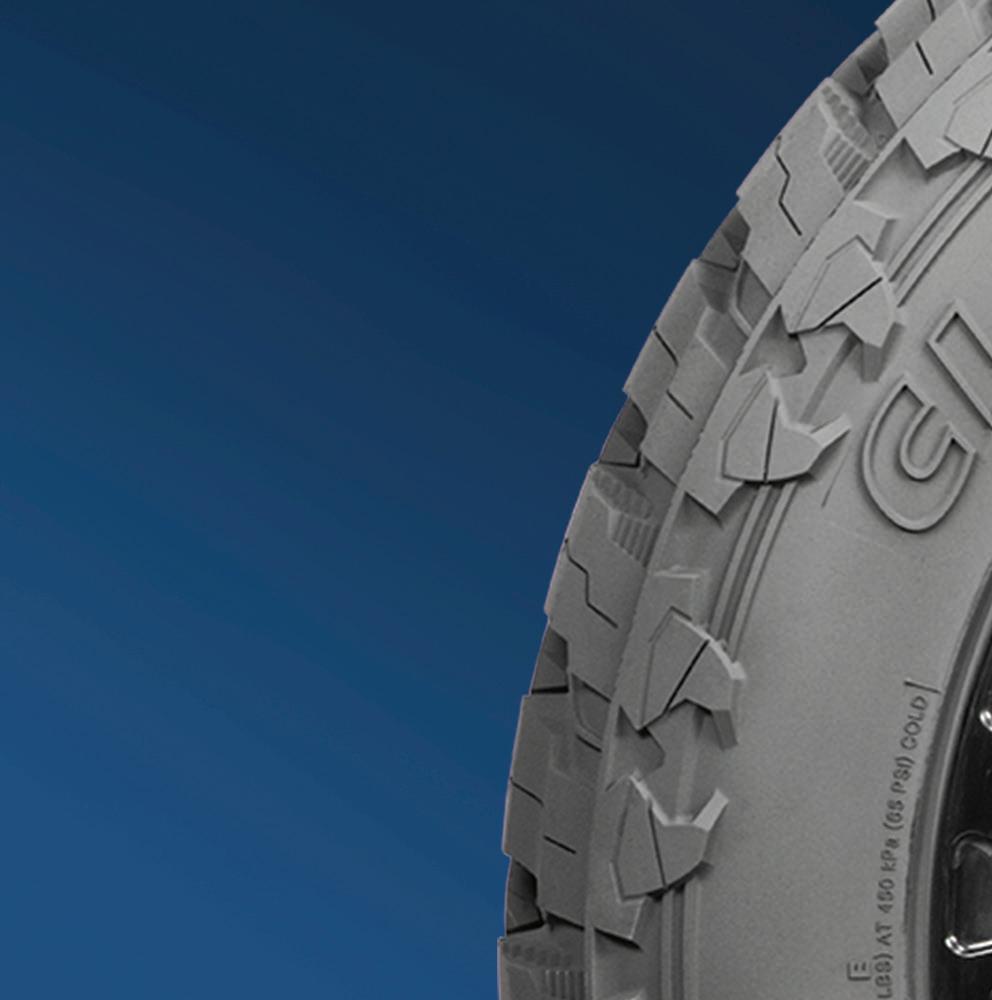

DISTRIBUTORS









If you want to sell Landsail Tires and offer ELYTE rewards to your dealers, contact us today on our website at LANDSAILTIRES.COM/dealer-inquiries.


John Healy By
ealers indicate that retail sellout trends were up in June, which marks an unexpected improvement compared to recent months. It was a small gain — of 1.7% — but it’s an improvement nonetheless from recent declines, including a 1.4% drop that was reported in May. Trends have been flat to slightly down compared to the second quarter of 2024.
Looking closer at volume on a regional basis, the Northeast and Midwest both saw mid-single-digit volume growth, while other regions saw positive trends, too. The Mid-Atlantic region reported the weakest numbers, with a decline of 1.3% year-over-year. From our view, it appears the onset of summer drove a slight increase in consumer tire replacement.
Miles driven also took a turn into positive territory in June, with trends up by low single digits. That follows slightly negative numbers in May. But the early look at July shows the month got off to a slow start, with the first week down 1.5% against a soft comparison of 1.8% growth from July 2024. So even while demand may have firmed up a bit, we note that increases in tire pricing are also likely shifting the landscape in buyer behavior.
Dealer feedback does note that tire prices are starting to inch higher against tariffs, which are seen as the main cause of price increases. Dealers say those tariffs are further accelerating consumer
trade downs to more affordable, lowertier tire brands.
Even while dealers note increasing tire prices, the basket of raw materials needed to build a basic replacement tire dropped 3.3% during June and increased 1.3% from May levels. We note this decline follows a 2.6% year-over-year average increase during the first quarter of 2025. The results so far add up to a 4.2% year-overyear decrease for the second quarter and a sequential 3.9% drop from the first quarter.
Oil prices have shifted the most dramatically, falling 13.8% year-over-year in June. Natural rubber costs dropped 3.1%, while carbon black prices fell 6.4% year-over-year and tire fabric/cord costs dipped 6.5%. Synthetic rubber was the one input to experience a price hike, with a 1.65% increase in June.
As we’ve noted previously, given the price acceleration of 2024 and the rapid deceleration in 2023, it’s not surprising to see raw material prices moderate on a year-over-year basis. We continue to see 2025 as a year of ongoing moderation, with some potential declines in mix as the index laps year-over-year increases. The big picture points to a welcome shift toward stability for the industry.
Dealer commentary suggests consumer demand for passenger and light truck
replacement tires was up low single digits in June, compared to year-ago comparisons. Forty-four percent of our independent tire dealer contacts reported positive demand trends, an improvement from the 25% who saw increases in May. And while consumer deferment has generally persisted, June saw a modest uptick in tire replacements as favorable weather conditions encouraged some buyers to move forward rather than delay the purchase.
Of the consumers who were purchasing, we do note that buyers continued to largely prefer tier-three tires to tier-one and tier-two options.
Looking at the best and worst performers in our replacement tire survey from a mix point of view, tier-three brands were once again the most in-demand at the retail level. This marks the 13th month out of the last 14 where tier-three tire brands were the most sought after in the consumer market.
Historically, tier-two tire brands have been the most in demand in our decade of surveys. But in June, tier-two tires were in second place and tier-one products were at the bottom of our rankings. Interestingly, a year ago, we were in the same position, with both May 2024 and June 2024 shoppers picking the same mix. We continue to believe that the consumer in the market right now is looking for high-value tires at the lowest possible cost. Consumers wallets’ are stretched thin and tariffs are still weighing heavily on their minds and purchasing decisions. ■
John Healy is a managing director and research analyst with Northcoast Research Holdings LLC, based in Cleveland, Ohio. Healy covers a variety of subsectors of the automotive industry. If you would like to participate in the monthly dealer discussions, contact him at john.healy@ northcoastresearch.com.


Every tire gets balanced. What are you using? Choose the perfect weight. Choose Perfect.
By Mike Manges
Rugged-terrain (R/T) is one of the fastest-growing segments in the light truck tire category. That trajectory is expected to continue as more consumers seek the blend of attributes that R/T tires provide, according to tire manufacturers and other suppliers.
“The rugged-terrain — or R/T — segment continues to be a distinct and growing category of the light truck tire market,” says Brandon Stotsenburg, vice president, automotive division, American Kenda Rubber Co. Ltd. “When the segment was initially developed, it represented growing hybrid light truck tire applications bridging the traditional A/T (all-terrain) segment and the more distinctive M/T (mud-terrain) segment intended for offroad use with more friendly on-road noise and ride. Many


I’ve been running the Nexen Roadian ATX on my Pro Spec truck for years, and they’ve never let me down. Whether it’s hardpack, deep ruts, or flying through the air over 150ft, the traction and reliability stays consistent lap after lap. They’re built tough and take the punishment of shortcourse racing, and that allows me to put these tires on top of the box every race weekend.”
Chris Van Den Elzen | VDE Racing
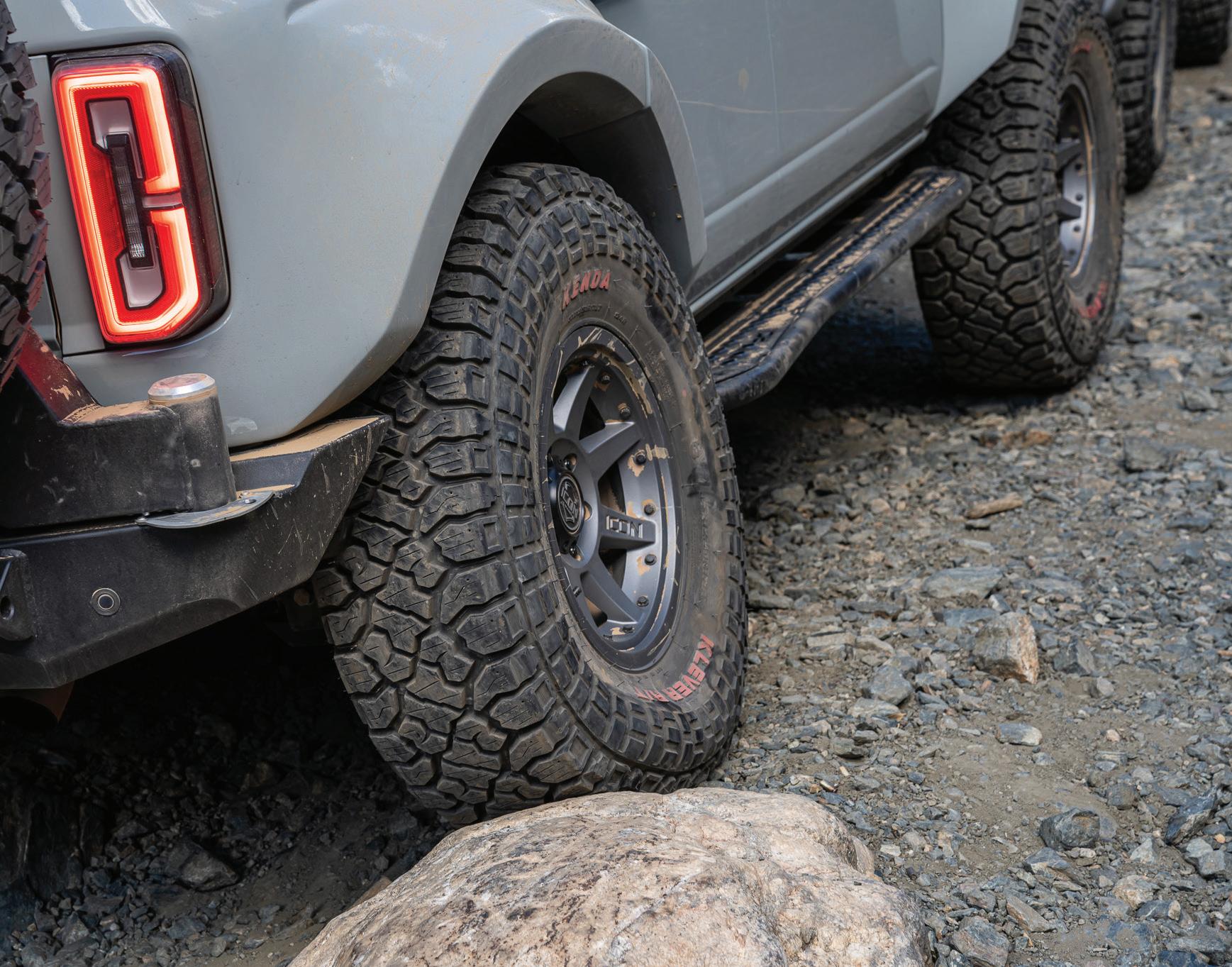
“The rugged-terrain — or R/T — segment continues to be a distinct and growing category of the light truck tire market,” says Brandon Stotsenburg, vice president, automotive division, American Kenda Rubber Co. Ltd.

drivers wanted to have plus-size otation applications o ered by traditional M/T tires, while up tting improved and distinguishing wheels covering sizes from 17 inches to 20-inch-plus diameters.”
He says the R/T segment’s total volume is only an estimate, “as USTMA (U.S. Tire Manufacturers Association) has not recognized it for unknown reasons, despite the many tires labeled R/T or X/T (extreme-terrain) available for sale.
e better R/T tires are capable in traditional M/T o -road environments and are taking share from the M/T segment due to the better ride and noise in crossover applications.”
American Pacific Industries Inc. (API) believes the R/T segment “is gaining traction within the overall LT market,” says Dan Cohen, XComp Tires director of motorsports and marketing, API. “Consumers are looking for the ultimate look, without sacri cing ride quality or mileage. Years before, end users had to choose between an all-terrain or a mud-terrain (tire). One featured the ability for light o -roading without aggressive looks, while the other enhanced the ability to go wherever you wanted, but (o ered) limited tread life.
e R/T tire has opened up a whole new segment that gives drivers the best of

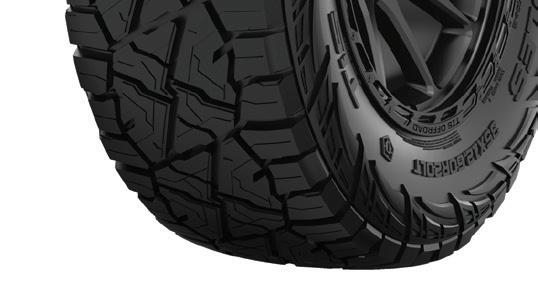

both worlds. You are now seeing OE vehicles equipped with R/T tires due to consumer demand.”
While API continues to “see larger volume demand” for A/T and M/T tires, “I do believe this will change in the following calendar year,” explains Cohen.
Steven Liu, vice president, product development, American Tire Distributors Inc., says the R/T segment is growing because of the “versatility an R/T tire brings to the table. R/T tires provide optimal o -road traction and on-road comfort, taking these two highly desired elements from an A/T and M/T tire, along with the aggressive appeal many users seek. e R/T segment may have started out as a niche product, but over time the segment has grown signi cantly with the LT tire market and beyond, as we are seeing more available o erings in CUV/ SUV sizes in a R/T design.
“No o cial data shows whether or not the R/T segment is bigger than the other product segments” in the LT category “in terms of volume,” Liu notes. “However, it is important to recognize the growth rate of the R/T segment has been at a very consistent level, year-over-year, on an upward trajectory. With that being said, it is our opinion there’s been a cannibalization e ect, to a certain extent, the R/T tire is

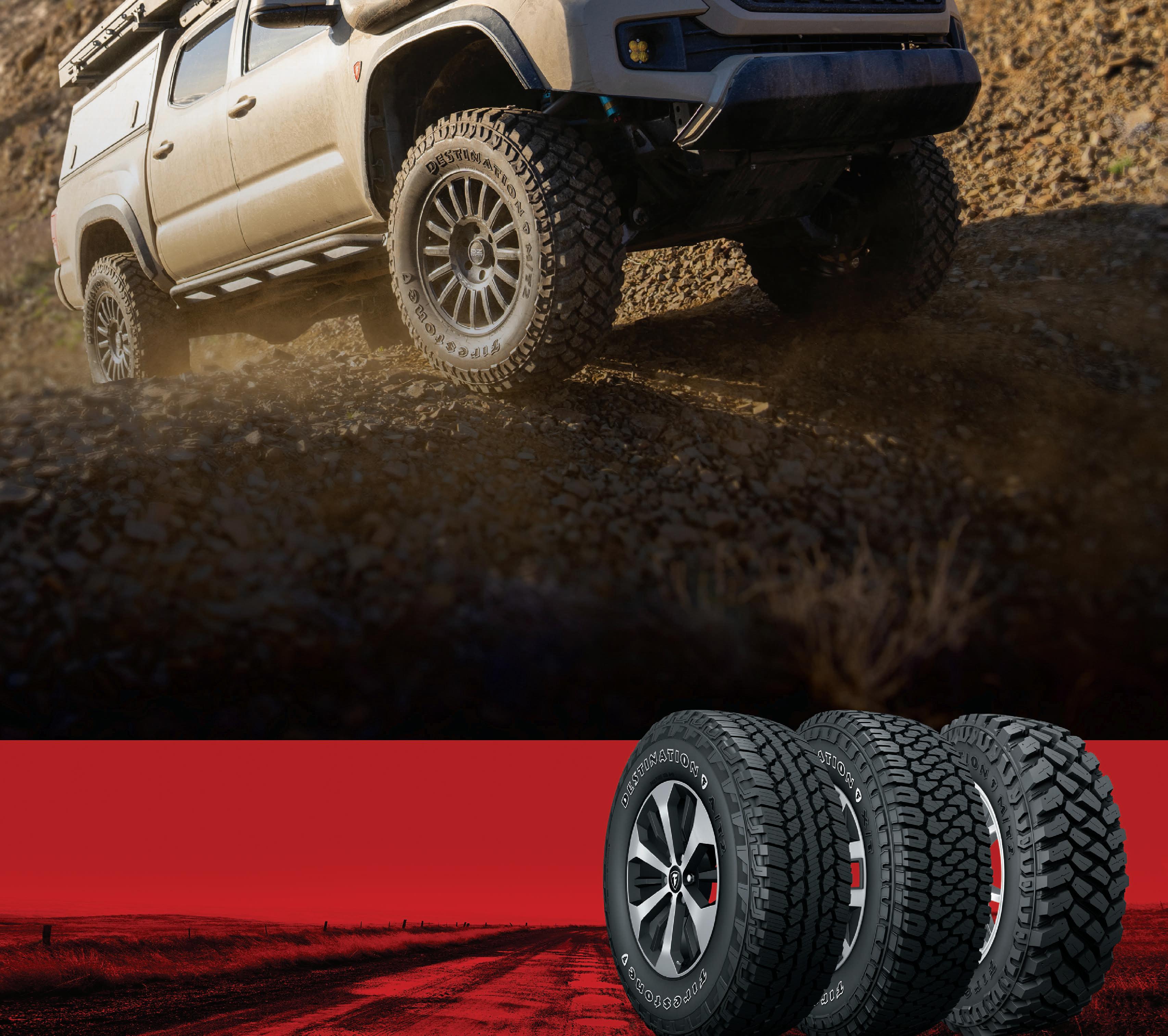


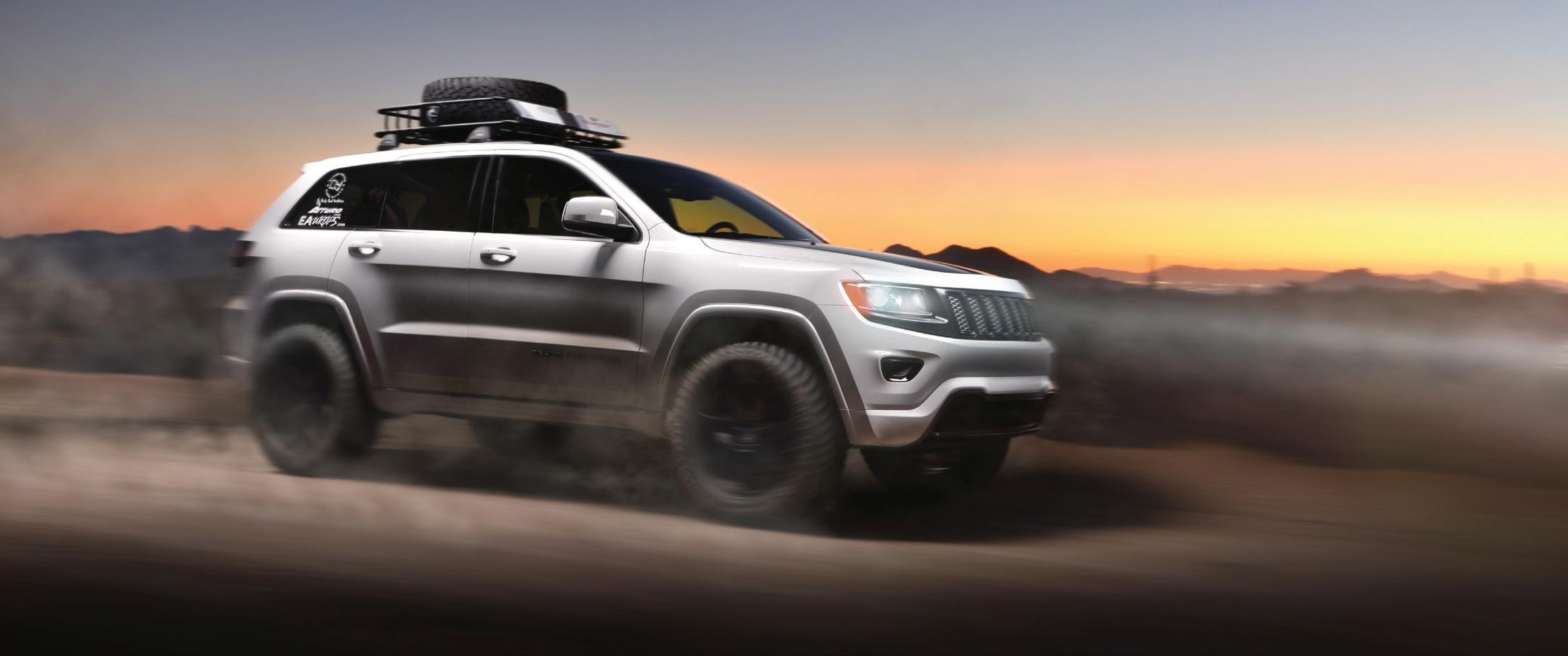
“R/T tires offer consumers a hybrid option between the capabilities of A/T tires and the more extreme M/T tires,” says Iris Ocasio, product manager, consumer

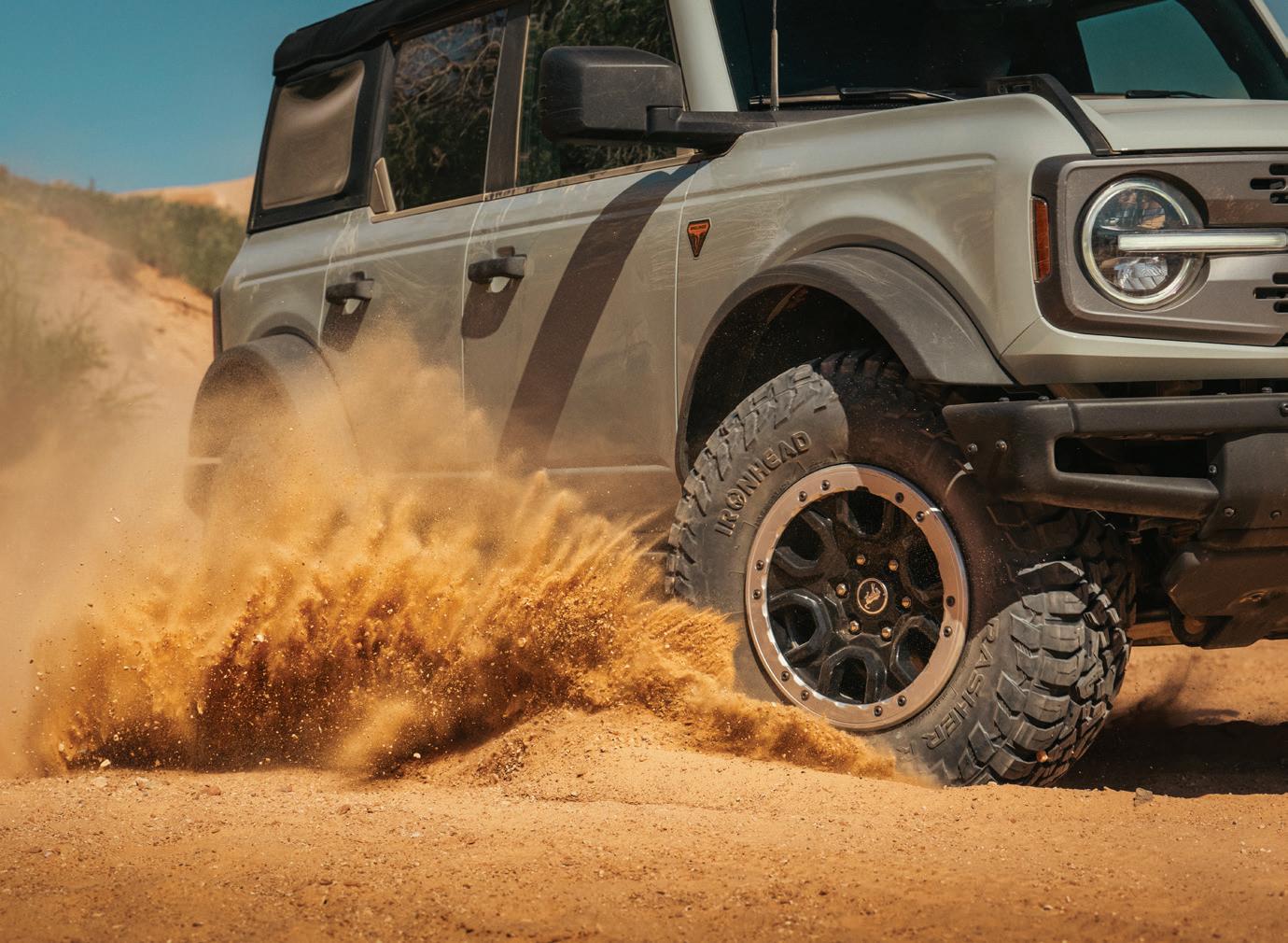
“The hybrid category of LT tires continues to expand,” says Michael Mathis, president of Atturo Tire Corp., adding that he looks at the R/T segment “as hybrid, meaning a blend of M/T and A/T pattern designs.”
Photo: Atturo Tire Corp.
having on the A/T, H/T (highway-terrain) or M/T segments. We believe the driving factors of this growth include OE fitments and market validation over an extended period of time. Additionally, much of the branding and social media investments early on when the product segment was first introduced are now paying dividends. We’re noticing consumers who may have traditionally bought a set of tier-one A/T or M/T products are now turning to an R/T tire alternative in the value segment.”
“The hybrid category of LT tires continues to expand,” says Michael Mathis, president of Atturo Tire Corp., adding that he looks at the R/T segment “as hybrid, meaning a blend of M/T and A/T pattern designs. R/T has become a common name for models in the hybrid category and is synonymous with X/T, in our view. What was originally looked
“Consumer demand has shifted toward R/T, which offers the right combination of aggressive styling and comfort for daily driving,” Josh Benson, vice president, First Choice Sourcing Solutions.
Photo: First Choice Sourcing Solutions









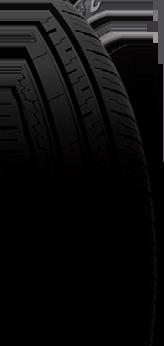

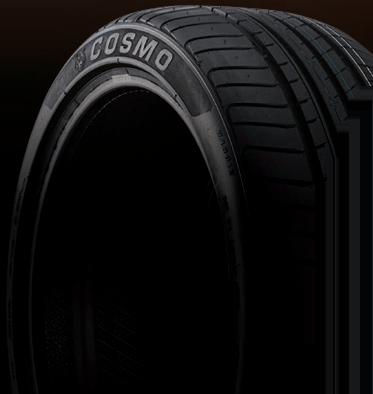





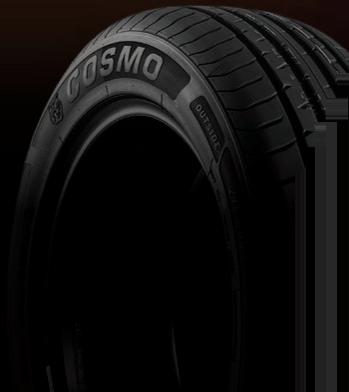

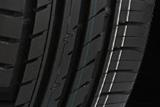






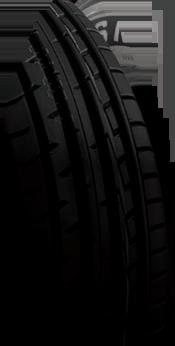
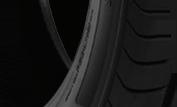
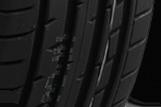


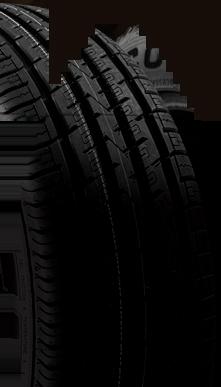
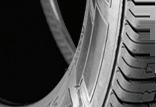
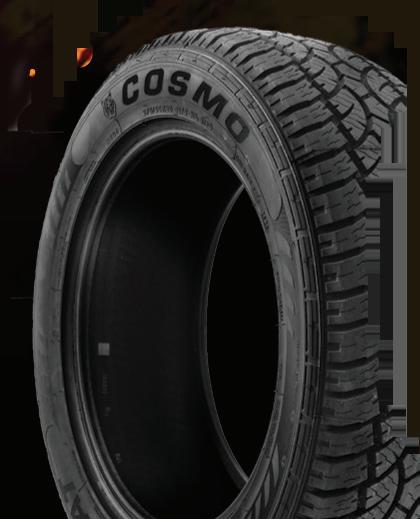
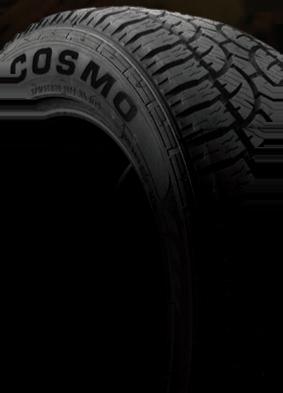







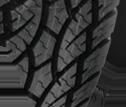

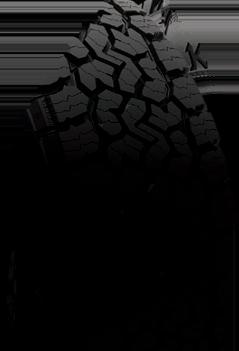











“While the A/T and R/T segments are currently close in volume, the R/T market is quickly catching up and in many cases outpacing A/T growth,” says Andy Grant, marketing manager, Fury Tires.
Photo: Fury Tires


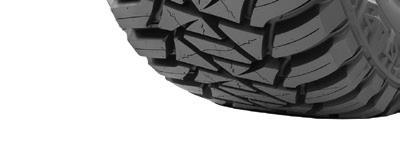

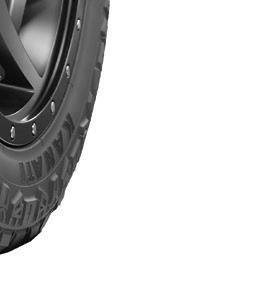
“In our product lineup, the R/T segment has been steadily growing over the past 10 years,” says Randy Tsai, senior vice president, Greenball Corp.
Photo: Greenball Corp.



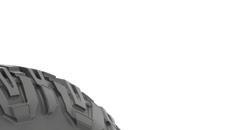


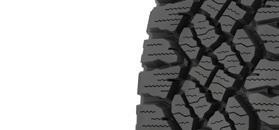
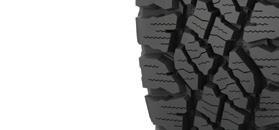


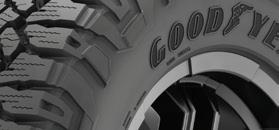





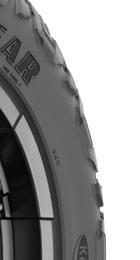


at as just a milder alternative to an M/T for pickups and Jeeps has grown dramatically. In our data, hybrid sales have surpassed the M/T segment. It still lags A/T and H/T as those have far more OE replacement-type applications. e hybrid category is growing because of its versatility. Consumers love the combination of aggressive looks, performance and drivability. is is leading them to use this type of tire where they would never have considered an M/T.
“We find consumers who are wellserved with a hybrid pattern are a er a combination of these attributes: aggressive, o -road style; highway and general ride quality ... good all-season traction; actual o -road traction for mild to moderate use; (and) longer tread life,” says Mathis.
“ e R/T segment is gaining traction within the overall LT tire market,” says Iris Ocasio, product manager, consumer replacement strategy, Bridgestone Amer-
icas Inc. “R/T tires o er consumers a hybrid option between the capabilities of A/T tires and the more extreme M/T tires. is allows consumers to get robust o -road capability without the full tradeo s o en associated with an M/T tire. Additionally, there’s a growing aesthetic preference for the rugged, assertive look that R/T tires provide.
“In the hierarchy of market volume for these segments, H/T tires remain the largest segment, especially when considering the inclusion of P-metric sizes that cater to a wide range of light trucks and SUVs. Following H/T, the order is A/T, then R/T and nally, M/T tires, in terms of segment size by volume. However, we are observing a trend where the R/T segment is experiencing growth due to both changing consumer preferences and the reclassi cation of some M/T styles into the R/T category,” says Ocasio. “ is is driven by recent advancements in tire
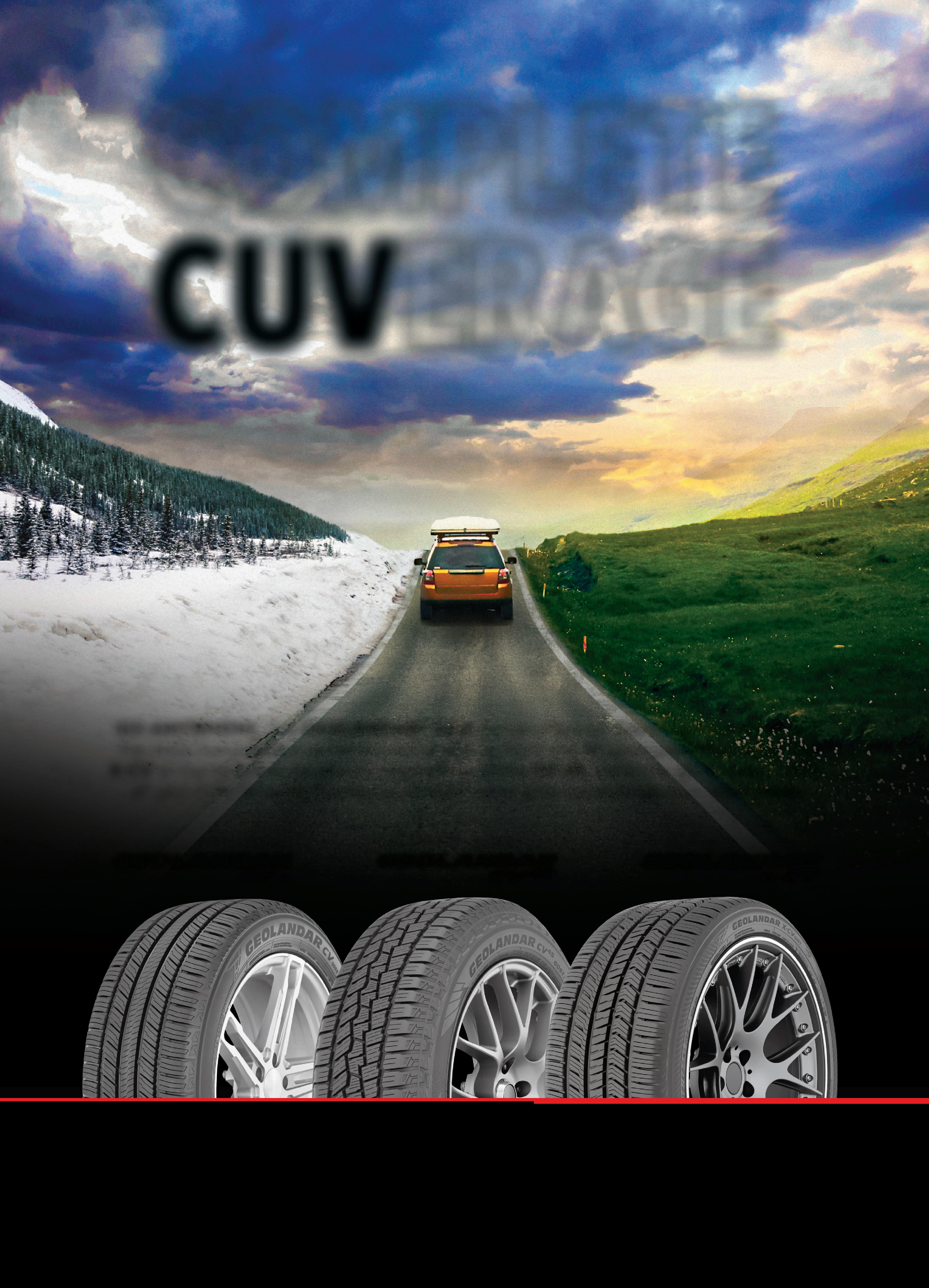

GO ANYWHERE. The GEOLANDAR® CUV lineup offers all-season performance and the most comprehensive fitment list available. From the W-rated performance of the X-CV to the severe snow service capabilities of the CV 4S, we’re the go-to resource for all your CUV fitments. Contact your Yokohama sales representative to learn more.

technology that have helped minimize the traditional trade-offs associated with aggressive off-road tires, particularly in noise reduction and ride comfort. Tire manufacturers’ commitment to meeting consumers’ expectations for both off-road performance and comfort is a key driver for the expansion of segments like R/T.”
Josh Benson, vice president, First Choice Sourcing Solutions, says the R/T segment grew last year “in sellout and continues to gain share in 2025. Consumer demand has shifted toward R/T, which offers the right combination of aggressive styling and comfort for daily driving. R/T volume remains smaller than A/T and H/T, but has overtaken the M/T category in size. Growth is being driven by new vehicle fitments and rising consumer adoption with buyers seeking real value in the R/T’s hybrid terrain versatility.”
“The R/T or hybrid-terrain tire segment has been gaining strong momentum within the LT market over the last several years,” says Andy Grant, marketing manager, Fury Tires. “Customers increasingly want the aggressive, off-road-ready look of an M/T tire, but with the comfort and quiet ride of an A/T or H/T tire. The R/T tire delivers
that perfect middle ground. We’re also seeing this trend reflected in the market. Most major brands now offer multiple R/T-style tires, signaling growing consumer demand. This hybrid design is ideal for truck owners who want capability and style without sacrificing on-road drivability.
“While the A/T and R/T segments are currently close in volume, the R/T market is quickly catching up and in many cases outpacing A/T growth. Several years ago, most brands only had one R/T offering. Now they often carry two or three. This expansion reflects a broader shift where some brands are even beginning to phase out parts of their A/T lineup in favor of R/Ts. The key drivers behind this growth include the aggressive styling and performance appeal of R/T tires, combined with better ride quality than M/Ts and more visual impact than traditional A/Ts. It’s a tire that checks more boxes for modern truck owners.”
“All indicators point to the R/T market already outpacing the M/T market by around 50%, taking share mainly from M/T, but also from the A/T segment,” says David Poling, vice president, research and development and technical,
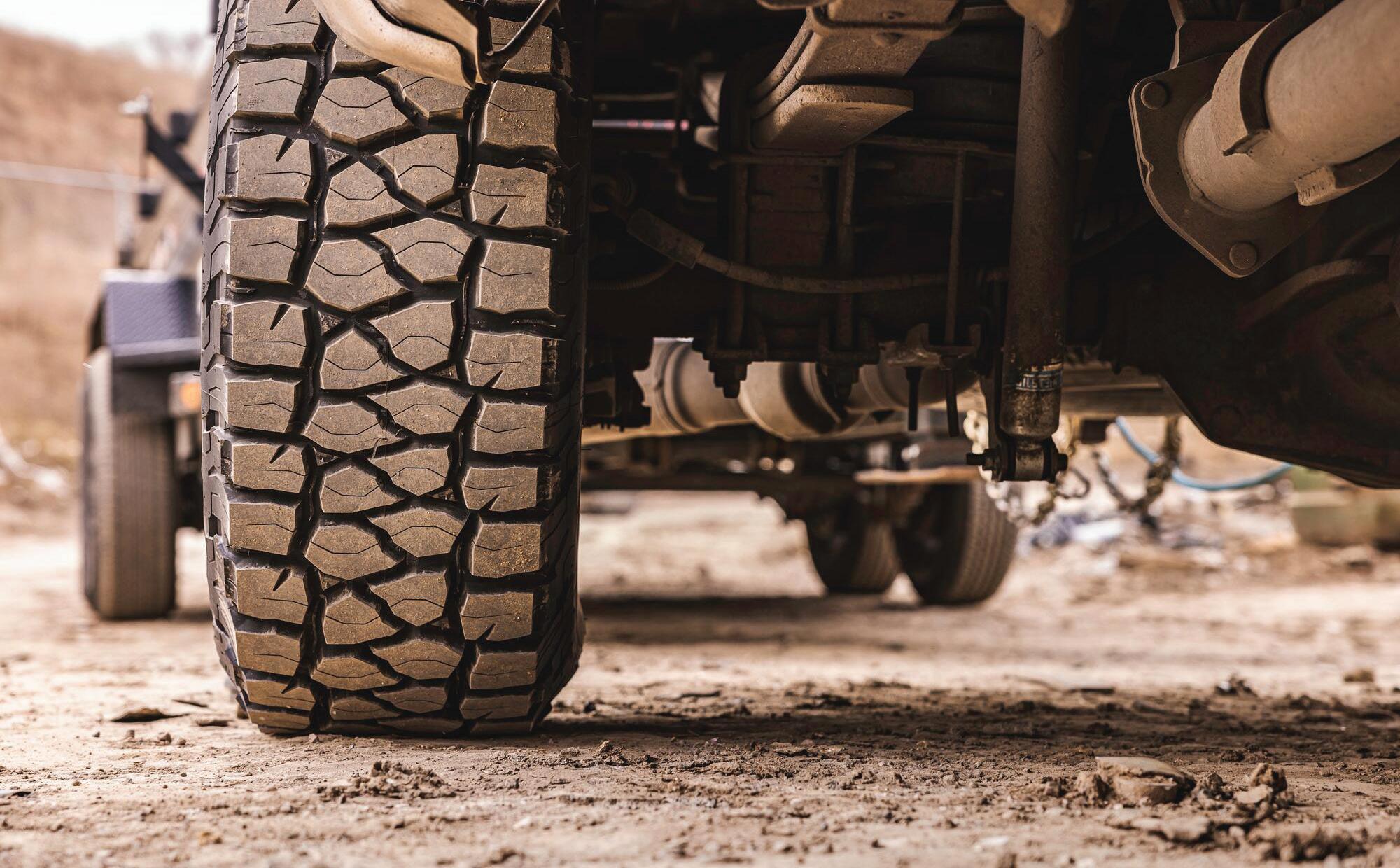
“The consumer looking for R/T tires usually wants aggressive looks,” says Brandon Sturgis, BFGoodrich off-road product manager, Michelin North America Inc.




















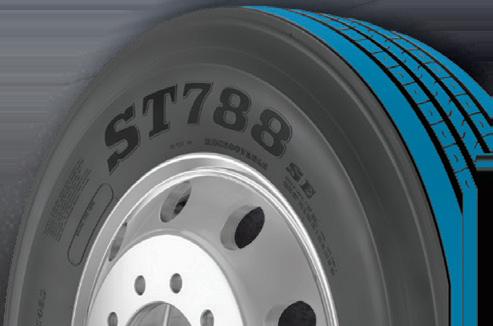
















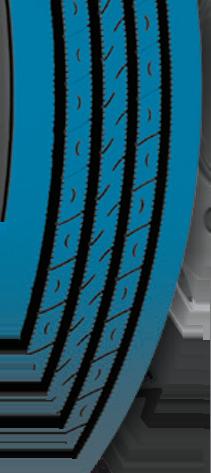




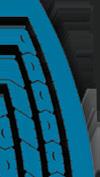
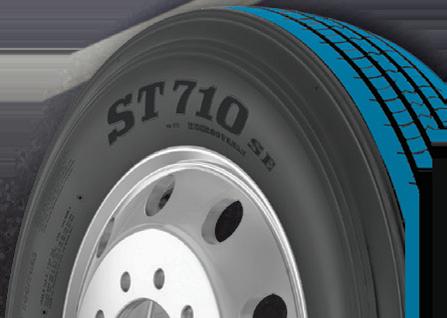
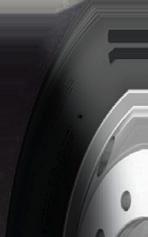

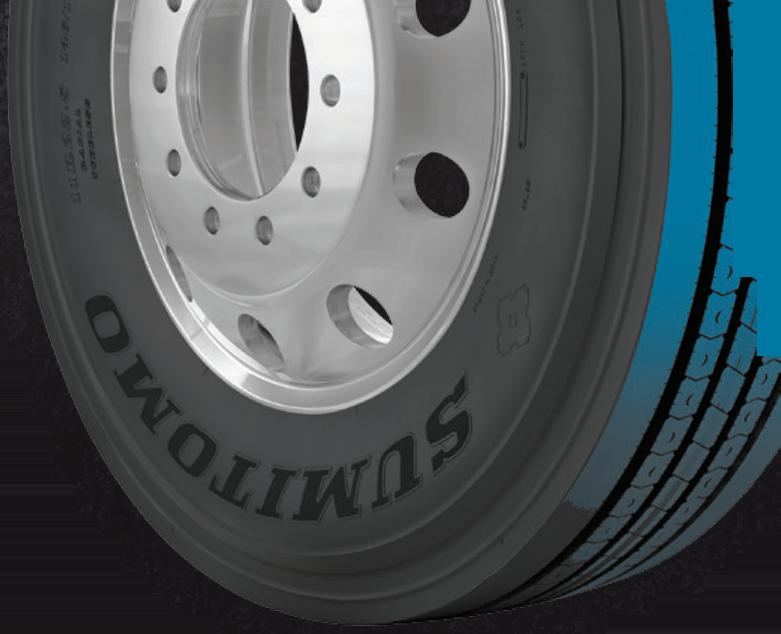






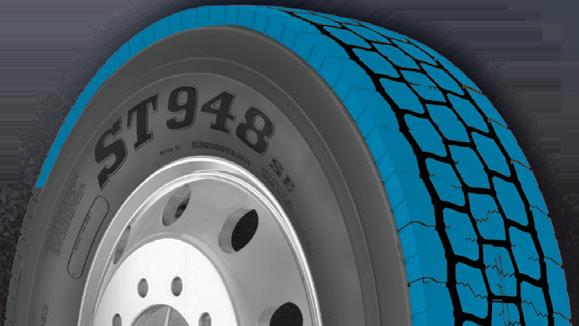
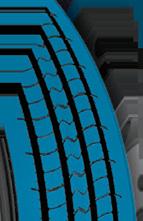





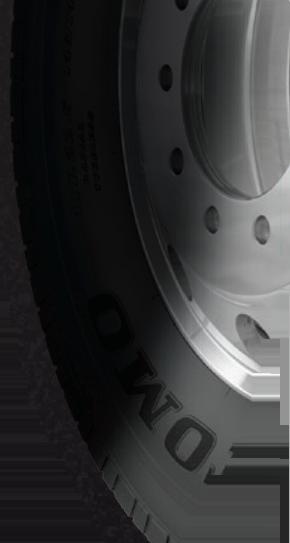




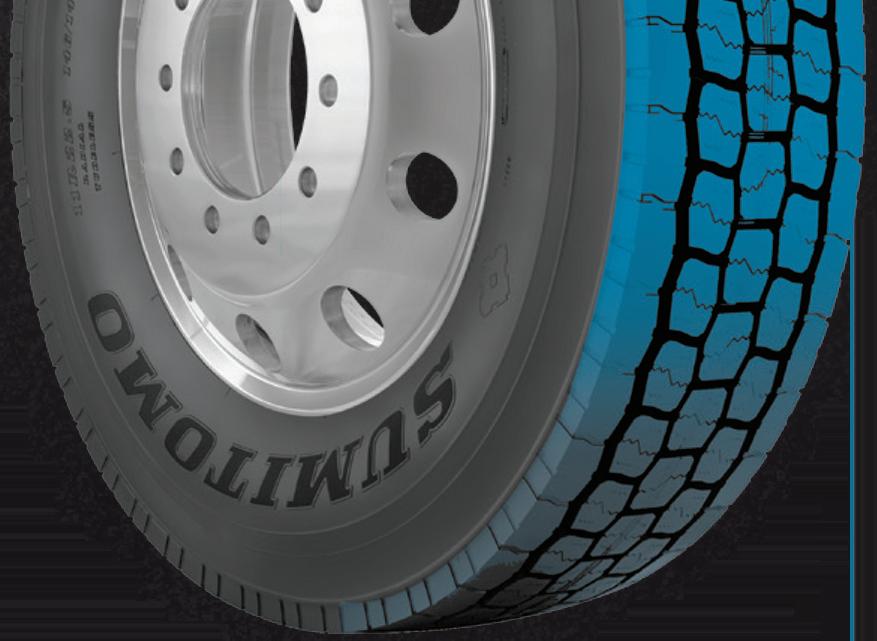





































































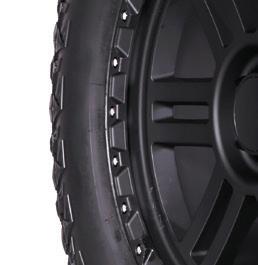
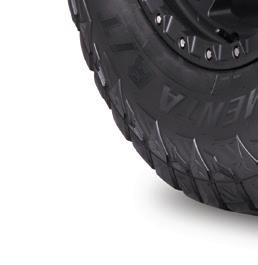
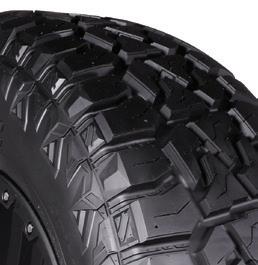




Consumers “seek R/T tires that combine an aggressive aesthetic with long-lasting performance,” says Ken Coltrane, vice president of product development and marketing, Prinx Chengshan Tire North America Inc.
Photo: Prinx Chengshan Tire North America Inc.

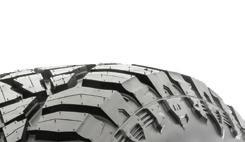



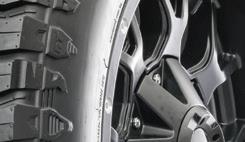

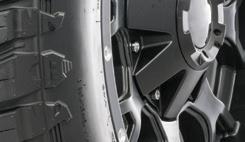

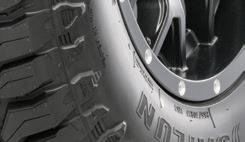
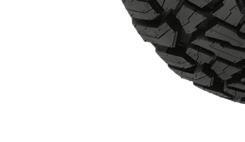
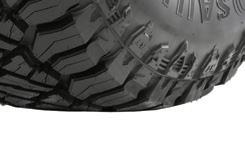

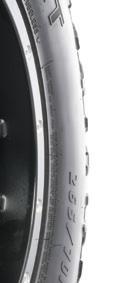

“R/T is the fastest-growing category in the LT segment,” says Jared Lynch, vice president of sales, corporate accounts, PLT, North America, Sailun Tire Americas.
Photo: Sailun Tire Americas
Giti Tire (USA) Ltd. “For the foreseeable future, the H/T and A/T (markets) will remain much larger than R/T, in part due to high volume of OE tments. We could see future o -road OE packages tted with R/T tires as the segment continues to grow in popularity. An R/T tire o ers a more aggressive appearance compared to a normal A/T tire and consumers are increasingly looking for that upgrade, but previously they didn’t want to go all the way to an M/T tire due to noise and road manners trade-o s. Conversely, the R/T tire o ers a consumer who had previously used M/T tires the opportunity to maintain the extreme appearance while o ering them improved noise and road manners. e magic behind a great R/T tire is making it look very similar to an M/T (with) excellent o -road capabilities (and) the on-road manners of an A/T.”
Jonathan omas, director, category strategy and planning, Goodyear Tire & Rubber Co., says the growth of the R/T segment is being driven “by evolving consumer demands for tires that combine the aggressive o -road capabilities and looks of M/T tires with the on-road comfort and versatility of A/T options. As more consumers use their trucks and SUVs for both work and recreation, they’re seeking tires that can con dently handle diverse conditions, from job sites and trails to highways and city streets.”
In addition, as more consumers “seek out vehicles and accessories that support an active, o -road lifestyle, the R/T segment is expected to continue its upward trajectory.
e R/T segment is also bene tting from OEM trends, with more rugged trims and o -road packages being o ered directly from the factory, increasing demand for tires that match those capabilities. As more OEMs introduce rugged trims and adventure-ready models, the demand for R/T-style tires continues to rise, creating a valuable opportunity for dealers to capture sales in both the replacement and upgrade markets.”
“We’ve seen in the past few years that the R/T segment of the market has signi cantly grown,” says Randy Tsai, senior vice president, Greenball Corp. Consumers want “the best of both worlds: a smooth, comfortable ride for everyday driving, but the style of an aggressive tire that can be taken o -road on the weekends. Essentially, an R/T tire sits right between an A/T and M/T tire.
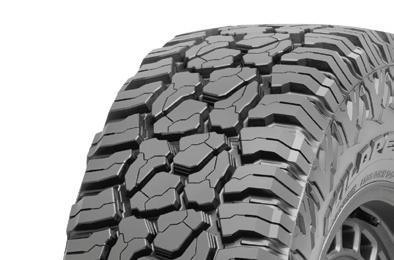


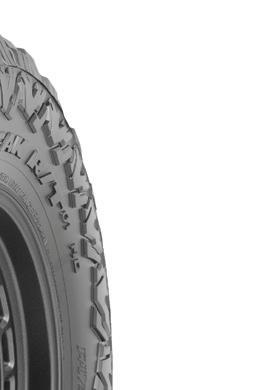

R/T gives consumers “various options,” says Eric Zhang, product specialist, Sumitomo Rubber North America Inc., which makes Falken brand tires.

“In our product lineup, the R/T segment has been steadily growing over the past 10 years,” says Tsai. “As we have added more R/T product lines, we do see it cannibalize some sales from the M/T segment. e R/T market lls a segment of the market where M/T tires and mild, highway-oriented A/T designs didn’t quite t the bill of what consumers wanted.”
One of the “major driving forces” behind the growth of the R/T tire segment has been the popularity “of lightduty trucks among U.S. consumers,” says Jin Han, product manager, Hankook Tire America Corp. “Combine this with growing consumer interest in getting o the beaten path and taking their vehicles on greater adventures ... (and) there has been a positive in uence across all oroad-oriented tire products.
“Within the o -road segment, rugged-terrain — which some customers might refer to as extreme-terrain or X/T — products o er a nice balance between more road-tempered A/T products and the top-of-the-o -road food chain, as with M/T o erings. is has resulted in the common referral of R/T products as ‘tweeners’ that will be at home in various o -road driving environments, such as loose dirt, mud, gravel and rocks, while still retaining a considerable degree of on-road comfort and handling. is has led many consumers, especially in the overlanding community, to choose a rugged-terrain product that gives them con dence when venturing o -road, in


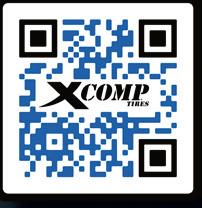







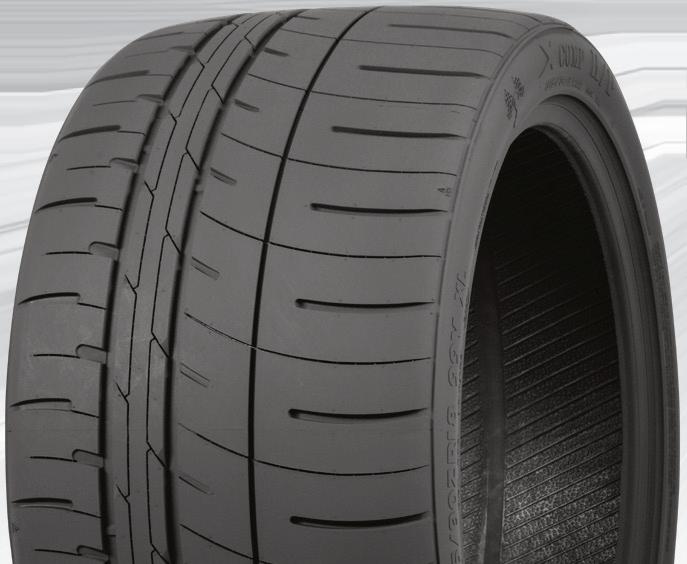
SIZES: 15, 17, 18, 19, 20, 21
TREAD DEPTH: 8-10
SPEED INDEX: W, Y
ASPECT RATIO: 25-50
UTQG: 200 AA A




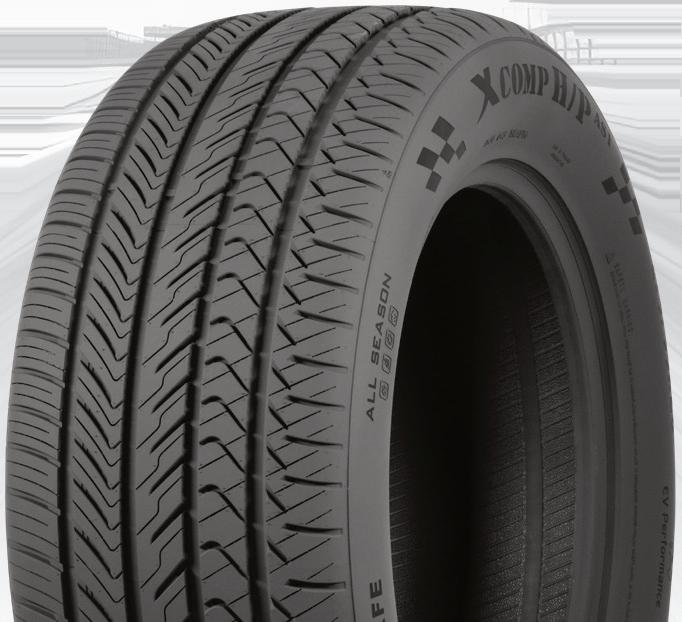
60,000 MILE WARRANTY
SIZES: 15-20, 22, 24, 26
SPEED RATING: H, V, W, Y UTQG: 420 AA A




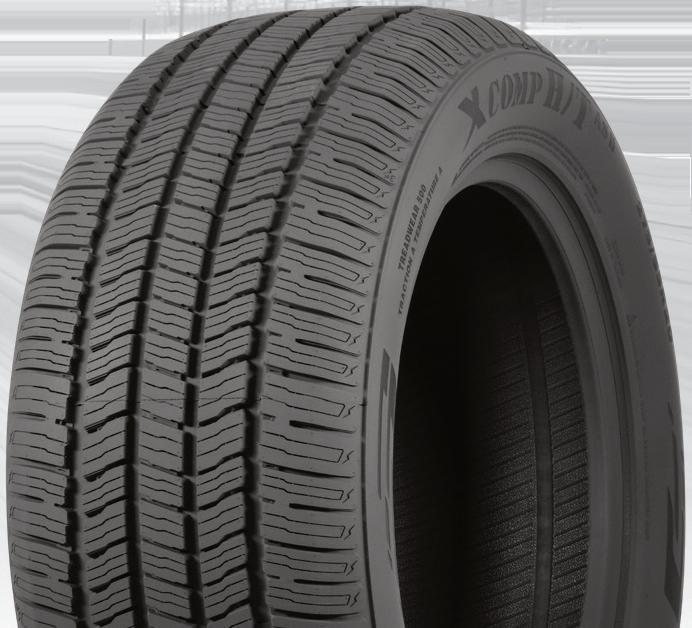
55,000 MILE WARRANTY (60,000 P METRIC SIZES)
SIZES: 15-20, 22
SPEED RATING: H, S, T, V LOAD RANGE: E




55,000 MILE WARRANTY (60,000 P METRIC SIZES)
SIZES: 16-18, 20, 22
SPEED RATING: H, Q, R, S, T LOAD RANGE: E, F





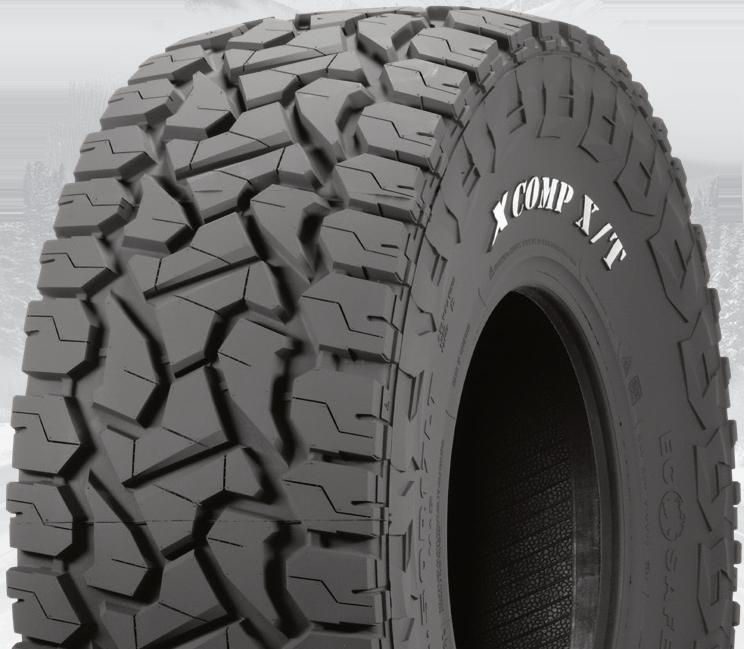
45,000 MILE WARRANTY
SIZES: 16-18, 20, 22, 24, 26
SPEED RATING: H, Q LOAD RANGE: E, F











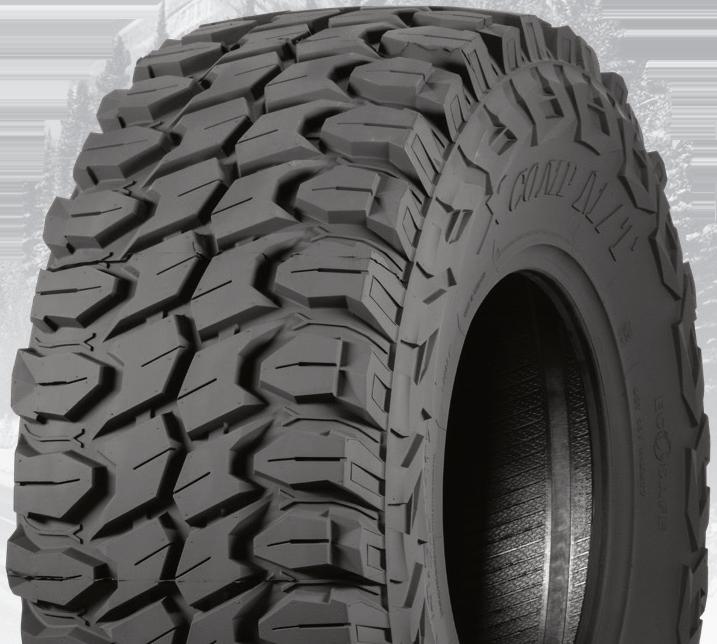
M&S RATED
SIZES: 15-18, 20, 22, 24, 26
SPEED RATING: P, Q LOAD RANGE: C, D, E, F






















R/T tires’ “aggressive appearance and performance make them a sought-after option,” says Shawn Denlein, president of sales and marketing, Kumho Tire U.S.A. Inc.
Mike
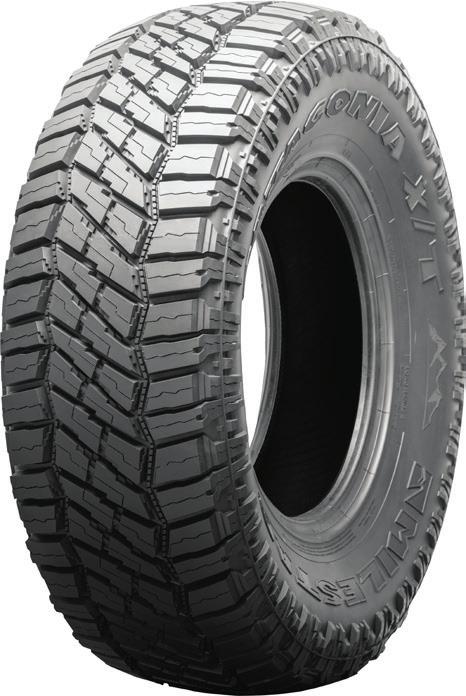
assistant
addition to highway travels back to civilization a er their adventure concludes.
“Despite growing interest, the R/T segment remains relatively niche compared to more well-established lines, such as A/T products,” says Han. “However, we expect the R/T segment to continue its trajectory as a fast-growing and increasingly popular subset of o -road tire o erings.”
“Market demand is continuously diversifying, according to market trends,” says Shawn Denlein, president of sales and marketing, Kumho Tire U.S.A. Inc. “New needs emerge from consumer demands and gradually gain market traction upon introduction. As R/T has not yet been categorized as a distinct segment by USTMA, most of its demand is currently categorized under all-terrain, so it’s challenging to identify the exact growth rate in demand” for R/T products. “However, as existing all-terrain products are being tailored to on-road driving performance, a consumer group that emphasizes o -road traction performance, as well as on-road driving performance, is emerging. e continuous introduction of new R/T products into the market demonstrated this growth.
“While the R/T market currently isn’t larger than the H/T and A/T segments, its growth rate surpasses both. However, due to its inherent characteristics, the R/T segment is steadily encroaching on demand for both A/T and M/T tires. R/T tires appeal to truck and SUV owners who require more o -road traction than A/T products o er. eir aggressive appearance and performance make them a sought-a er option.”
“Rugged-terrain and other, similar tire segments are expanding, as there’s greater consumer demand for aggressively styled tires with knobby shoulders and tough-looking sidewalls,” says Brandon Sturgis, BFGoodrich o -road product manager, Michelin North America Inc. “Consumers always want long (tire) life and even tread wear ... and the consumer looking for R/T tires usually wants aggressive looks, even if they don’t take their vehicle o -road.”
Jay Lee, product planning director, Nexen Tire America Inc., says that while R/T “is not yet larger in volume than A/T and H/T,” the segment “is rapidly growing and is challenging the dominance of the traditional segments. Industry





JIM FLECKNER
Tire Discounters needed a complete redesign of their top off road tire and it had to be on shelves for fall selling season. We sourced options, reviewed designs, fast-tracked engineering and even got customer performance data. In two months, the tire made it to market just in time for their fall rush.
YOUR CHALLENGE?








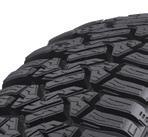
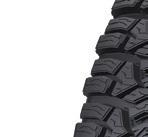
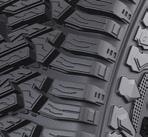




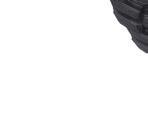

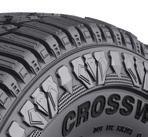


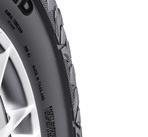
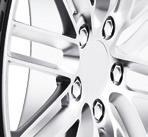
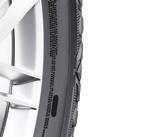
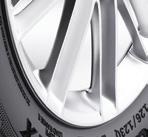

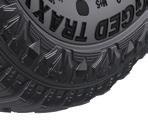

TBC Corp. has seen “heavy growth in the R/T segment,” says Eric Sweigart, the company’s vice president, value and proprietary brand management.
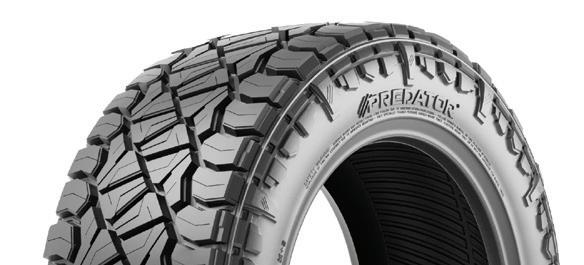
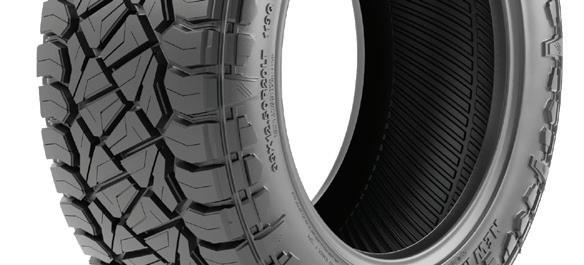

“The growth of R/T tires is primarily driven by their hybrid design, offering true, dual-purpose performance,” says Roman Racia, marketing director, Transamerica Tire Co. Ltd.



experts acknowledge that R/T remains smaller than traditional A/T, even as it gains share. e USTMA hasn’t fully recognized R/T as its own category yet, indicating that it’s still emerging in ocial volume data.”

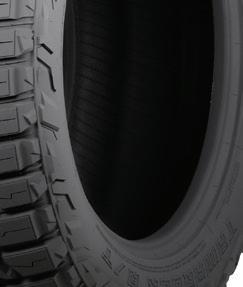


“Demand is being fueled by the popularity of lifted trucks” and other factors, says Vahe Tchaghlassian, vice president of sales and marketing, Wholesale Tire Distributors.
However, “dealers report that R/T sales are growing at the expense of all-terrain and mud-terrain tire sales. In select tire sizes, R/T models have even begun outselling corresponding M/T models. Consumers are increasingly turning to R/T tires for their unique blend of oroad capability and on-road comfort and they have (a) clear expectation,” including aggressive looks, balanced performance, “on-road re nement,” durability, load capacity and “all-purpose versatility.
“While exact volume numbers aren’t public yet due to category ambiguity, insiders describe the (R/T) segment as experiencing double-digit, year-over-year growth and refer to ‘exponential uptake’ for key models,” says Lee. “Growth is expected to continue taking share from both the A/T and M/T segments, especially as R/T gains traction and expands availability.”
“The R/T segment continues to gain traction within the overall LT tire market,” says Todd Bergeson, senior manager, product planning and technical services, Toyo Tire U.S.A. Corp.
Toyo Tire U.S.A. Corp.
“ e R/T segment has gained signicant traction in the LT tire market,” says Ken Coltrane, vice president of product development and marketing, Prinx Chengshan Tire North America Inc.
“R/T has established itself as a strong performer in the LT segment, driven by its proven durability, balanced performance and positive consumer feedback.” He adds that consumers “seek R/T tires that combine an aggressive aesthetic with long-lasting performance.”
Jared Lynch, vice president of sales, corporate accounts, PLT, North America, Sailun Tire Americas, says the R/T segment is gaining “signi cant momentum as more truck and SUV owners seek tires that offer a blend of bold, aggressive styling and capable o -road
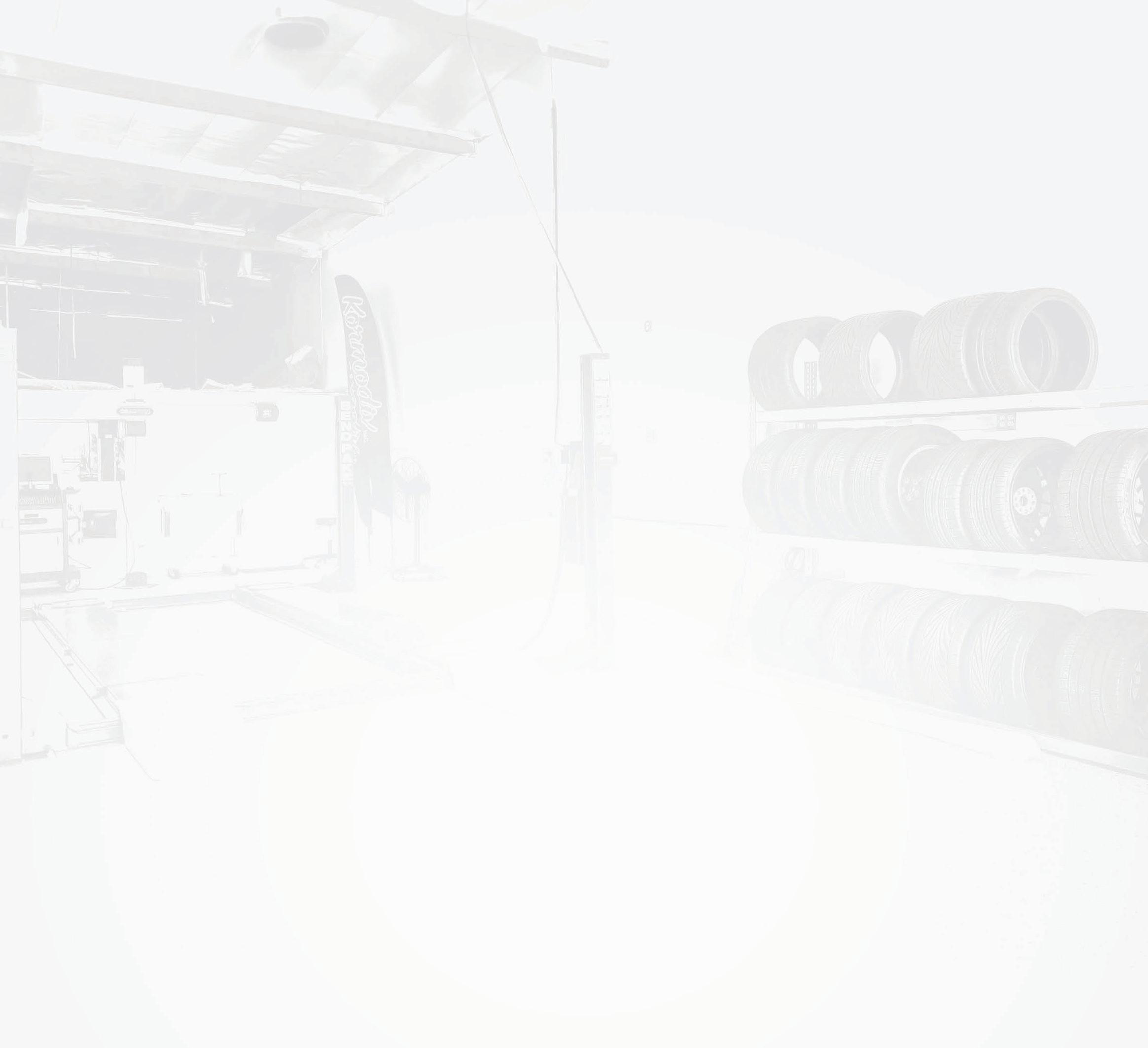










Revolutionize your tire and wheel service center with the ultimate pairing of precision and efficiency. Our combos redefine the standard, bringing you cutting-edge features without the hefty price tag. Elevate your services, amplify your efficiency, and see a direct impact on your profits. Don’t miss out on this opportunity to upgrade your work shop to the next level of performance. Connect with us at 1-800-253-2363 to speak with our experts or explore our combo offerings at www.bendpak.com. Discover the innovation, efficiency, and satisfaction that only Ranger can deliver – brought to you by BendPak. Tire Shop Package Includes: (1) LS45DS-220V Wheel Balancer + (1) R980DP-220V Tire Changer + (1) Tape Wheel

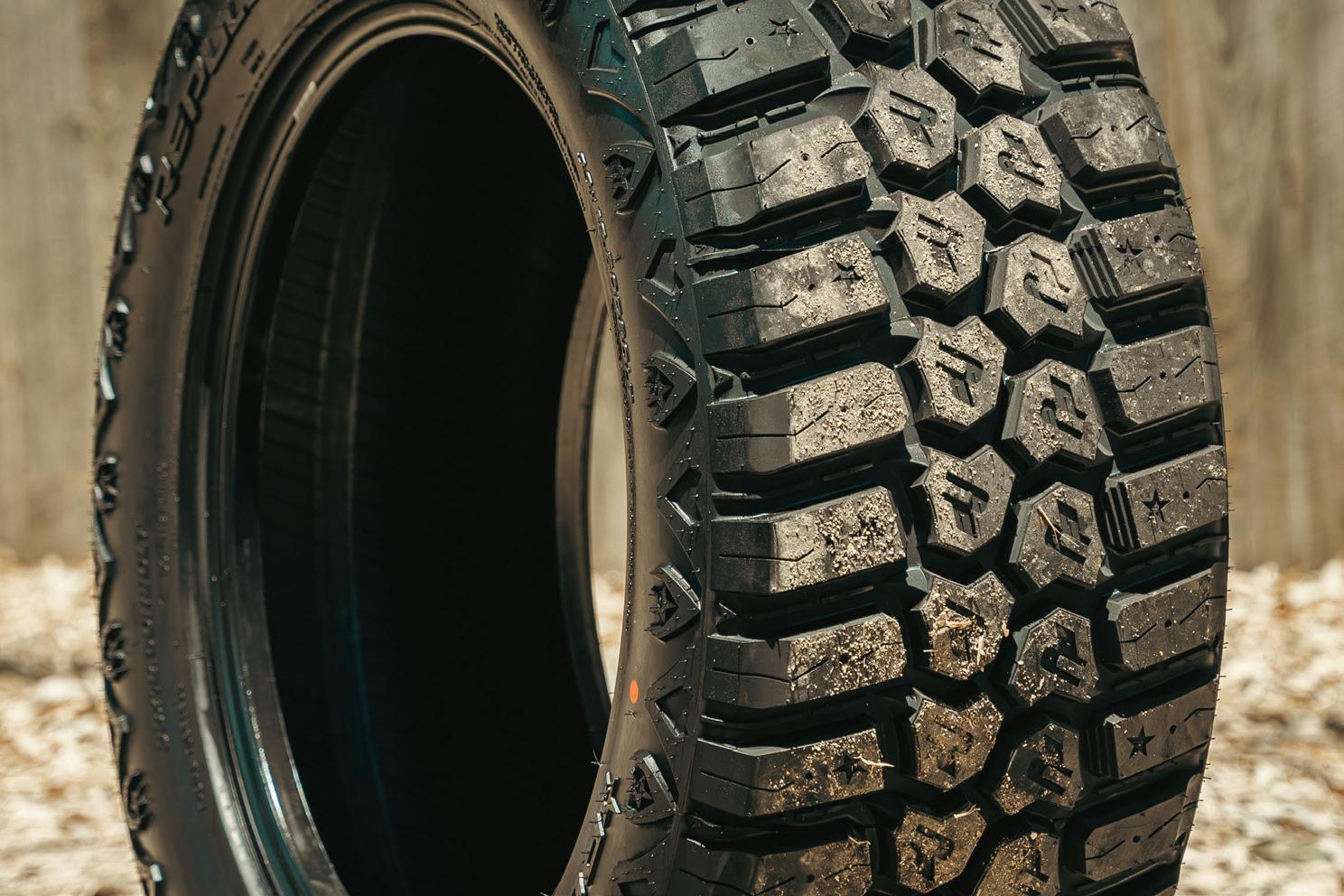
“The R/T segment has been growing proportionately versus other light truck tire lines for several years,” says Phillip Kane, CEO of Turbo Wholesale Tires LLC.
Photo: Turbo Wholesale Tires LLC
‘While A/T tires remain the largest in volume, R/T is the fastest-growing category in the LT segment. This growth is fueled by a shift in consumer priorities.’
Jared Lynch, vice president of sales, corporate accounts, PLT, North America, Sailun Tire Americas
performance without compromising the on-road comfort and quietness found in A/T products. e growing popularity of adventure-ready vehicles being used as daily drivers is a key factor. Consumers want all-in-one versatility and R/T tires deliver on that promise.
“While A/T tires remain the largest in volume, R/T is the fastest-growing category in the LT segment,” says Lynch. “ is growth is fueled by a shi in consumer priorities. Drivers want a tire that performs well o -road, when needed, but still delivers a smooth, quiet ride the rest of the time. R/T tires hit that sweet spot between form and function, making them especially appealing to lifestyle-focused truck and SUV buyers.”
“ e R/T segment is continuing to gain traction within the overall light truck tire market,” says Eric Zhang, product specialist, Sumitomo Rubber North America Inc. “It has clearly surpassed the market demand of the M/T segment, but not the demand of the much larger A/T segment. e R/T segment is attractive to those looking for more o -road aggressiveness and capabilities than an A/T, but who are not willing to sacri ce the on-road manners, such as tire noise and on-pavement tire life, that drivers enjoy with an A/T.
“Manufacturers can o er R/T patterns in various levels of on-road and o -road performance. ere are some R/Ts that
o er good o -road capability with better on-road manners than a traditional M/T tire and there are R/T tires that offer good on-road manners with elevated o -road capabilities when compared to A/T tires. Some manufacturers refer to these elevated o -road capable A/T tires as ‘extreme A/T’ in their product lines. So the R/T segment can provide consumers with various options, depending on how much on-road or o -road capabilities the consumer is willing to sacri ce.”
TBC Corp. reports that it has seen “heavy growth in the R/T segment,” says Eric Sweigart, vice president, value and proprietary brand management. “R/T tires are available for those weekend warriors who need tires exible enough for everyday driving during the week, but also enjoy exploring off-road on weekends. ey o er a hybrid between A/T and M/T, with the on-road comfort and stability of an A/T tire, without compromising the o -road capabilities expected from an M/T tire. With R/T tires, truck and SUV owners now have an option that looks aggressive, like an M/T, but doesn’t wear out as quickly. Truck enthusiasts who like to customize their trucks with li kits, select plus-size tments and aggressive tread designs are also utilizing R/T tires.”
Sweigart says the R/T segment “remains well-behind the A/T and H/T markets,” but adds that “versatility is a key factor (in) driving R/T tire volume past that of the M/T (segment.) R/T o ers consumers a hybrid option that combines on-road and o -road capabilities without compromising style, comfort or durability. is year, the R/T segment is showing over 9% growth.”
Mike Park, assistant director, market intelligence and pricing, Tireco Inc., says the R/T segment “has been one of the fastest-growing segments within the LT market over the past few years. It’s gaining traction because it o ers the best of both worlds: the o -road capability and aggressive styling of an M/T tire, (plus) ride comfort, road manners and longer tread life. is hybrid appeal aligns with what today’s truck and SUV owners are looking for: versatility, style and performance without compromise.
“The R/T segment is growing at a fast pace,” driven by a variety of factors, including more consumers who are “using their vehicles for both utility and
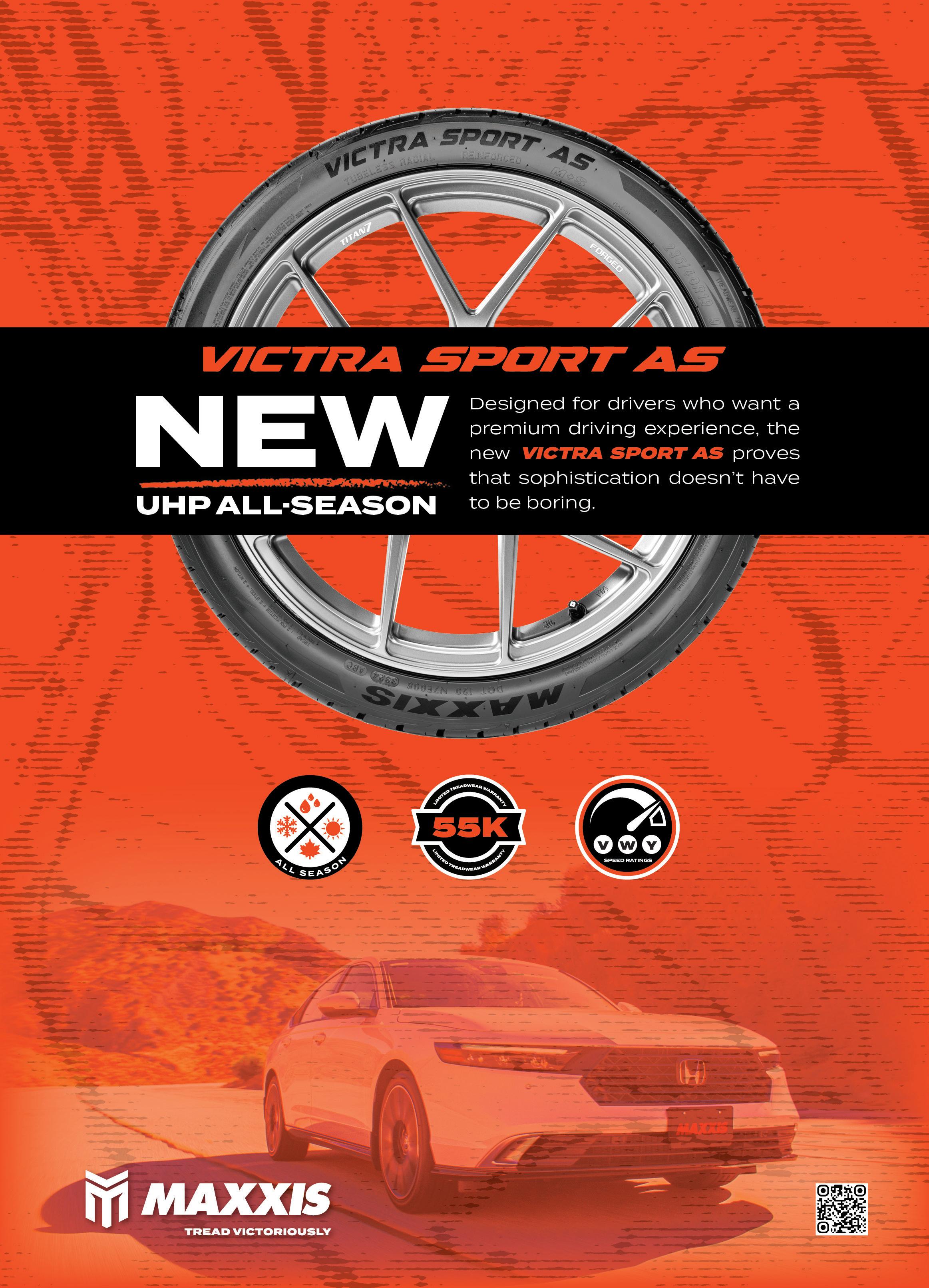

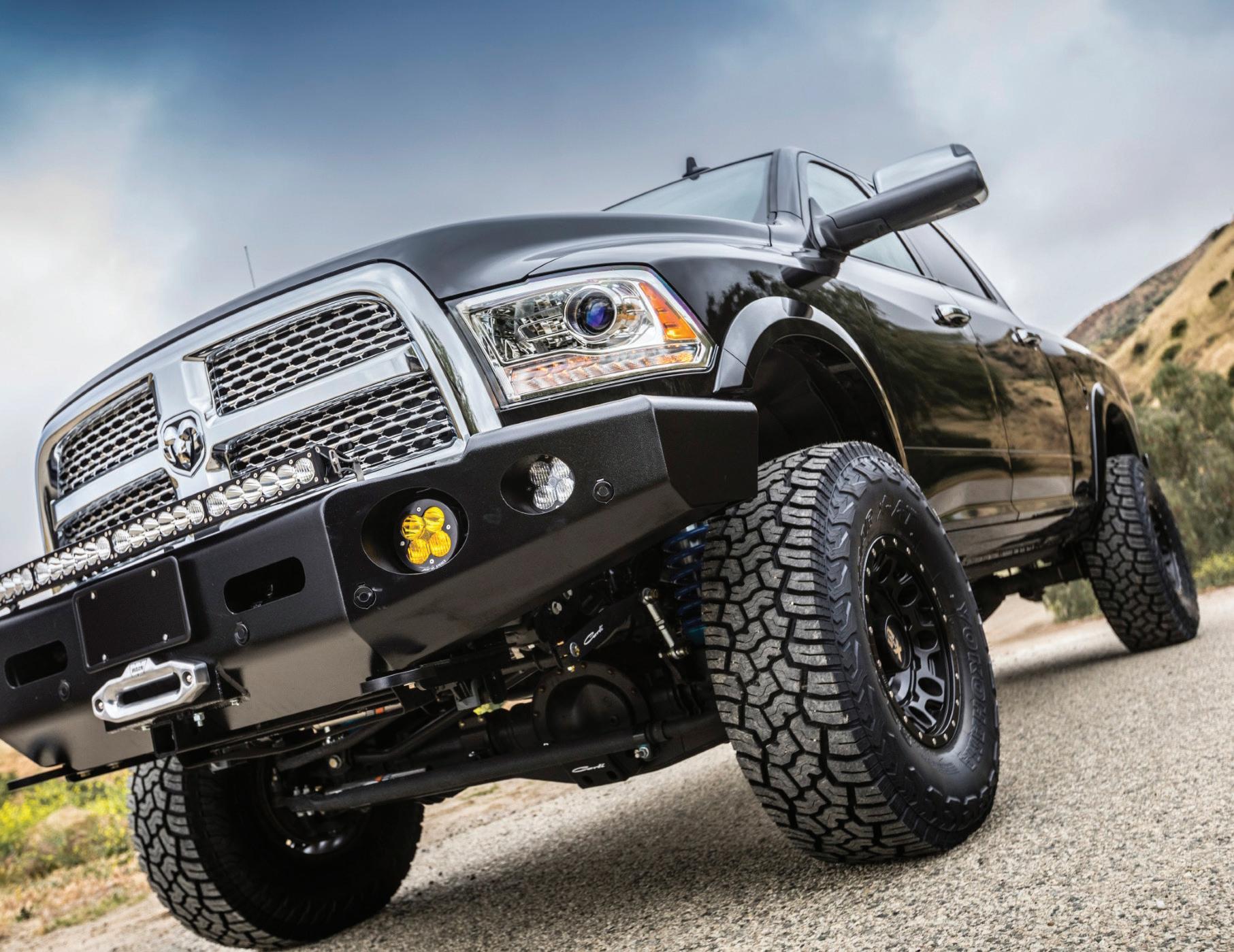
R/T tires have become “one of the fastest-growing segments in the overall LT tire market,” says Kevin Nguyen, manager of product planning, Yokohama Tire Corp.
Photo: Yokohama Tire Corp.

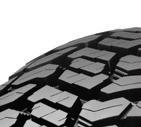
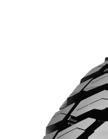
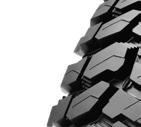

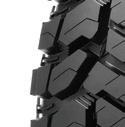







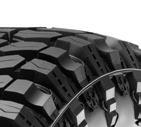

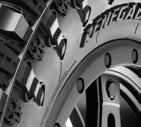
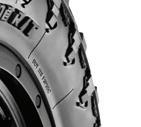



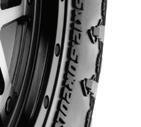
recreation. e aggressive R/T look has become mainstream, even for vehicles that may never see a trail. We’re seeing more factory builds pushing consumers toward li ed, o -road-capable platforms.
e rise of overlanding, o -road builds and content creation have created aspirational demands for performance both on- and o -road.
“Consumers shopping for R/T tires are looking for aggressive tread and sidewall styling that enhances their vehicles’ appearance,” says Park. Other wants include “durability and strength for oroad use; on-road comfort and quiet ride, especially for daily driving; (and) longer tread life.”
in the R/T light truck segment,” adding that TGI anticipates “tremendous growth (in the R/T segment) in the future and (will) focus our future development activities in this segment.”
“ e R/T segment continues to gain traction within the overall LT tire market,” says Todd Bergeson, senior manager, product planning and technical services, Toyo Tire U.S.A. Corp., but “the R/T segment is nowhere near the volume of the A/T segment, which is the optimal tire for more than 90% of the truck owners out there. e M/T category overall has been gradually declining in volume in recent years. Both A/T and M/T segments remain very relevant and important.”
However, Toyo “is very optimistic about the R/T category. Consumers want an aggressive- looking o -road tire that provides peak performance on and oroad. When considering an R/T category tire, consumers expect an aggressive look with a quiet and comfortable ride.”
“I think within the overall light truck tire market, the R/T segment is still smaller than the A/T segment, but may have surpassed the M/T segment in market share,” says Roman Racia, marketing director, Transamerica Tire Co. Ltd. “ e growth of R/T tires is primarily driven by their hybrid design, offering true, dual-purpose performance. ey’re suitable for comfortable daily driving and can handle challenging o -road adventures on the weekend. For many consumers, it means one tire that ts both lifestyles.”
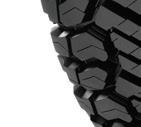
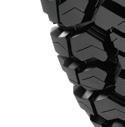
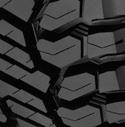
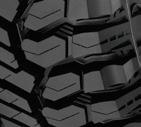
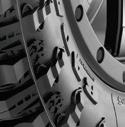

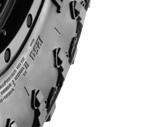


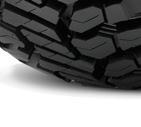



“If a customer asks for an R/T tire, they’re probably one of two things or both: a rugged look and/or a solid off-road performance,” says Rob Montasser, vice president of Radar Tire, North America, Omnisource.
Photo: Omnisource
“ e R/T segment is the fastest growing segment in the industry,” says Mark Lindsey, chief strategy o cer, Tire Group International LLC (TGI). “Much like allweather tires in the passenger segment, R/T tires deliver superior value due to performance and longevity at a competitive price for everyday drives. And with the rugged aesthetics that were previously only available in niche M/T products, retailers can reach two distinctly di erent consumers with one product segment. While the jury is still out on all-weather for the passenger segment, it is undeniable that we will continue to see rapid growth
“ e R/T segment has been growing proportionately versus other light truck tire lines for several years,” says Phillip Kane, CEO of Turbo Wholesale Tires LLC. “R/T offers a sort of Goldilocks proposition that’s just right for those wanting something more in an A/T and a bit less in an M/T. e R/T almost perfectly bridges the gap between the two, o ering better traction, enhanced durability and a more aggressive appearance than an all-terrain tire, while providing a quieter, cheaper, more fuel-efficient and almost as tough-looking package, but with better road manners than a mud-terrain tire. is ability to have one’s cake and eat it, too, has caused those who would have formerly bought A/Ts or M/ Ts to ock to the newer R/T (segment.)
“For us, the R/T has largely supplanted both A/T and M/T volume by an order of magnitude for the simple reasons that
many A/T buyers can — for not much more money — have a tire that not only looks tougher and more capable, but actually is tougher and more capable, while those who may have been attracted to the M/T’s extreme appearance can have nearly the same look, with less noise, less fuel spend and less road walk.”
That said, “we don’t think the typical highway-tread customer is jumping all the way over A/T to get to R/T. Most H/T buyers are looking for very specific attributes found in H/T tires — like comfort, fuel economy and a quiet ride — and are not typically candidates for the more rough and tumble rugged-terrain experience.”
Growth of the R/T segment “is being driven by consumers who are looking for the versatility of an all-terrain tire with more aggressive styling and off-road capability, but without sacrificing on-road comfort,” says Vahe Tchaghlassian, vice president of sales and marketing, Wholesale Tire Distributors. “As more drivers use their trucks and SUVs for both daily


commuting and weekend adventures, R/T tires have become a go-to solution.
“While A/T tires still lead in overall volume, R/T tires are one of the fastest-growing segments. They’re effectively bridging the gap between A/T and M/T by offering a balanced mix of off-road toughness and on-road performance. This makes them especially appealing to consumers who want the aggressive look and capability of an M/T tire without the road noise or wear issues. Demand is being fueled by the popularity of lifted trucks, overlanding and the general trend toward outdoor lifestyle vehicles.”
“R/T tires have moved from a niche offering to one of the fastest-growing segments in the overall LT tire market,” says Kevin Nguyen, manager of product planning, Yokohama Tire Corp. “R/T tires offer that perfect balance for light truck and SUV customers by providing a more aggressive sidewall and tread pattern than A/T tires, while riding more quietly and smoothly than M/T tires. The R/T tire has become the go-tire for

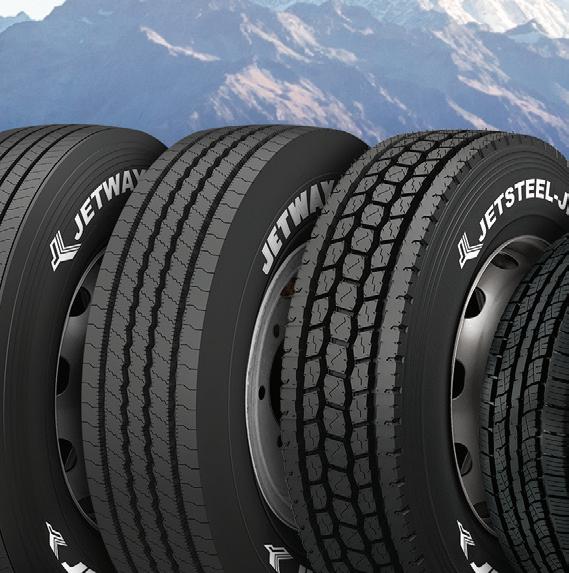

the overlanding, off-grid camping and aggressive-styling-and-personalization customers. These consumers are looking to enhance the off-road performance and appearance of their light trucks and SUVs that were equipped with H/T or standard A/T tires from the factory.”
Omnisource offers a different take. “We are seeing the R/T segment get squeezed by the A/T segment as industry A/T designs increasingly adopt a more rugged look,” says Rob Montasser, vice president of Radar Tire, North America, Omnisource.
“Many customers want tires that look rugged, but don’t want them to ride like hardcore off-road tires on the roads, where they do most of their driving. At Radar, we are seeing the squeeze happen from both ends. Overall, we don’t expect the R/T segment growth to outpace the A/T and X/T markets.”
However, “if a customer asks for an R/T tire, they’re probably one of two things or both: a rugged look and/or a solid off-road performance.” ■

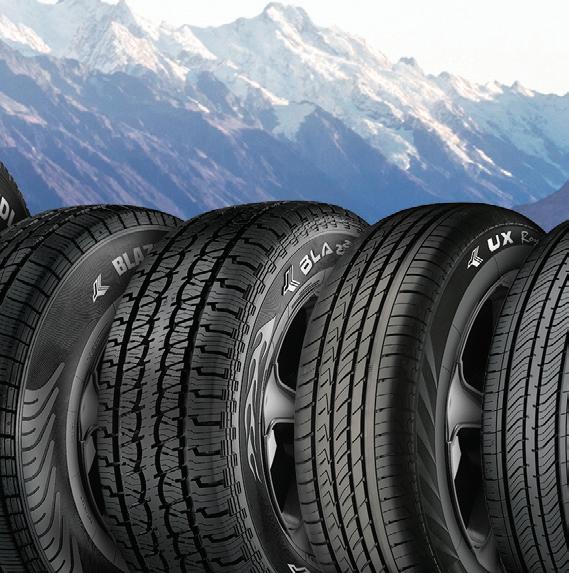
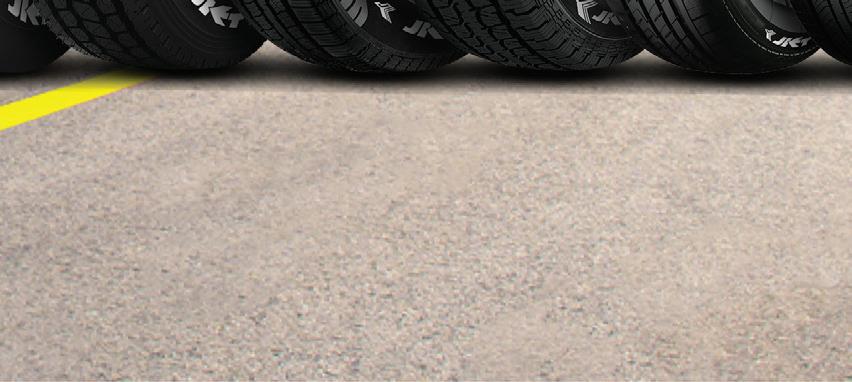

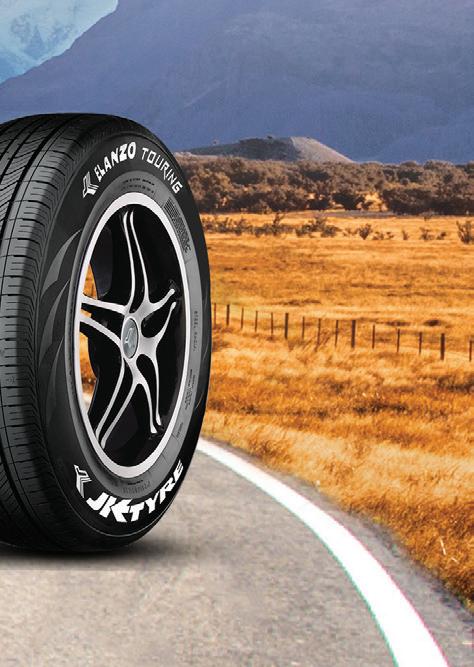








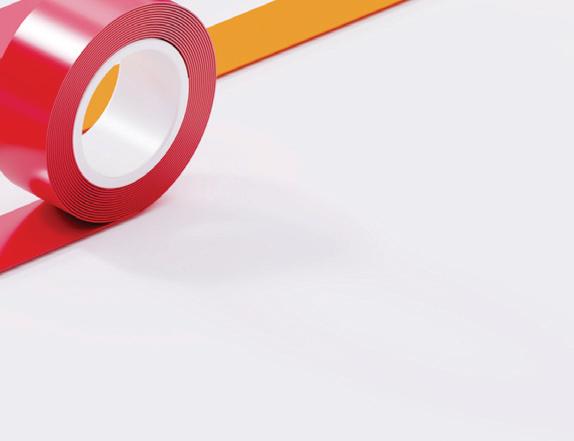



Some of the most prominent decision-makers in the North American tire industry, including the CEOs of several major tire manufacturers, look back on the rst half of the year, provide their perspective on the present state of tire demand and provide a preview of what’s to come in this MTD exclusive.





Responses are presented in alphabetical order based on company name. To read full interviews with each executive, visit www.moderntiredealer.com.

By Mike Manges





“We have had a great start to our year as several of the new initiatives that we had planned kicked in,” says Chris Brackin, president, American Omni Trading Co. (AOT). “ e biggest launch for AOT in 2025 was the introduction of our Partner Up Associate Dealer Program for our Americus and underer brands. In addition, our new marketing campaign has taken shape, which has spotlighted the value adds that AOT brings to the market for our customers. It goes without saying that the biggest challenge thus far this year has been the introduction of the Trump tari s. e uncertainty around what product is attached to which tari — along with the lack of clarity around the timing of the tari s — has been a challenge to navigate.”
“ e rst half of 2025 has seen continued success for Atturo,” says Michael Mathis, president, Atturo Tire Corp. “While the second quarter brought some headwinds, overall sales were higher than the same period last year. Obviously, there are challenges with the tari s and overall economic situation. e light truck category continues to be Atturo’s most popular. We are seeing substantial growth in the performance tire category. Our latest tire models in the all-weather category are gaining fans among dealers as they learn how versatile this type of tire can be at meeting their customers’ needs.”


“ is year appears to be a promising one for BKT, having begun on a positive note, with Q1 registering growth across our main business segments, driven by the agriculture, industrial and earthmoving industries — despite several geopolitical factors,” says Arvind Poddar, chairman and managing director, BKT. “ is progress re ects the company’s focused commercial strategy, strong distributor relationships and e cient supply chain execution. However, from the second quarter onward, new challenges emerged due to recent changes in U.S. trade policy a ecting tire imports, as well. As a company, we are aware of these current di culties and we are working closely with our partners and dealers to adapt our shipping logistics and pricing strategies to maintain our competitive advantage.”


“Our North American business is doing pretty well from a quarter-over-quarter basis,” says Scott Damon, CEO, Bridgestone West; group president, Bridgestone Americas Inc.; and Bridgestone’s global chief digital transformation o cer.






THE MR. TIRE AND BIG 3 TIRE PROGRAMS ARE DESIGNED TO HELP YOU SHAPE THE FUTURE OF YOUR INDEPENDENT TIRE DEALERSHIP WITH THE TOOLS NEEDED TO REACH YOUR MAXIMUM POTENTIAL WITHOUT SURRENDERING YOUR IDENTITY.






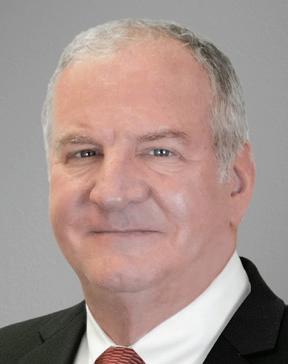
“Certainly, our profit is up slightly. Our revenue is comparable to what you saw in a lot of the first quarter earnings. It’s down a little bit. Our consumer and retail businesses are flattish. I think (we’re seeing) a lot of the challenges that replacement consumer (tire) dealers have probably talked to you about, where you see them trading down just because their available access to goods and services is somewhat challenging in a credit-constrained market, especially for lower- to medium-income people. But our retail business and our consumer business are weathering that and they’re flat.
“Our commercial truck business and retreading business are strong — stronger on the dealer side than even the fleet side, but both are up year-overyear and it’s certainly helping our performance,” says Damon. “Our off-road business is also quite good in North America. And our ag replacement business is good year-over-year. That business has been quite challenging and the original equipment business on that side is down almost 30%. So the ag business is definitely a headwind for us. The OE businesses themselves, year-over-year, in both truck and consumer, also are a little bit down, but we’ve forecasted them to be soft, in general.”
“In the first quarter of 2025, business was brisk as we capitalized on the growing value segment,” says Aaron Murphy, senior vice president, CMA/ Double Coin. “With economic headwinds such as tariffs and other uncertainties, our products continue to perform well as a cost-effective alternative to higher-priced tires. One of our biggest challenges lately has been the unpredictability of product costs and not knowing when those costs might change. Tariffs, in particular, have created a murky outlook. We’ve heard from many of our customers that they’re feeling the same uncertainty.”
“Our business in the Americas region has shown solid performance in the first half of 2025,” says Tansu Isik, CEO, Continental Tire the Americas LLC. “Our PLT and truck tire volumes have remained stable and we’ve maintained a consistent market share. While we’re beginning to feel some of the broader market headwinds as we approach mid-year — challenges that are impacting the entire industry — but we remain focused and committed to sustaining our momentum through the second half of the year.”
“2025 has been an exciting year for us,” says Rob Williams, president, Hankook Tire America Corp. “We started the year by launching two new products in our Dynapro line and one for our Ventus family and have since expanded our TBR line through our newly introduced Smart Brand. We continue to drive our OE partnerships both in the U.S. and globally, including a recent OE announcement with Lucid Gravity’s electric SUV. Of course, like many in the industry, we are nav-
igating some uncertainty, especially concerning potential impacts on pricing and supply chains. However, Hankook Tire America Corp. remains committed to ensuring we provide the best value for our customers — both dealers and drivers — and we are doing everything in our power to ensure strong supply lines and minimize any potential disruption. Our U.S. plant in Clarksville, Tenn., has played a major role in that.”
“2025 is off to a strong start, with solid growth compared to last year with a growth of 8.5%,” says Keiko Brockel, president and CEO, Nitto Tire U.S.A. Inc. “A key driver has been the continued strength of the Nitto brand and the loyalty it has earned in the market, which I personally view as second to none. However, we are facing the same challenges that our customers are. The news is full of reports about economic uncertainty, tariffs and changing consumer behavior — and things seem to change daily, making it harder to plan for the long term. So contingency planning and flexibility will be key. We are committed to making bold decisions that prioritize long-term growth over short-term gains.”
“We’ve had an extremely good start and when I look at official, quarterly reports of the leading players of the industry ... we are very satisfied with the development of the business both in the U.S. and Canada and also our facility in Dayton, Tenn., has been performing very well now that we’ve finally completed our first stage expansion project,” says Paolo Pompei, CEO, Nokian Tyres. “We’re achieving the daily output that we have targeted to achieve. So we are extremely satisfied with our performance. The discussion about tariffs has created some uncertainty in the market, both in Canada, as well as the U.S. But we are managing this, considering our journey is set for growth. And we still have a lot of space for growth in North America.”
“Our business is growing at a healthy pace, despite the weaknesses in the market in both the U.S. and Europe and the geopolitical situation,” says G.S. Sareen, CEO, Omnisource. “The markets are not robust. In spite of that, we are trying to grow very aggressively.”
“The first part of 2025 has been strong for Pirelli Tire North America (PTNA) as we continue reinforcing our position in the premium and high-value tire segments,” says Claudio Zanardo, CEO, PTNA. “Our recent product launches — including the Ice Friction in Canada and the Scorpion XTM AT, as well as the fifth generation of the P Zero and the DOT tire P Zero Trofeo Track — are a testament to our commitment to this market and our dedication to meeting the specific needs of North American drivers, building on the momentum of the new products introduced in 2024. These regionally developed products highlight our focus on our product offering for the market. While challenges

















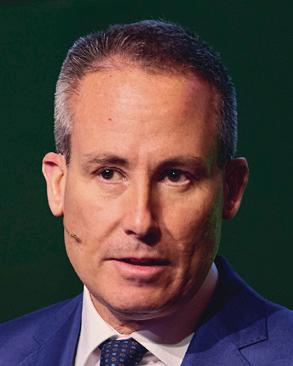

persist due to evolving market conditions, our business strategy centered on the high-value segment, which continues to grow at a double-digit rate, positions us well for continued success.”
“Business for PCTNA in 2025 started o very strong for both PCR and TBR segments,” says Samuel Felberbaum, president, Prinx Chengshan Tire North America (PCTNA). ”We’ve launched our tire size lineup for our all-weather products, the HiSeason 4S for Prinx and the ClimaFlex 4S for Fortune, and we will be launching our new Fortune Tormenta A/T2 and Prinx HiCountry A/ T2 in late-2Q, for arrival in Q3.”
“Despite volatility in the global and local markets, our business has stayed on track in 2025,” says Ron Dolan, president, Sailun Tire Americas. “We’ve worked closely with our partners to ensure the right product mix, while keeping our brands highly visible and relevant to value-conscious consumers looking for dependable quality.”
“I would say our rst quarter business was stable,” says Darren omas, president and CEO, Sumitomo Rubber North America Inc. (SRNA). “ at is probably an accomplishment for us because we were the only tire manufacturer who took anticipated raw material price increases early in the rst quarter to protect our global company from rising raws. We took that increase very thoughtfully and ultimately did what we thought was necessary.
“Despite those increases, our volume has remained stable because our relative price position in any given segment did not materially change,” said omas. “Maybe the index price went up a couple of percentage points, but it didn’t take us to a di erent category. I would say we’re not trying to reinvent our business model. Our goal has been a steady progression of business in the face of uncertainty and distribution challenges. notably the ATD (American Tire Distributors Inc.) bankruptcy.”
“We’ve had a good start to the year,” says Michael Graber, president and CEO, Toyo Tire U.S.A. Corp. “1Q was up 2.3% or so in volume, so tire sales have been up. Also on the success side, we launched the Proxes Sport 2 and it’s been a very good addition to our lineup. We also launched the Open Country R/T Pro in April — another exciting new product in the Open Country line. New products are always exciting and they also help with future success. e challenges, like anybody else in our industry, are what’s going to happen with the tari s and how that (will) impact business. We’re monitoring that.”
“In the U.S., as in many commercial markets, we’ve faced a number of challenges this year,” says Elio Bartoli, president, Yokohama TWS. “Many of our a ermarket dealers and OEM partners entered the year with high inventory levels, which naturally impacted order ow. At the same time, the market has been a ected by broader economic dynamics,
including fentanyl-related trade restrictions and reciprocal tari s, followed by retaliatory measures from other countries. ese factors have created added complexity, particularly on the OEM side.”
“We are still seeing the demand being strong for PLT and TBR products,” says AOT’s Brackin. “With the prices rising on all other types of products, we are seeing consumers tier-down, which has led to strong sellout for our products.”
“My assessment of the consumer tire market is that it has slowed down modestly,” says Atturo’s Mathis. “ I am reminded of early-2022 as actual in ation accelerated and volume slowed down. Today, it is the fear of in ation which seems to be making consumers hold back on spending. is is largely driven by the news cycle focused on tari s. While the tire industry has faced higher duty rates since May, overall consumer prices for tires have not increased substantially so far. We are hearing that there are more sales of one to two tires, rather than the full set. As we saw in the last part of 2022 and then into 2023, that is just delayed demand for more tires.”
“In 2025, the U.S. agricultural market has been signi cantly impacted by prolonged weather conditions that particularly a ected the Midwest,” says BKT’s Poddar. “Agricultural demand was further in uenced by policy uncertainty and changing trade regulations, which continue to weigh on the sector, causing further complexity along the entire supply chain. Regarding the OTR tire segment, demand from the construction and mining sectors shows potential for growth, especially in regions with active infrastructure development and resource projects. However, the pace of this growth remains closely in uenced by broader economic conditions and public investments.”
“I’d say on the consumer side, sellout is getting better,” says Bridgestone’s Damon. “It’s been getting better each month and from a manufacturer’s sell-in side, it’s also getting a little bit better. I think with the tari volatility, what you saw was an in ux of lower-tier products in the rst quarter and so that a ected a little bit of the sell-in, but sellout has been better. I think the jury’s still out (as to if) it can sustain itself and what will happen as costs may be passed along, relative to where that is in terms of structural impacts on manufacturers’ costs and what that means to consumers.”
“Truck tire demand seems steady, but not growing in 2025,” says CMA’s Murphy. “We must also remember that 2024 was a banner year in replacement market truck tire sales. In the OTR segment, business is not picking up as we expected. We feel this is due to the economic challenges we are currently facing. In the OE segment, business continues to trend downward.”




















“Volumes are holding steady, but the volatile macro-economic situation is producing some serious headwinds,” says Continental’s Isik. “This is giving us a little reservation about truck OE since shipping companies are also operating with some uncertainty. But we are keeping our eyes on things and continuing to be disciplined in our costs.
“Our customers are telling us the dynamic environment is creating a clear impact on their businesses. They are navigating the situation the best they can as it develops.”
“We’re seeing the impact of market uncertainty across all segments,” says Hankook’s Williams. “Earlier in the year, customers were delaying purchases due to that uncertainty. Now we’re all taking things day by day as the economic environment evolves. That said, there are some things bolstering both the consumer and TBR segments. On the TBR side, there’s been a consistent increase in regional trucking, particularly here in the U.S., which has been driving up the replacement tire demand. On the consumer side, the uncertainty in the broader auto market may be focusing more on the longevity of current vehicles.”
“Demand for our core products has remained strong,” says Nitto’s Brockel. “At the same time, we’re seeing more focus on value. But value today goes beyond just low prices. Customers are looking for quality, performance, design and features that matter to them.”
“People are very cautious in (making) decisions today and this is quite normal ... in a period of uncertainty,” says Nokian’s Pompei. “From our side, we’ve been quite prudent in taking decisions day by day. When we look at the statistics, the market is slightly down compared to the previous year, so no dramatic changes, but at the same time we can recognize people are looking at the market with a little bit of uncertainty — trying really to understand what will happen next.”
“Our business is growing at a healthy pace, despite the weaknesses in the market in both the U.S. and Europe and the geopolitical situation,” says Omnisource’s Sareen. “The markets are not robust. In spite of that, we are trying to grow very aggressively.”

“The consumer tire market in the U.S. is experiencing some fluctuations, with demand varying across segments,” says PTNA’s Zanardo. “Of course, macro-economic factors, such as inflationary pressures and shifts in vehicle sales trends, are influencing buying behav-
iors. While there has been some softness in the overall replacement market, demand for premium and high-performance tires — particularly 18-inch and above, where we focus — remains strong.”
“Demand, we believe, will continue to rise,” says PCTNA’s Felberbaum. “We believe that high-quality products at lower price points are resonating with both consumer and commercial customers — especially with the new tariffs that are causing price increases. Unfortunately, people’s wages are not rising at an equal rate. Consumer and commercial consumers are looking at high-quality alternative products.”
“We’re seeing signs of stabilization following last year’s inventory corrections,” says Sailun’s Dolan. “Consumer sellout has softened slightly and fleets remain cautious, especially in light of ongoing economic uncertainty. Across the board, customers are prioritizing reliable supply and longterm partnerships.”
“I would say demand through distributors is up because they are buying ahead of tariff price increases,” says SRNA’s Thomas. “Demand through carriers is stable. So it’s too early to give an indication of whether there’s any trouble that’s materially coming down the pike.”
“On the consumer side, replacement sales are up this year,” says Toyo’s Graber. “Our enthusiast market — our core customer base — remains strong. On the lower end of product offerings, inflation is definitely impacting purchase decisions. People are sometimes choosing less-expensive tires instead of buying what they really intended to buy.
“As you know, TBR is very cyclical. Our business is up this year, but we’ll be impacted by market factors as we go forward. The state of the business is (that) it’s growing. It’s growing like it should. We see normal growth in both consumer and TBR, but we’re keeping an eye on things as they evolve.”
“Our aftermarket business delivered a very strong first half, outperforming the same period last year,” says Bartoli from Yokohama TWS. “We’ve focused on strengthening our sales organization, refining our brand positioning and expanding our distribution network to stay closer to our customers and support them more effectively across the country. Despite the challenges, we’re confident in the work we’ve done so far and focused on building momentum for the rest of the year.”
When asked what’s in store for the second half of 2025, executives cited new products, initiatives to expand distribution, plans for brands and associate dealer programs, new partnerships and more. ■




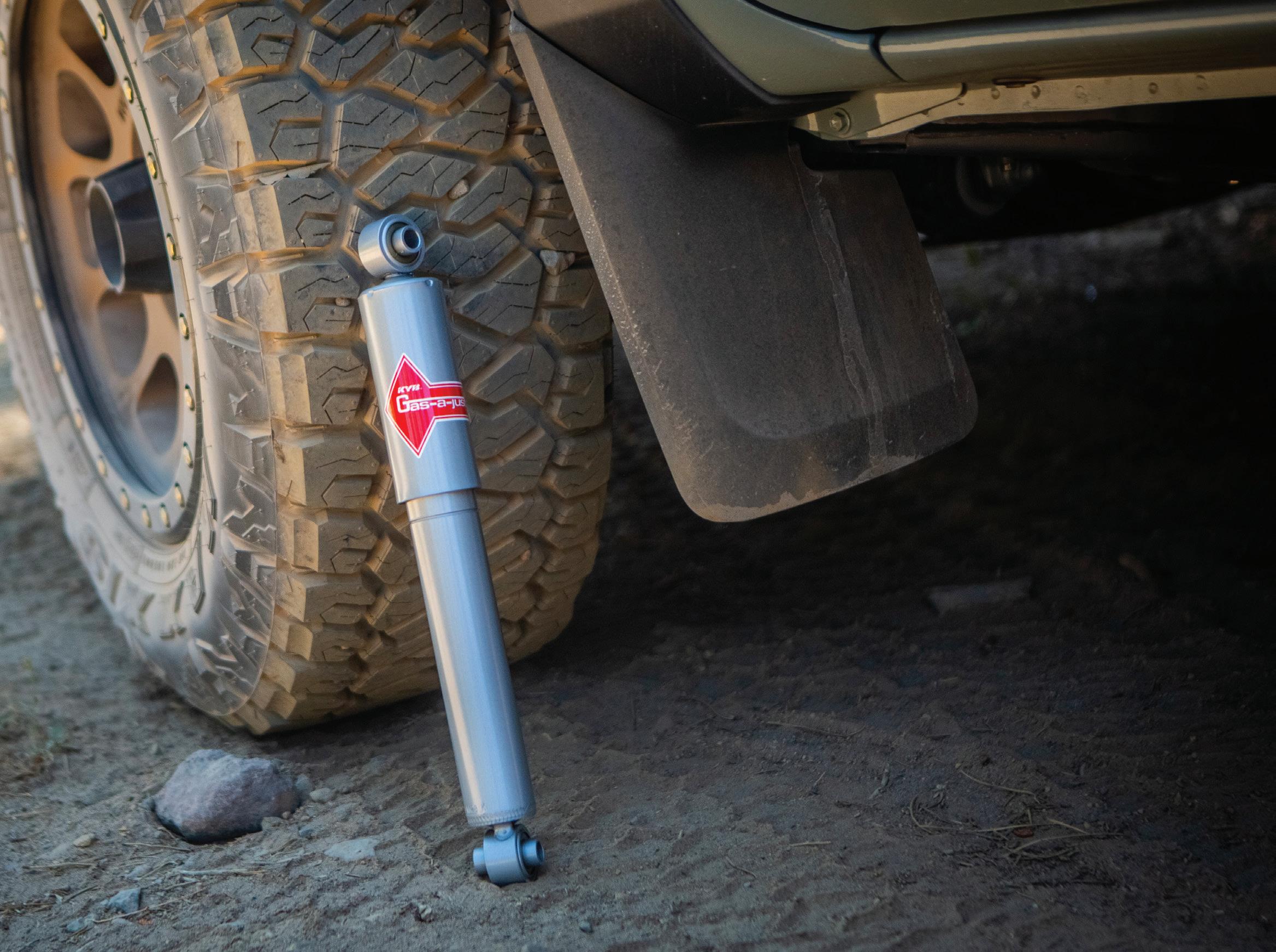
















AI is here — how are you using it? HOW TO GET THE MOST OUT OF THIS DEVELOPING TECHNOLOGY
By Madison Hartline
The utilization of arti cial intelligence (AI) has become more common in various retail applications over the last few years — and tire retailing is no di erent. According to a number of companies that o er AI solutions, more tire dealerships are taking advantage of the bene ts that AI has to o er. O cials at these companies break down how tire dealers are currently using AI tools and the future of AI in the tire retail segment in this MTD exclusive.
MTD: Are more tire dealerships using AI products and tools?
LUKAS KINIGADNER, co-CEO of Anyline Inc.: Absolutely. We’re seeing a clear uptick in AI adoption across the tire industry. Dealerships of all sizes are looking for ways to modernize without overhauling their entire operation and AI offers exactly that: smarter, faster ways to do the same work with greater
accuracy and consistency. Whether it’s inspections, inventory decisions or service recommendations, AI tools are helping dealers reduce manual effort, deliver
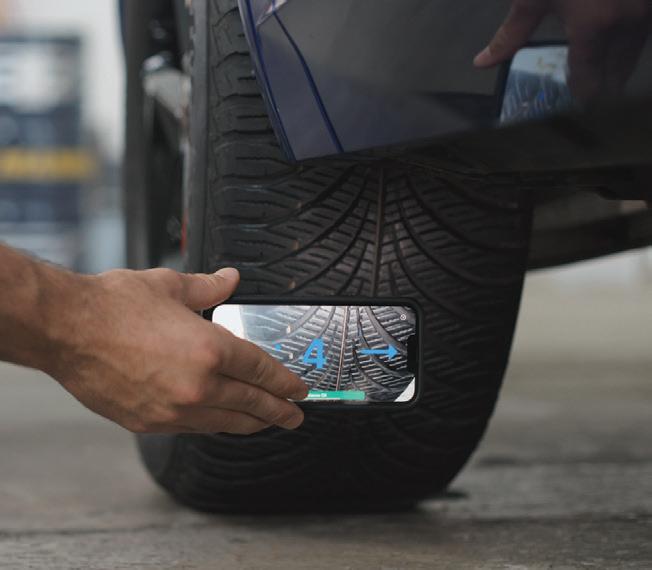

“Tire dealers are increasingly hungry for AI solutions because automation offers real answers to both longstanding industry pain points and emerging consumer demands,” says Todd Richardson, CEO Atrium Solutions Inc. & In Motion Brands.
Photo: In Motion Brands
better service and stay competitive in a rapidly digitizing market.
TODD RICHARDSON, CEO and president at Atrium Solutions Inc. and CEO at In Motion Brands: Absolutely — 100%. While we’re still in the early days of fullscale adoption, the momentum is undeniable. Tire dealers are increasingly hungry for AI solutions because automation o ers real answers to both long-standing industry pain points and emerging consumer demands. ese include:
• Missed revenue opportunities due to unanswered calls or poor follow up;
• Labor shortages and overworked frontline sta ;
• Rising customer expectations for speed, expertise and 24/7 availability;
• e high cost of traditional customer service models, and;
• Data-driven decision-making replacing gut-based management.
AI is not just a buzzword. It’s becoming a core pillar of operational e ciency.
JEREMIAH WILSON, CEO, Convirza: Absolutely. We’re seeing strong momentum as tire dealers adopt AI tools to compete more e ectively and sell more. e adoption of AI tools in tire dealerships is not just a trend. It’s a strategic move toward using AI to make your day easier. With the increasing volume of customer interactions, especially phone calls and texts, (dealers are) turning to AI to ensure no opportunity is missed.









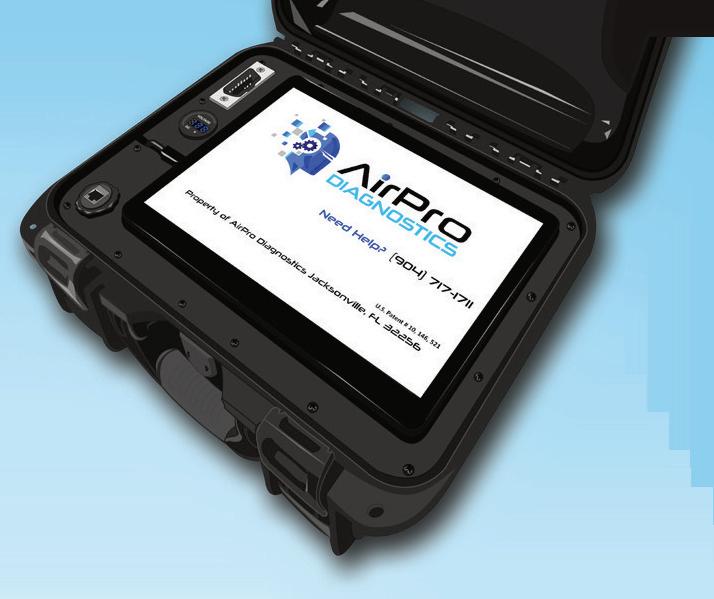
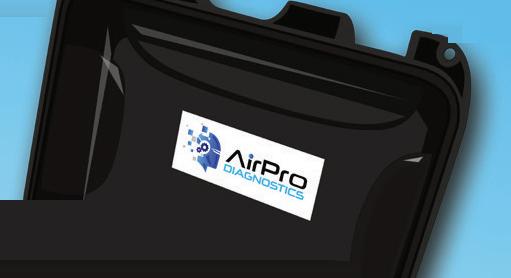





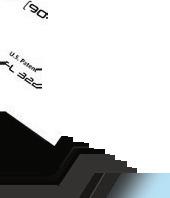





The effectiveness of your repairs depends significantly on the quality of the service and support you receive. AirPro’s vehicle diagnostics tool is fast, reliable, and accurate. When combined with ORION, AirPro’s cloud-based diagnostic management system, it serves as a central hub for delivering all services.





Inquire about our game-changing mobile FFC calibration system.

Let AirPro Diagnostics handle the heavy lifting and rely on our remote Brand Specialists to support your pre and post-alignment recalibration needs.




STEVE LEE, co-founder and chief technical o cer, Leverege: Absolutely. e tire service industry is undergoing rapid transformation and AI adoption is accelerating across the board, from national chains to independent shops and franchises. As operational margins tighten and customer expectations for speed and convenience grow, tire dealerships are turning to AI to stay competitive. What used to be a niche innovation is now quickly becoming a core part of how modern shops operate.
LINDA GRAY, CEO, Mastertech.ai: Yes. From our conversations with tire dealers and service centers, more and more businesses are incorporating AI tools and technology into their work ows. Many of them are proactively seeking out new AI tools to evaluate how they can enhance their business.
RYAN LOUIS, CEO, Revmo AI: From my seat at Revmo AI, the answer is a resounding yes. AI has moved from “interesting” to “inevitable” in the last 18 months. We’re seeing independent tire dealers and chains treat AI the way they treated websites 20 years ago: an unavoidable front door to the business. Most start small — a er-hours call answering, simple appointment booking, etc. — but once they see the uptick in captured calls and ticket value, expansion is quick.
IVAN CERAJ, head of platform at TireTutor: Across automotive more broadly, we’ve seen AI being used to book appointments and chat bots being used to interact with customers. I think there’s a lot of wide-open space here to provide the tire industry with solutions made speci cally for them.
MTD: What are some other ways tire dealerships are currently using AI?
KINIGADNER (Anyline): Today, many dealerships are using AI to digitize some of the most time-consuming and error-prone parts of their work ow. Tire inspections are a prime example. Instead of manually checking DOT codes or tread wear, AI-powered apps can now capture that information instantly using just a smartphone. AI insights are being integrated into point-of-sale systems, so technicians can o er timely recommendations


“The adoption of AI tools in tire dealerships is not just a trend. It’s a strategic move towards using AI to make your day easier,” says Jeremiah Wilson, CEO, Convirza.
Photo: Convirza

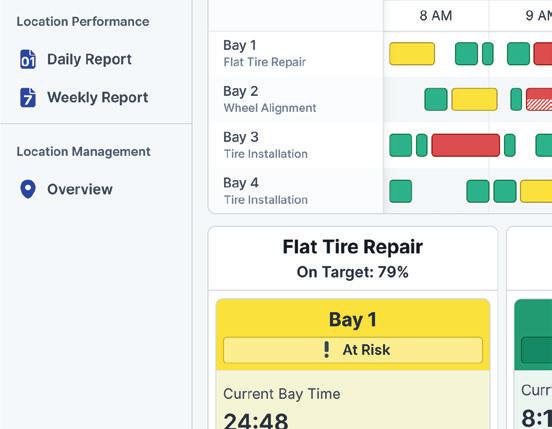





“AI systems like PitCrew use Vision AI to monitor service bay utilization, detect bottlenecks and improve throughput in real time,” says Steve Lee, co-founder and chief technical offi cer at Leverege.
Photo: Leverege
or service bundles while the customer is still in the bay.
RICHARDSON (Atrium, In Motion Brands): AI is reshaping nearly every aspect of the tire dealership, from customer-facing tasks to backend operations. Some of the most common and e ective current uses include:
Front o ce support. Many tire dealers are shi ing toward a hybrid customer service model, where AI supports the front desk team.
Emergency roadside service (ERS). Commercial tire dealers, especially those servicing eets, are revolutionizing how they manage roadside breakdowns. AI-powered ERS platforms streamline

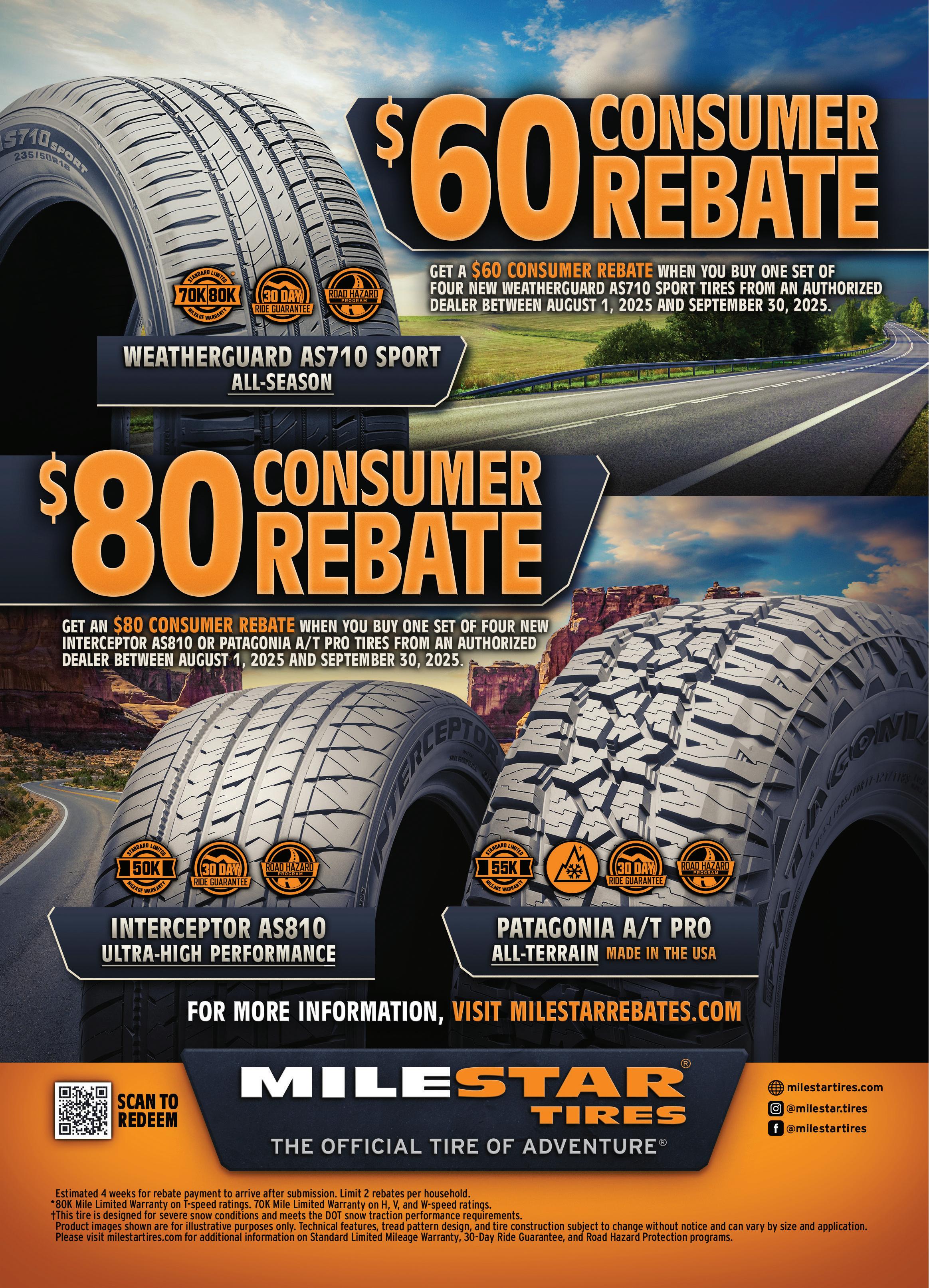


dispatching, eliminating the manual backand-forth and reducing dispatch times from 30 minutes to as little as 15 seconds.
Marketing automation. Any tire dealer handling marketing in-house is increasingly turning to AI tools for email automation, ad performance optimization, customer segmentation and predictive campaign targeting.
Business intelligence and planning. Dealers are leveraging AI-driven analytics to gain real-time insight into sales, service performance, technician e ciency and inventory management.
WILSON (Convirza): (AI can) identify missed opportunities from phone calls where potential leads weren’t properly handled or followed up; monitor and track agent performance by analyzing call content, tone, responsiveness and adherence to scripts; and AI voice agents answer calls 24/7 and even schedule appointments directly into shop calendars.
JIM KRAKOWER, director of system development, JMK Computerized Tire Dealer Information System Inc.: Back-ofce e ciency automates mundane tasks and eliminates typos. (AI can help) automate processing daily tasks of justin-time parts/tire invoices from vendors. It can also seamlessly integrate all aspects of accounting with multi-corporation nancial statements and state use tax to minimize manual entry. AI helps the sales counter automate quotes and fully integrate digital vehicle inspection and direct alignment machine link. It could also incorporate predictive analytics for product/service recommendation.
LEE (Leverege): AI is nding its way into virtually every part of tire service operations. Common uses include:
Service bay intelligence. AI systems ... monitor service bay utilization, detect bottlenecks and improve throughput in real time. is results in more e cient bay usage, enabling shops to complete more jobs per day without increasing sta — driving higher daily invoice counts and boosting overall revenue.
Wait time forecasting. AI trained in real-world service data provides accurate repair time estimates based on vehicle make, model and service type. Inventory management. AI models help
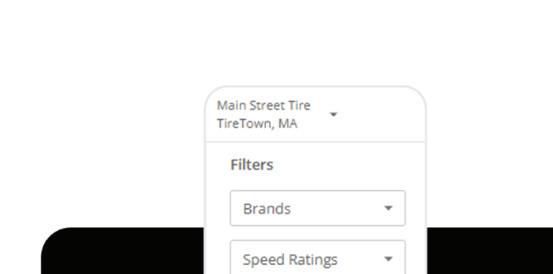
Photo: TireTutor
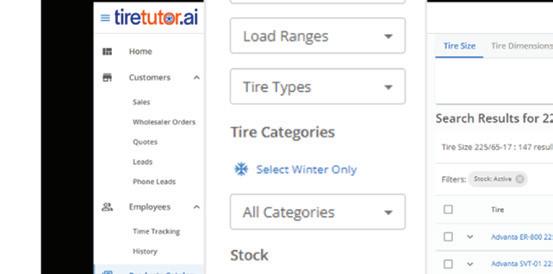


optimize stock levels, reducing over-ordering while ensuring critical parts are always available.
“AI-based programmatic tire pricing takes in a huge number of different inputs and then programmatically calculates a price for the dealer,” says Ivan Ceraj of TireTutor.


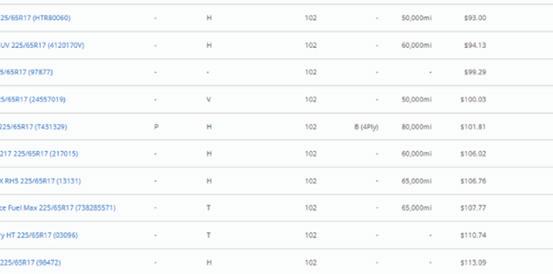

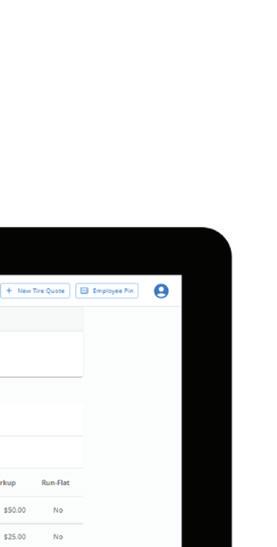


Service//SMART (pictured) uses a QR coded vehicle sticker and customer’s own smart phone for direct access to the vehicle service history and ability to make new appointments.
Point-of-sale and CRM. Shops are integrating AI into their front-end systems to personalize customer recommendations, streamline check-ins and automate follow-ups and marketing.
Photo: JMK Computerized Tire Dealer Information Systems Inc.
Queue and sta optimization. Realtime monitoring helps managers rebalance technician workloads and service scheduling dynamically.
GRAY (Mastertech.ai): Many dealerships are using AI for helping with phone answering and scheduling, which is a great use of the current AI technology.
LOUIS (Revmo AI): Today’s smartest dealers point AI at their biggest chokepoints: quoting, ordering and call overow. A 24/7 voice agent answers every ring, pulls tire size from the plate or VIN, checks live inventory across local warehouses, quotes good-better-best options and books the job — all before the caller would have reached a human. Routine questions — hours, rotations, TPMS lights — are handled on the same call or by quick




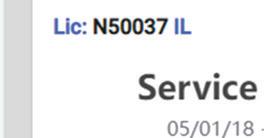






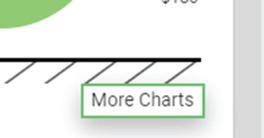
















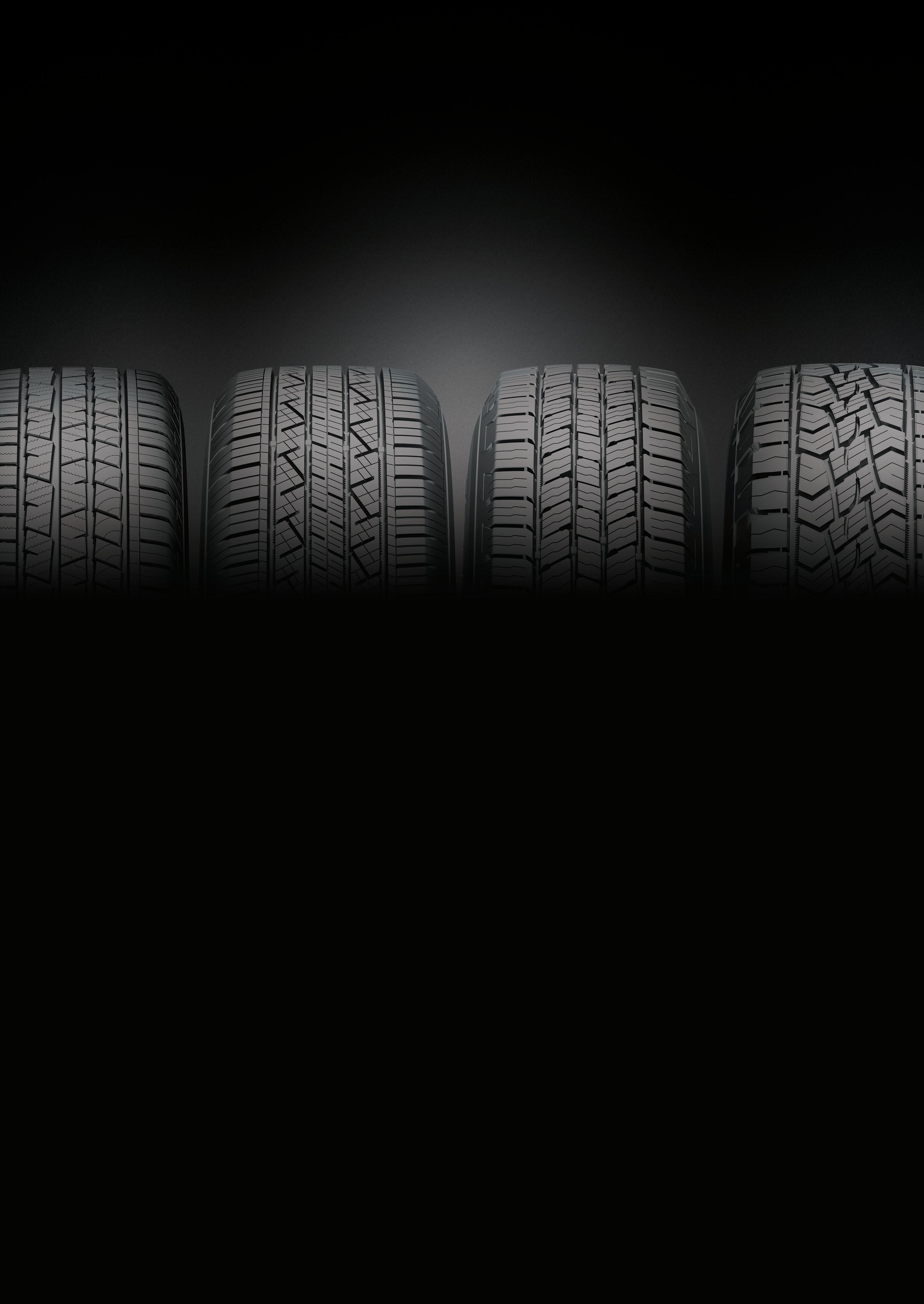

* MAIL-IN REBATE WITH QUALIFYING CONTINENTAL TIRE PURCHASE OFFER: Valid only with qualified purchase made in the 50 United States, Washington, D.C., and Puerto Rico between 07/01/2025 and 08/31/2025 or while supplies last. Void where restricted or prohibited by law. No rain checks. Submission must include copy or original, dated, paid, itemized receipt and invoice for the purchase of four (4) new qualifying CONTINENTAL TIRES from a participating retail dealer and a completed rebate form. For online purchases, an original, dated, itemized proof of installation also must be submitted. Offer may not be combined with any other offer, discount, rebate, or promotion. Tires must be purchased in a single transaction. Rebate form must be postmarked or submitted online by 09/30/2025. Offer not valid on purchase by wholesalers, dealers, fleets, OEM customers, or other commercial entities or on returned merchandise. Requests from those with an invalid or undeliverable mailing address will be denied. Limit two (2) Continental Tire Prepaid Mastercard cards per person, household, email or address. The Prepaid Mastercard is given to you as a reward, refund, rebate and no money has been paid by you for the card. Physical card is issued by Pathward®, N.A., Member FDIC, pursuant to a license by Mastercard International Incorporated. Mastercard and the circles design are registered trademarks of Mastercard International Incorporated. No cash access or recurring payments. Card can be used where Debit Mastercard is accepted. Card valid for up to 6 months; unused funds will forfeit after the valid thru date. Terms and conditions apply. Not responsible for late, lost, stolen, misdirected, illegible, mutilated, or postage due to mail or inability to connect to the website. Any taxes, fees, or costs, including but not limited to installation, are sole responsibility of the recipient. Allow 8 to 12 weeks for fulfillment. Each time you use the card, the amount of the transaction will be deducted from the amount of your available balance. Card will be
in the name on the rebate form only. Expiration date of
is on the front of card. Card is non-transferable. Visit
SMS follow-ups, freeing counter staff to focus on customers already in the bay.
CERAJ (TireTutor): A great example is tire pricing, which can be incorporated into a larger point-of-sale platform. AI-based programmatic tire pricing takes in a huge number of different inputs and then programmatically calculates a price for the dealer, so they don’t have to worry about doing math at the counter. It saves time and it ensures they can maintain margin at all times.
MTD: What future uses for AI do you envision at tire dealerships?
KINIGADNER (Anyline): We believe AI will become deeply embedded in every part of the tire service workflow, not just at the inspection stage. In the near future, we expect AI to handle everything from automated check-ins to real-time vehicle diagnostics, minimizing technician workload and maximizing efficiency. Another exciting frontier is technician training and knowledge. Imagine a built-in tire expert companion — powered by generative AI — that can answer any tire-related question, help interpret inspection results and even analyze photos for edge cases or damage. With AI, every technician can have expert-level guidance in their pocket.
As more of these tools are adopted, the volume and quality of AI-powered data will unlock smarter decision-making across the entire business, from operations to customer engagement.
RICHARDSON (Atrium, In Motion Brands): Our stance is simple: the future is already here. It’s just not evenly distributed. Business owners must stop calling in their orders to the order desk and instead embrace the full capabilities of digital and AI technology. Looking ahead, we believe that AI and robotics will transform every job and function within a dealership. From autonomous mobile service units to fully integrated CRM platforms that manage customer lifecycles without human intervention, the opportunities are endless. However, the one constant is the human touch. As long as customers value genuine interactions and we can find people for those roles, there will always be a place for people in this industry. Dealerships that
harnesss AI to handle routine work will give their people freedom to excel at what humans do best.
WILSON (Convirza): Looking ahead, we see widespread adoption of AI voice agents. More shops are using AI to identify missed sales opportunities and provide better customer service.
LEE (Leverege): AI will evolve from a passive observer to an active orchestrator of daily operations. Here are just a few high-impact use cases on the horizon:
AI co-pilots for shop managers. Realtime recommendations for technician assignments, upsell opportunities and customer queue rebalancing; Integrated customer profiles across visits. AI will connect the dots between tire wear patterns, alignment history and service records to suggest proactive services, boosting safety and sales; and Automated service planning. AI will schedule appointments automatically based on historical demand, technician availability and even weather or local events.
The future of AI in tire service is predictive, personalized and proactive.
GRAY (Mastertech.ai): I strongly believe that in the near future, AI will be integrated into every aspect of the workflow — not just in the tire dealer industry, but across most vertical industries and sectors. For tire dealers specifically, I see AI enhancing everything from front-end customer relations to scheduling, workload management, inventory optimization, service need analysis, personalized service recommendations and assisting technicians in completing jobs more efficiently.
LOUIS (Revmo AI): The next wave is predictive service orchestration. Machine-learning models will combine tread-depth scans, mileage data and driving patterns to predict the exact week a customer will need new tires. Your AI agent will then automatically text or call with a personalized quote, check the customer’s digital calendar for open windows and drop the appointment onto the shop’s schedule. It’s the same, just-show-up convenience that ride-share apps have trained us to expect, applied to tire replacement and every follow-up service.
CERAJ (TireTutor): Tire forecasting and inventory management is a great use case that I think we’ll see more of soon, taking a lot of inputs and helping a dealer understand what kinds of tires they should be ordering — and in what quantity — to maximize their potential revenue. For that to be successful, you really need access to a lot of data to train the model.
MTD: What are some of the AI products you offer for independent tire dealerships and what are the features and benefits of those products?
KINIGADNER (Anyline): At Anyline, we’ve developed two key solutions for the tire industry. The first is TireBuddy, our mobile inspection app designed specifically for independent tire dealers and service teams. It allows technicians to scan tire sidewalls, capture DOT codes, measure tread depth, detect visible damage and scan VINs, all using a standard smartphone. The entire inspection process takes less than a minute, requires no extra equipment and provides clear, AI-verified results that improve accuracy and build customer trust. For larger service providers or enterprise customers with their own apps, we also offer the Anyline SDK — a powerful set of tools that can integrate directly into an existing workflow. This allows companies to embed our scanning and AI capabilities — including tire data, VIN recognition and barcode capture — into their own branded apps.
RICHARDSON (Atrium, In Motion Brands): We offer a suite of purpose-built AI tools specifically designed to help tire and auto repair businesses grow while reducing operational pressure:
AI Service Advisor Agent lowers inbound call volume to service advisors and counter staff by 20% to 50% and ensures every call is answered and captured, while collecting more accurate, consistent and actionable customer information. It features appointment booking, multilingual support, customer detail collection, quote assistance and intelligent routing;
AI Fleet ERS Platform automates fleet dispatch for emergency tire service. It features instant customer data intake, automated dispatching and fleet profile recognition; and


Introducing the completely redesigned Prinx HiCountry A/T2 .






• 3PMS Rated
• 50K Mile Warranty
• Aggressive Tread
• Enhanced Sidewall
• Road Noise Resistant
• 42 SKUs
Practical performance for the long haul.™
Upgraded based on your input and growing customer demand—Prinx Tires next-gen all-terrain light truck tire features a more aggressive tread design and is now available in 42 SKUs.
All at a price point that leaves room for you to make your margin and your customer to meet their budget.

Scan here to become a Prinx Tires dealer.
AI Call Center Agent replaces or supplements traditional call center services. The AI Call Center features natural voice conversations, appointment setting and multilingual support.
AI doesn’t replace people. It empowers your team, improves responsiveness and helps you deliver a stand-out customer experience. For tire dealers ready to compete in tomorrow’s market, the time to adopt AI is today.
WILSON (Convirza): Conversation analytics analyzes every call for lead quality, sales readiness and missed opportunities; Agent scoring and coaching automatically scores calls based on performance criteria, helping managers coach more effectively and ensure quality service; and AI Voice assistant (serves as a) virtual receptionist that answers, engages and books appointments — ideal for after-hours coverage or busy peak times.
KRAKOWER (JMK Computerized TDIS Inc.): Collaboration of 10 goal-driven AI software modules:
Service//SMART uses a QR coded vehicle sticker and customer’s own smart phone for direct access to the vehicle service history and ability to make new appointments;
J-Portal allows commercial/wholesale customers smart phone remote access to their service and payment history, with (the) ability to easily create new appointments, and many more options;
J-Buzz PLUS automates two-way text/ emails customer contact extrapolated from service history and sales counter vehicle follow up triggers;
J-Doc PLUS (allows a dealership to) go paperless and store customer invoices, related parts vendor (information) digitally, to include handwritten notes/comments. It also loads just-in-time vendor invoices directly into the system;
Audit//TRAC validates just-in-time vendor supply invoices back to accounts payable accounting, inventory control, sales invoice cost assignment and vendor returns or cores tracking using optical character recognition technology.
J-Tab fully integrates digital vehicle inspections with related features;
Trac//SMART offers advanced in-shop tracking of vehicle service process via
extensive bar codes and keeps employees and customers up to date on vehicle status with extensive tracking of employee productivity and optional customer text messaging;
J-Dash (is) an analytics platform and management advanced information tool with over 90 charts/graphs and extensive guidelines on inventory, employee tracking productivity;
J-UPC harnesses your staff’s smart phones or tablets for easy-track AI, an in-store (warehouse) smart device inventory tracking or control allowing dealers to repurpose staff’s existing hardware to validate inventory on hand, and;
J-Custom AI (creates) bespoke AI systems to dealer’s exact operational requirements, supported by a deep talent pool based in four states and 50-plus years of extensive industry experience.
LEE (Leverege): Our flagship product for tire dealerships is PitCrew, an AI-based real-time service bay intelligence platform. It’s designed to turn service centers into high-efficiency, high-throughput operations. Key features include:
Real-time bay monitoring: Uses Vision AI to analyze live video feeds and track bay occupancy, vehicle make and model, machine and tool use and job status;
Predictive wait time forecasting: AI-trained on real service data provides accurate job time estimates to set realistic customer expectations, and;
Labor tracking and optimization: Monitors technician workflows, tracks time spent per service and highlights staffing inefficiencies. This helps shops ensure the right number of technicians are assigned at the right time, improving productivity and reducing idle labor costs.
GRAY (Mastertech.ai): At Mastertech. ai we are building AI products to help advisors maximize service opportunities for every vehicle and increase ARO, while also assisting technicians in completing repairs more quickly, easily and safely.
LOUIS (Revmo AI): In short, Revmo’s suite turns every inbound interaction — calls, texts, promo redemptions — into a fully-tracked, revenue-generating workflow.
The AI Voice Agent makes sure no call goes unanswered; the Conversation
Analytics Center converts those calls into actionable insights and coaching; Smart Coupon Wallet Links close the loop by delivering perfectly-timed offers and measuring redemption; and Ignite Integrations drop all that data straight into the shop’s existing POS and CRM. The payoff is national-chain sophistication — higher booking rates, granular ROI visibility, and faster go-live — delivered on a pay-for-value value pricing model.
Revmo Voice Agent (provides) 24/7 conversational phone agent that answers every call, books service, sends SMS and upsell links. (It) captures missed revenue and frees counter staff.
Conversation Analytics Center (provides) live transcripts, intent tags (“tire quote” or “alignment”), booking-rate dashboards and coaching prompts. (It) improves close rates and proves marketing ROI.
Smart Coupon Wallet Links (has) AI choose the right offer, deliver via SMS/ wallet and tracks redemption back to the call. (It) offers 17% to 20 % average redemption without blanket discounts.
Revmo Ignite Integrations (provides) plug-ins for TireMaster, Tekmetric, BayIQ, MaddenCo and open API. (It) goes live in less than two weeks, no rip-and-replace.
CERAJ (TireTutor): We have a number of solutions currently available to dealers and more in development. AI-enabled programmatic tire pricing is one where we are adding more and more AI powered insights all the time; we continuously update prices of over 300,000 SKUs based on many factors; and we allow dealers to adjust their pricing based on this data and their business strategy.
We also have an AI agent that can take tire orders over the phone in both English and Spanish. It’s specifically intended for larger dealers and helps reduce wait times and free up staff during busy times.
Our analytics suite is powered by AI — not just providing dealers with the data, but helping dealers quickly interpret charts and uncover key insights.
And finally, we have an algorithmic traffic acquisition product, which uses AI to maximize return on the dealer marketing investment, ensuring that they’re paying for the right traffic at the right time. ■
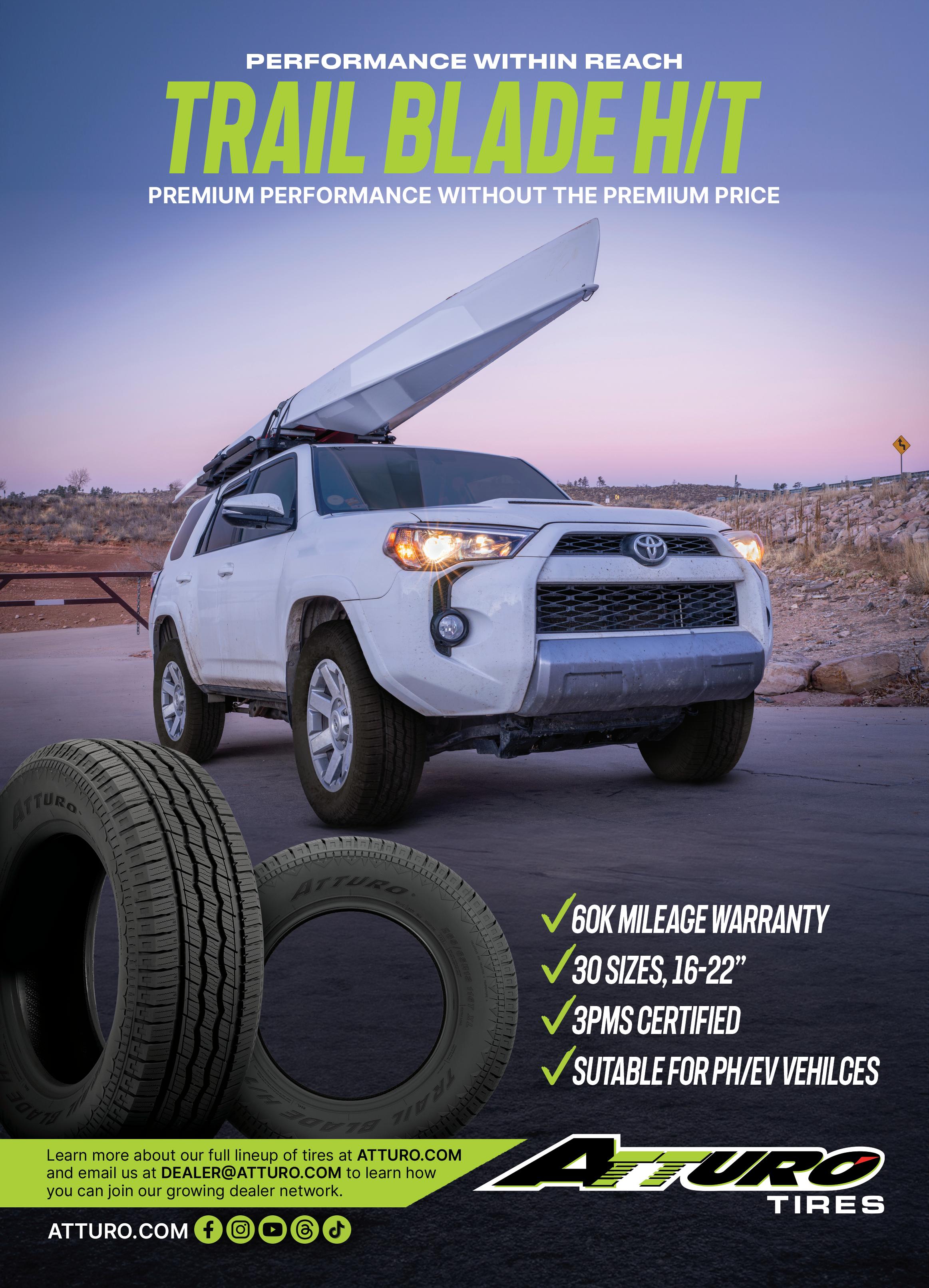

J. Mark Jackson By


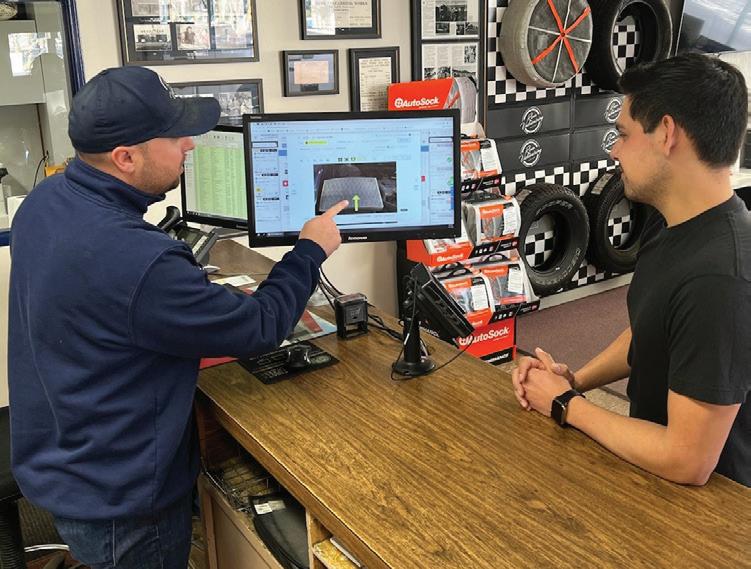



Salespeople are the tip of the spear in a trusting dealer/ customer relationship, but all support functions that touch the customer contribute.
Photo: Reno Vulcanizing
The foundation upon which all meaningful relationships are built — including dealer/customer relationships — is trust. It’s a word that’s battered around and referred to ad nauseum, but little has been written about how we can identify or build trust. e word may seem to stand alone as self-evident, but it’s not.
Previously in MTD, I wrote an article about why customers choose to stay with a particular supplier, with trust being the key factor. e purpose of this new article is to describe what trust looks like, how it feels and methods to build and nurture trusting relationships with your customers.
Trust is knowing that another person or organization is there for you, without concern for personal interest. It’s a twoway street. Trust must be mutual. Both parties need assurance that the other has their back, no matter the situation. Trust is built in stormy weather when a problem needs a solution. Only when two people realize that they will work together to resolve a situation, no matter how ugly, is trust established. is extends to organizations, as well. Any organization, including your business, has a personality. Customers want con dence that your organization cares enough to absorb their pain or concerns and will meet them with a workable answer.
An example of this kind of trusting relationship might help paint a picture. My wife died suddenly many years ago. When
I called my friend, Tim White, to tell him about the tragedy, he answered, “I’ll be there.” Was he ever! I didn’t see Tim until the funeral, but the funeral director asked me prior, “Do you know Tim White?” e director told me that without my knowledge, Tim had been managing details quietly for several days behind the scenes, so that our family could focus on grieving. Tim expected nothing and had spent time and money being present, though he lived 500 miles away. I did not “owe him one.” e funeral director ended our meeting by saying, “ at’s a quality person.” He could not have been more right. Tim White went from being a good friend to someone to whom I knew I could entrust my life. He knows I have him covered, too.
Trust isn’t only built in catastrophic times of crisis. It’s reinforced in millions of various interactions which convey that within the relationship, we are caring partners in each other’s success. ese touch points say, “We are in this together, good and bad.” And they don’t set the expectation that someday, we’ll call in “a chip” or expect payback. True trust is not formed under a quid-pro-quo assumption that you are owed something in return. A quid-pro-quo relationship is transactional — “I do this and you do that.” I have been in situations where someone will say, “You’re going to owe me for this.” I have o en responded, “ en just forget it.” Both parties realize that a great favor or service is occurring, but placing expectations for repayment runs counter to building trust.


Here’s the corollary to this concept. If one party is always giving and the other never seems interested in reciprocating in like spirit, it’s a one-sided relationship and not a true, trusting relationship.
Not all relationships are destined to become trusting relationships. Not all people, including employees and customers, are receptive to — or interested in — building trust. In these cases, we provide good service or help within the bounds of profit margins and physical capabilities. But we will not move heaven and earth for them.
Let’s examine another example of what trust looks and feels like. In our example Rob is the customer and Dave is the supplier. Rob’s car broke down two miles away from Dave’s shop. Rob walked to Dave’s shop in a panic. He has a critical meeting he’s going to miss, leaving his child stranded at school. Dave gets Rob’s keys and gives Rob the keys to his own personal car so he can attend his meeting and pick up his child. When Rob succeeds at both of his tasks and returns to Dave’s shop, Rob’s car is in the parking lot — fixed and ready to roll. Rob, with gratitude in his voice, says, “Wow, how much do I owe you?” Dave, smiling, says, “Nothing. It was only an adjustment to a part.” Amazed, Rob says, “Listen, I really owe you.” Dave responds, “No, you don’t. I’m just glad we could help.”
In this scenario, Dave’s actions qualify him for sainthood — or at least auto service provider of the year. Fast forward three months and Rob sees Dave at the grocery, Dave tells him, “My wife is sick and I’m staying home with the kids. I guess I won’t open the shop today.” Rob tells Dave, “I’ll come get the kids and they can stay with us today. Go open your shop.” (This assumes that the two know each other well already.)
The above scenarios are exaggerated, but you get the point; a trusting bond is established upon which they can continue to enhance and grow. Both care for each other on a personal level. They are partners in success — in good times and bad. Suppose Rob had told Dave in the grocery store, “Ah, that’s tough luck. Hope they feel better soon.”
The relationship would still exist, but it would not be a mutually trusting relationship. The loop was not closed in that case and the trust remained one-sided. Both Rob and Dave have not proven that they deeply care about each other.
‘When the customer can depend on your company and your company can depend on the customer, trust is driving the relationship.’
Rob cares about what Dave can do for him. That’s a higher level of a transactional relationship. In business, we gladly accept this relationship, but we cannot define it as trust. Instead, we’re shooting for win-win, but at a heartfelt level.
As mentioned, organizations and companies have personalities and must build trust with customers and clients. Building a company that customers can trust is difficult because it asks the entire company to deeply care about the customer. Touch points become the key here. Whatever functions within a company come into direct and indirect contact with the customer must embrace and display deep caring for the customer and their success. Perhaps the customer service team cares for the customer at a personal level, but if the credit department does not, the organizational personality is not open to building trusting relationships.
Salespeople are the tip of the spear in a trusting dealer/customer relationship, but all support functions that touch the customer contribute. Consider it like the human body. When the heart — let’s call this “sales” — functions, but the lungs and brain do not, the body will not thrive, let alone survive.
Organizations must function as a whole, committing to making all touch points an opportunity to build trust.
Naturally, the customer must be open and eager for a trusting relationship. If the company allows the customer, say, extended credit terms on an order and down the road the customer forgives a critical order that goes astray, then a trusting bond is being formed. Both are working as partners, especially when things go wrong. Both the company and the customer work diligently on maintaining and growing their trust together.
The skills for building trust between tire dealerships and their clients are the same as between people, with this caveat: ensuring all functions think as one regarding the importance of trust. This is no easy task because the organization has so many people flowing into one collective personality.
Trust is not guaranteed forever — just ask any divorce attorney. Trust may diminish over time. It requires nurturing, bolstering and reaffirmation over time. We can feel and see when trust is weakening. Trust bonds are loosening if the customer begins to seem less-committed and does not interact with your dealership as frequently or simply becomes a ghost. If the customer begins doing business with a competitor, something has diminished the bond of trust within the relationship. It’s important to do a trust checkup before you reach this point with a customer. Each tire dealership determines the cadence and method to conduct a trust checkup with its customers. However, the key question you need answered by the customer is, “How are we treating you and are our solutions for you still relevant?”
Finally, we cannot measure trust in dollars and cents. Trust does not fit neatly onto an Excel spreadsheet. But trust shows indirectly on financial statements. When you care about your customers at a deep level, they tend to spend more money with your company. When you focus on their needs instead of your own needs, they believe in you and reward you with additional business. That you can measure on your business’ financial statements.
In the beginning, trust is spelled with a small “t” through small acts of caring and fairness. But as both parties up the trust ante, the relationship grows and blossoms. When the customer can depend on your company and your company can depend on the customer, trust is driving the relationship. ■
J. Mark Jackson is a 30-year veteran of the tire industry and a founding partner of Guidon LLC, a leadership and resilience training/consulting organization. A former U.S. Army officer, he was awarded the Bronze Star for combat service in Afghanistan. He has mentored senior government executives and all levels of industry personnel in leadership, resilience, sales, marketing and business planning. He also is a professor at Flagler College. Jackson can be reached at jmarkjackson238@gmail.com.
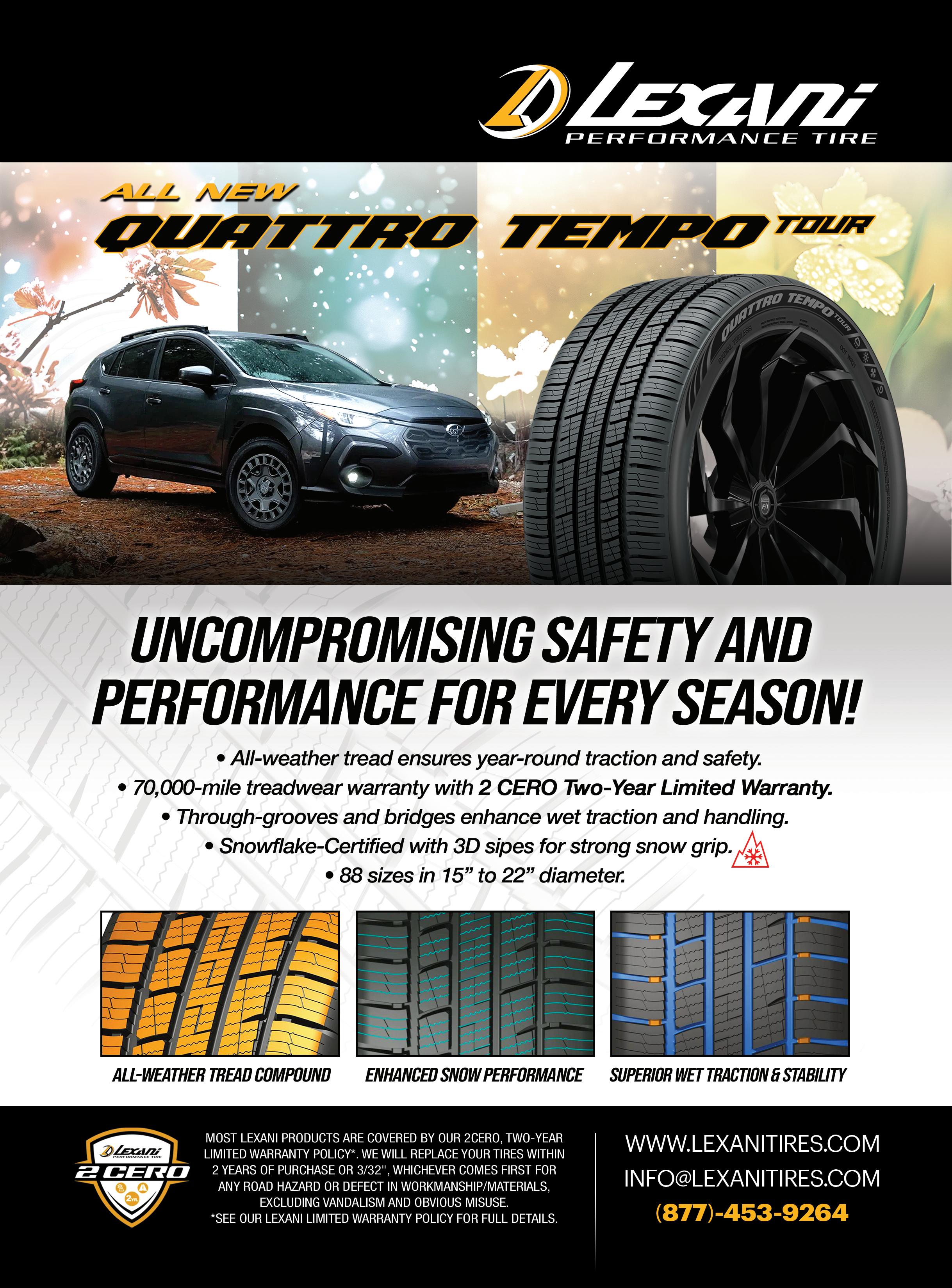







By
Kim Klimas
Customers who bring their vehicles in for routine services like alignments or windshield replacements o en don’t realize that without proper advanced driver assistance system (ADAS) calibration, vehicle safety features can hit serious operational snags.
Dealerships that can recalibrate ADAS while educating customers and promoting these services can gain a solid leg up, as these ADAS experts explain.
MTD: What are the biggest customerbased pain points when selling ADAS service and how can dealers bypass those hurdles?
DUANE ‘DOC’ WATSON, technical trainer, Bosch Mobility A ermarket: Selling ADAS services to customers can be challenging due to a lack of customer awareness, perceived cost and the complexity of the technology. Customers may nd ADAS features confusing or feel they don’t need them, leading to distrust
in the service. Shops should attempt to educate customers about the specific ADAS features in their vehicles and how they enhance their safety and driving experience.
RYAN GERBER, ADAS product specialist, Hunter Engineering Co: Foremost is nding the ADAS service during the initial write-up. Next is communication of the ADAS service. e steps that will help clear these hurdles are to adequately identify the ADAS services that accompany the service or repair by using service information to nd the appropriate documentation for the work being performed. e next step is explaining how the ADAS service relates to customers in terms they can readily understand. is is why Hunter Engineering has developed free resources like explainer videos and learning tools to help with visualizing and understanding these ADAS systems. ese are high-level steps that will bring trust and value to the customer, which in turn will drive bottom-line growth.

“Shops should attempt to educate customers about the specifi c ADAS features in their vehicles and how they enhance their safety and driving experience,” says Duane “Doc” Watson, technical trainer, Bosch Mobility Aftermarket.
Photo: Bosch Mobility Aftermarket

“The dealer will need to make a concerted effort to connect ADAS functionality to real-world results, such as lane assist, blind spot monitoring, automatic braking and the rest,” says Ryan Gerber, ADAS product specialist, Hunter Engineering Co.
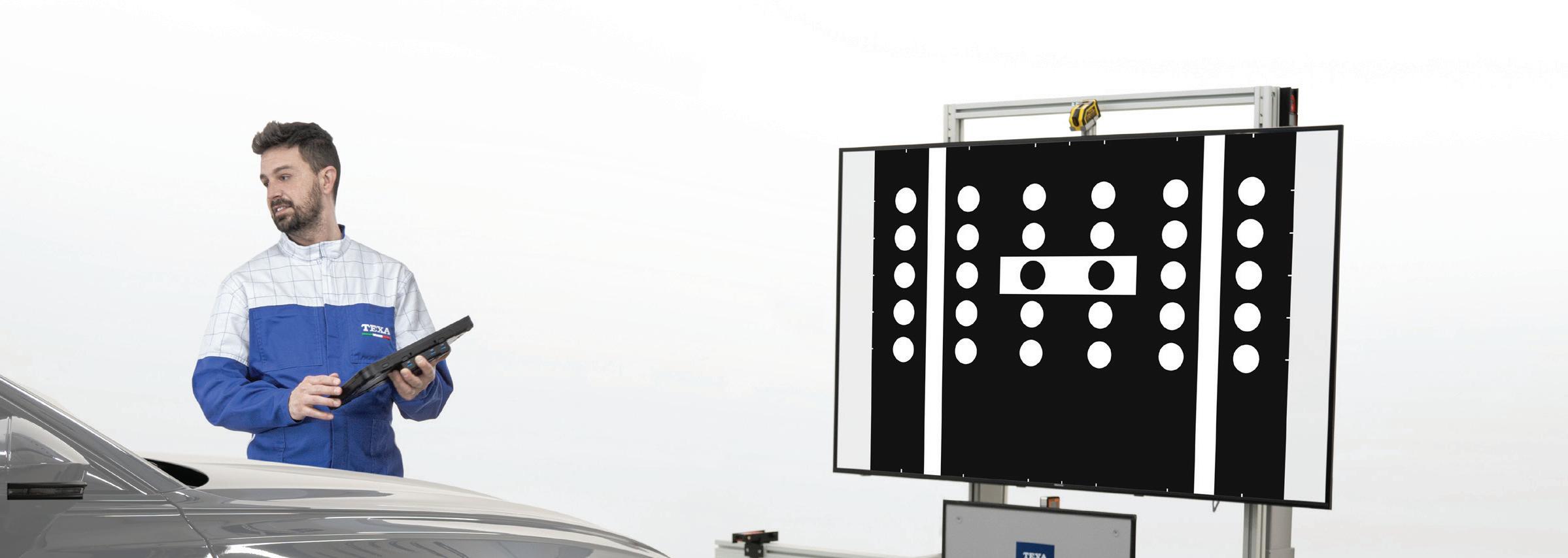












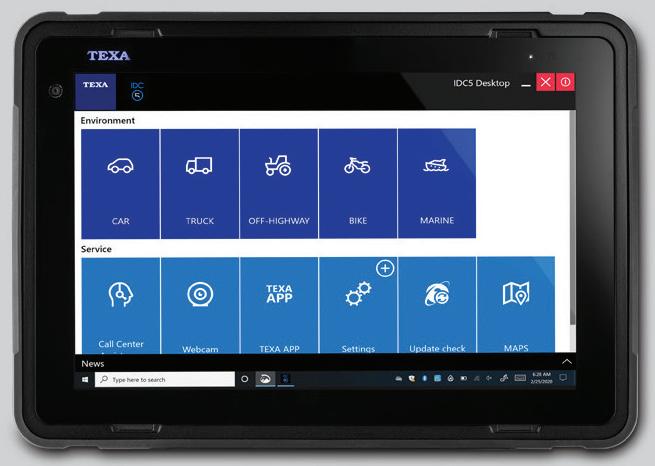
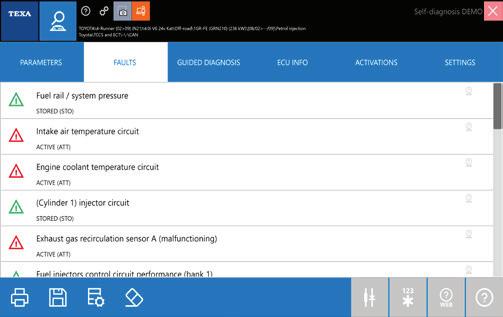















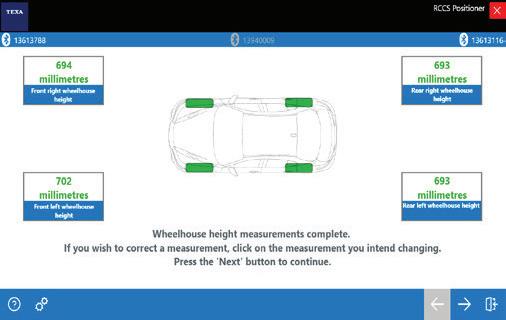













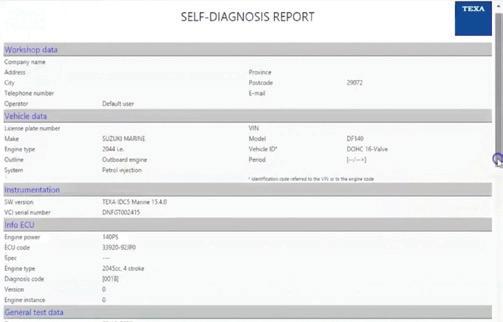

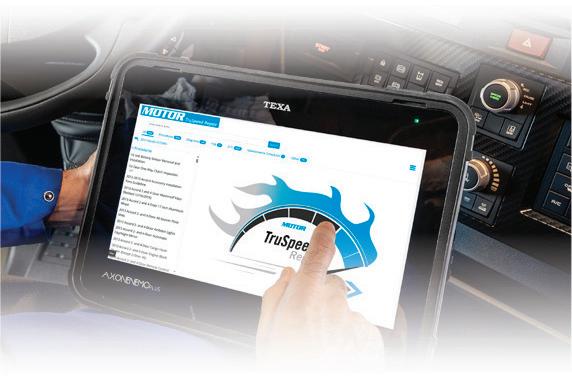





JOE RICHIE, network sales manager, OPUS IVS: Dealers can get ahead of these challenges by setting clear expectations right from the start and focusing on customer education. If a customer understands why something needs to be done and how you’re going to help them get it done right, it makes the whole process smoother. The more you demystify ADAS, the less resistance you’ll get.
MTD: How much do customers know about ADAS technology?
WATSON (Bosch): Many customers are unaware of what ADAS features their vehicles have, how they work or their benefits. ADAS calibrations can be perceived as expensive, and customers may hesitate to approve the service because of the cost. Shops should demonstrate the value of ADAS through practical examples and real-world scenarios, offer competitive pricing for ADAS services, include clear explanations of what is included and offer convenient appointment scheduling.
GERBER (Hunter): Customers know very little. They may be familiar with the output from the ADAS, like audible warnings, flashing lights, seat vibration or other electronic signals, but usually will lack a deeper understanding. The dealer will need to make a concerted effort to connect ADAS functionality to real-world results, such as lane assist, blind spot monitoring, automatic braking and the rest. Using the connect-the-dots approach will be persuasive enough in most situations and educational resources will help convince the rest.
RICHIE (OPUS IVS): It really depends on the customer. Some are well-informed. Others are just starting to get a grip on what ADAS even means. That’s why it’s crucial for the dealer to understand the shop’s unique challenges. The most effective sales conversations I’ve seen are the ones where the dealer pinpoints a real pain point ... and then shows how ADAS services can fix it. In short: don’t just sell ADAS. Solve a specific problem (that your customers) care about.
MTD: What sets certain ADAS services apart for tire dealers looking to move into the ADAS recalibration market?
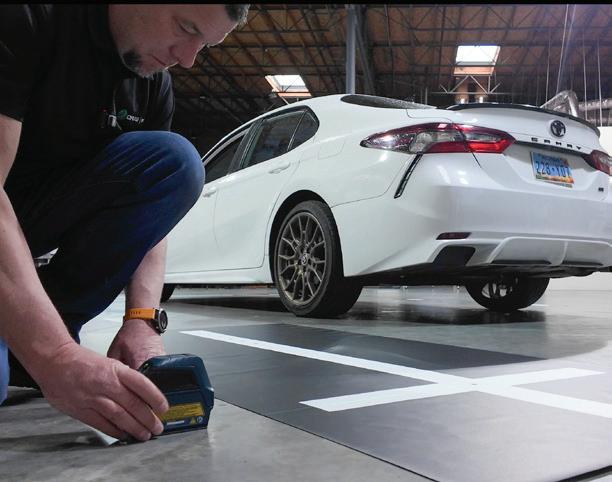
“If a customer understands why something needs to be done and how you’re going to help them get it done right, it makes the whole process smoother,” says Joe Richie, network sales manager, OPUS IVS. “The more you demystify ADAS, the less resistance you’ll get.”
WATSON (Bosch): Proper calibration is the foundation of ADAS functionality. When sensors are misaligned, even slightly, the safety benefits of these systems can be compromised or eliminated entirely. Calibration is required after windshield replacement, following collision repairs, when suspension or steering components are replaced, after wheel alignment is performed or when diagnostic trouble codes indicate calibration issues. ADAS calibration falls into two main categories:
Static calibration. This process is performed in a controlled environment with the vehicle stationary. It requires specific equipment, including calibration targets positioned at precise distances and angles from the vehicle. Bosch recommends a minimum space of 34 feet by 25 feet for performing ADAS calibrations with the DAS 3000 and accompanying equipment. This amount of space will allow for recalibration on most ADAS-equipped vehicles. However, depending on the vehicle size and type of calibration, it may require the vehicle to be moved within the space to complete a full recalibration. Spaces smaller than 34 feet by 25 feet can be utilized to recalibrate some vehicles and ADAS systems, but as the space decreases so do the number and types of vehicles that can be calibrated. Static calibration is commonly used for forward-facing cameras, radar sensors and 360-degree camera systems. The process demands exact measurements,
level surfaces and controlled lighting conditions to ensure accuracy. Dynamic calibration. Unlike static calibration, dynamic calibration requires driving the vehicle on well-marked roads at specific speeds while using a diagnostic tool that monitors and adjusts sensor settings. Dynamic calibration is typically used for lane-keeping systems, adaptive cruise control and some camera-based systems. The process requires careful attention to road conditions, weather and traffic to achieve proper results. Dynamic calibrations are easily done after wheel alignments and suspension service work.
GERBER (Hunter): Most important for tire dealers, the vast majority of ADAS work they’ll see based on their current services are forward-facing calibrations of cameras and radars. That’s because OEMs may require those calibrations after alignment or whenever a module is disturbed in any way, like a windshield replacement or bumper removal. In terms of space to accommodate these calibrations, the benefit of dynamic ADAS service is that no additional space is required. The vehicle is outside the facility, allowing another vehicle to be pulled in for work. Static ADAS service requires the vehicle to remain in the facility and additional space in front of the vehicle may be needed, although for many makes and models that space is typically less than 16 feet. That can usually be easily accessed by moving the car back in the bay. The good news is both services are accomplished rather quickly once you have the right tools for the job. The larger space requirements you hear about mostly come up in collision and body repair operations, so that shouldn’t scare tire shops away from profitable forward-facing ADAS calibrations.
RICHIE (OPUS IVS): ADAS is becoming a must-have, not a nice-to-have, especially as more vehicles on the road come equipped with this technology. For tire dealers, the right ADAS solutions can open up a new revenue stream and add serious value to their offering. But the real differentiator (is) choosing a solution that’s easy to integrate into their existing workflow, provides strong support and delivers consistent results. If the dealer feels like they’re contributing to the safe return of a vehicle to the road and making money while doing it, that’s a win all around.
MTD: What problems do ADAS services solve for customers that are key to highlight?
WATSON (Bosch): ADAS services help solve several problems for customers, primarily around safety and convenience. These systems aim to prevent accidents, reduce the severity of collisions and enhance the driving experience. ADAS features like automatic emergency braking, lane departure warning and blind-spot monitoring help drivers avoid collisions by alerting them to potential hazards and intervening when necessary. Systems like adaptive cruise control and forward collision warning can mitigate the impact of collisions by automatically adjusting speed and braking. Features like blind-spot detection and rear cross-traffic alert enhance visibility in areas that are difficult for drivers to see, reducing the risk of accidents during lane changes or while backing up. Systems like adaptive cruise control and lane-keeping assist can reduce driver fatigue and stress, particularly during

long drives or in heavy traffic. Parking assistance systems can make parking easier and more convenient, especially in tight spaces.
GERBER (Hunter): The most important thing to highlight with customers is that they’ll receive their vehicle back from service/repair in proper working condition, which means they can rest assured all their safety systems will function properly. Ensuring safety is what justifies the time and expense of calibrations. It’s not an upsell. It’s a requirement when safety is concerned.
MTD: What marketing channels are most useful to promote ADAS services?
WATSON (Bosch): Provide clear, concise information about ADAS features and their benefits using various brochures, videos and website content. Having a continual, looped video running in your waiting room that explains ADAS features is a great way of communicating their importance.
GERBER (Hunter): When ranking these choices, digital advertising and social media are the most effective. Humanizing the information will go a long way toward making these conversations easier. Print media helps too, since it can lend a reinforcing expert’s take on topics, so every conversation doesn’t feel like an upsell. Trade shows and podcasts are wonderful examples as well, allowing for a more in-depth look at some topics, if less of a reach.
RICHIE (OPUS IVS): From what we’ve seen, trade shows and webinars are by far the most effective. Trade shows give you that face-to-face time where real conversations happen. You can actually see the light bulb go off when you connect the dots for someone. Webinars, on the other hand, are a great tool for education at scale. You can get in front of a large audience, explain the value prop and answer common questions in real time. Both formats build trust, and that’s what drives traction. ■


“We’re still very much growing into the footprint we have,” says Tony Grace, CEO of Alma Tire Companies.
Manges By
With 13 locations, including six commercial outlets, plus a retread plant, Alma Tire Companies is one of the fastest-growing commercial tire dealerships in Michigan. But CEO Tony Grace doesn’t judge his dealership’s success by its size or the rate of its expansion.
“Success can be defined by a lot of things,” says Grace, the company’s fourth-generation owner. (Alma Tire Companies was founded by his grandfather and great-grandfather in 1954.)
“I would say Alma has always been successful in that we’ve been able to do a good job serving the customer and living by — and acting out — the values that are important to us and working hard at what we’re doing.
“We’ve bought a few tire dealerships. We’ve started a few (outlets) from scratch. In both of those endeavors, having a good reputation in the market as a healthy competitor, a good service provider and people who do what they say they’re going to do is what’s really opened doors for us.
“We’re a growing company and I think we have a size now where we can service anybody in the state just as well as anybody else,” says Grace.
“My hope is when someone thinks of great tires, great service, great truck repair and great car repair, we’re the rst company they think of.”
Alma Tire Companies has two divisions: Modern Mechanics, which o ers consumer tires and light vehicle repair, and ATS Fleet Service, which encompasses the rm’s commercial truck tire sales, service, retreading and distribution businesses. ( e dealership has four retail tire outlets under its Modern Mechanics banner.)
On the commercial tire side, Alma Tire Companies “leads with retreading,” says Grace.
The dealership operates a Bandag retread plant whose volume has increased year-over-year.
“We’re still very much growing into the footprint we have.

The DL-CSD-R01 is a regional closed-shoulder drive tire engineered for ultimate durability and exceptionally long tread life. Its advanced KTM6 tread compound delivers a perfectly balanced performance with low rolling resistance for outstanding fuel economy. Your customers can cut operating costs and keep their fleet rolling with our 5-YEAR CASING WARRANTY. Contact us to become a Delinte Commercial tires dealer by scanning the QRC today.



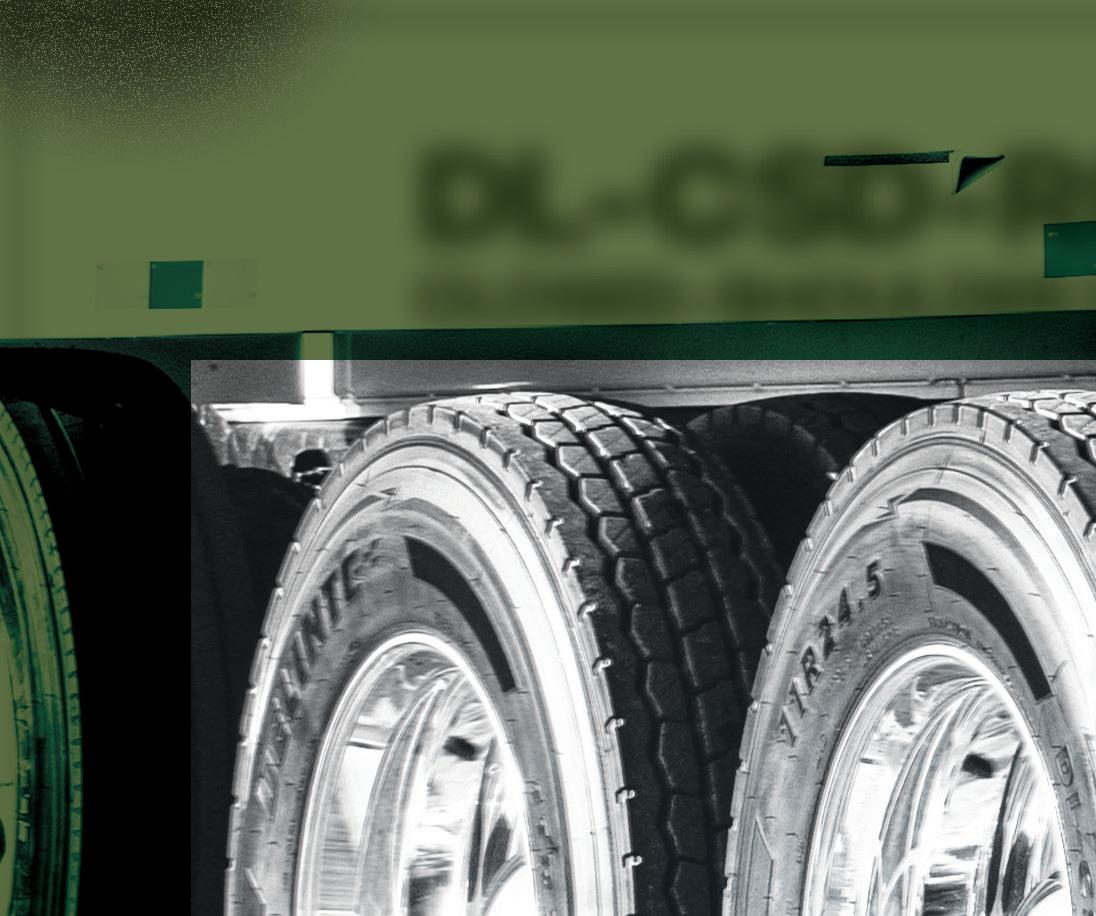










“We’re not quite a year-anda-half post-acquisition of Jerry’s Tire, which got us into the major markets in Michigan: Detroit and Grand Rapids.”
In December 2023, Alma Tire Companies acquired Jerry’s Tire, a four-outlet commercial tire dealership based in Lake Odessa, Mich., that also had a presence in “ e Motor City.”
“ e clientele over there had heard of Alma Tire, but we had to build trust,” says Grace.
“We had to go out and show customers that we’re the real deal and that even a company from a small town was still big enough to take care of them and in some ways, we might be able to do it better.
“It may be a cliche, but one thing we talk about, even internally, is that Alma Tire is ‘big enough to handle your eet, but is still small enough to care.’
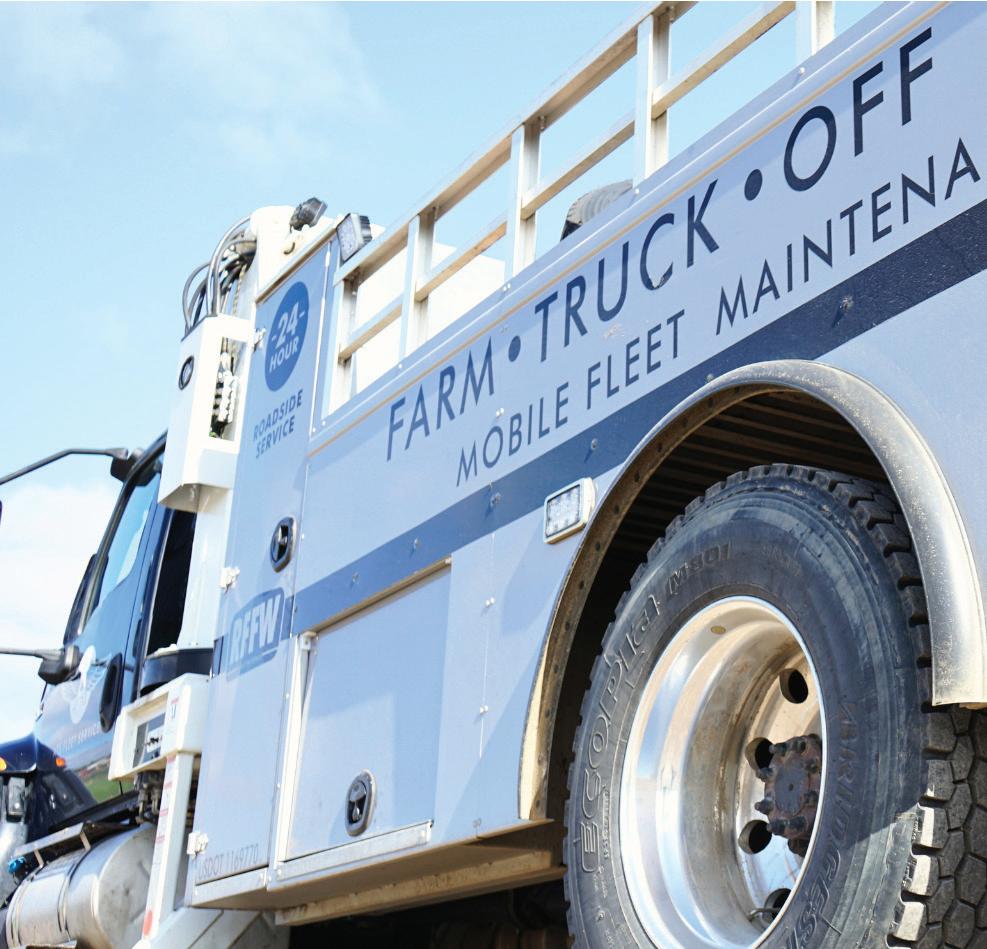

“As more eets try our products and services and see they can get good service — not just in their home location, but anywhere in the state of Michigan — more and more people are trusting us and we’re getting more and more opportunities all the time.”
Grace credits Alma Tire Companies’ success in Detroit, its biggest market, to “having great people on our team,” as well as the dealership’s decentralized management approach.
“When we went there, we had people who understood that market. For me, not really knowing the market well, I trusted my teammates who did. When someone says, ‘ is is what we need to do,’ my job is to support them.
“It’s going to be di erent doing business in Gaylord, Mich., than in Flint or Detroit. e customers are di erent. But at the same time, the job is not terribly different and our values translate, no matter where we are.
“It doesn’t matter what we’re doing — this is the way we do it. If we keep those things front of mind, everything else is details — the kind of truck you need, the kind of building you need. You let your people do their jobs.
“I think the more autonomy we give, the better our business runs. We have guidelines for people to follow, of course.
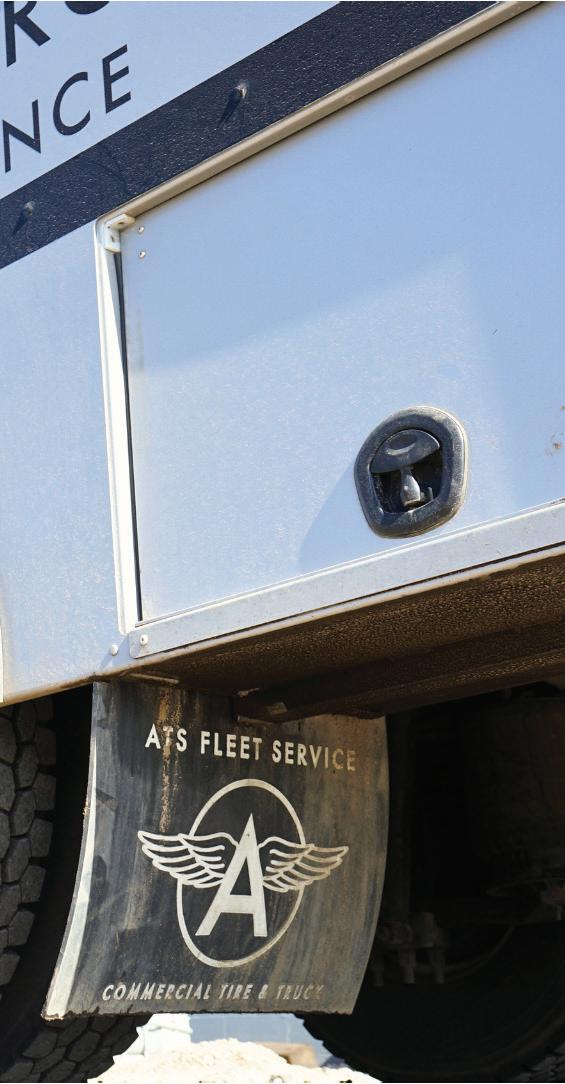
“We want to be able to provide great value,” says Grace. “That’s something that’s important, regardless of economic conditions.”
Grace’s
‘I love seeing people realize their dreams’
Tony Grace is Alma Tire Companies’ fourth-generation owner and CEO, but he took a circuitous route to get there.
“I came up like a lot of kids do in a family business,” he says. “I would go to work with my dad on Saturdays. When I got a little bit older, I was in the retread shop, stacking tires and doing things like that. I then left and went to college. I was going to look for my own career.
“I got a job, moved out of state and worked hard, but was having a hard time fi nding my groove. I knew what I was doing was not what I wanted to do. So I moved home ... but I was broke with no good job prospects. I went back to the retread shop for $8 an hour and I was like, ‘I like this. I like this work, I like this place, I like the people I work with and I like the people I work for.’
“I knew what I wanted,” he explains. “I wanted to work hard, make a good living and feel like what I was doing was important. I looked at my dad and my uncle and thought, ‘These guys have what I want and they work at a tire shop. I have an opportunity here. This is the door I need to walk through.’ I believed that I was doing the right thing and doing something I was passionate about and if I worked hard, things would work out. And they have.
“I’m very appreciative of the opportunities I’ve had being part of this business and a huge part of why I want to keep growing this company is to be able to provide more people with the kind of opportunities I was looking for,” he says. “I love tire shops. And I love seeing people realize their dreams. If they can do that inside of a tire (dealership) and I can help set that stage and open doors for them ... that’s a huge driver for me.”

















































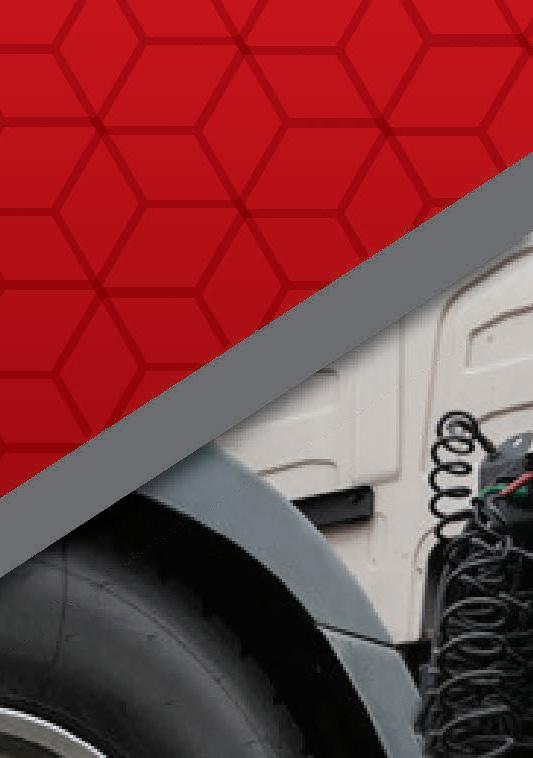














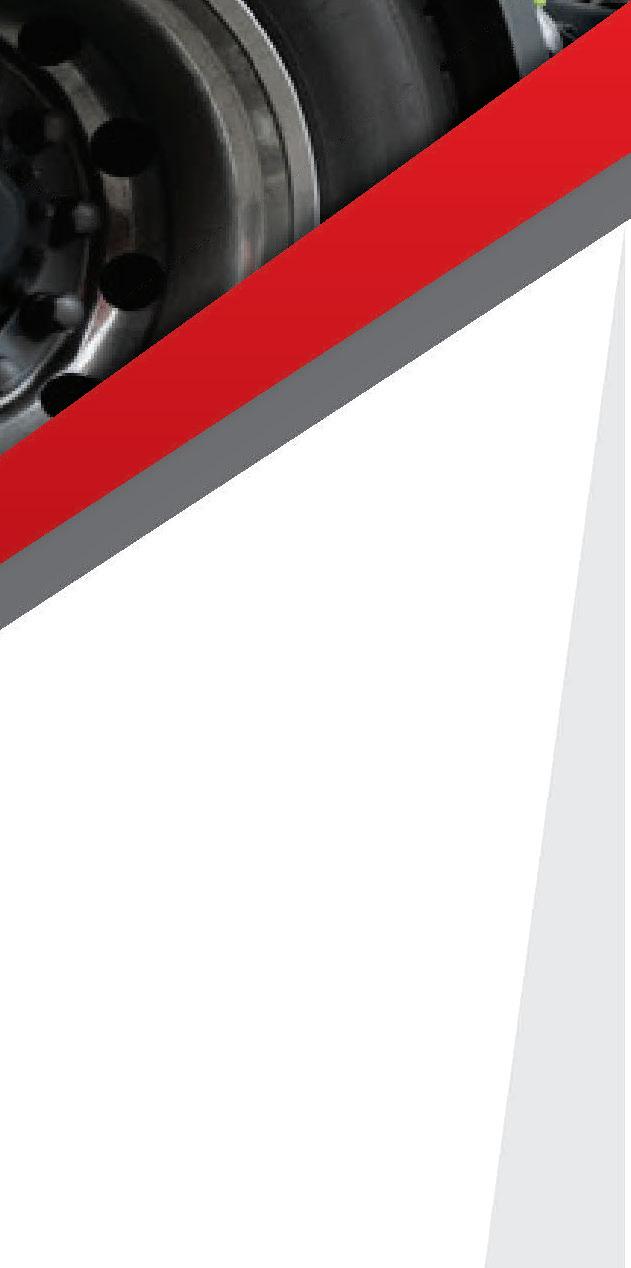

The Mr. Tire/Big 3 Tire Commercial Tire Dealer of the Year Award is designed to recognize the tire dealership that is quite simply “The Best” among independent commercial tire shops. K&M Tire has partnered again with Modern Tire Dealer to bring you the 9th annual Commercial Tire Dealer of the Year Award. The winner will be announced this January at the 2026 K&M Tire Dealer Conference.
Winner Receives:
$2,000 in cash.
$1,000 towards the charity of their choice.
$1,000 towards a physical improvement project at their dealership.
Trophy along with the distinction of being the Mr. Tire/Big 3 Commercial Tire Dealer of the Year.
A feature story on the winning Commercial Dealer in a custom publication distributed at the K&M Tire Dealer Conference.



Nominations* will open July 1st, 2025 and will be accepted through September 30th, 2025. Please register by visiting the online registration site www.mrtirebig3tirectd.com and nominate your dealership today!
*This contest is for all eligible Mr. Tire and Big 3 Tire dealers only. Winner will be announced during the 2026 K&M Tire Dealer Conference!


We have rules. But our managers are making their own decisions day-to-day. It helps us move faster. It helps us take care of the customer better. And it helps our people develop.
“It helps them feel like what they’re doing is important and they have more ownership in our mission,” he explains.
“I’ve told our managers, ‘If I didn’t trust you to make decisions, I wouldn’t have you doing this job.’
“And if they mess up — and people do — we talk about it and gure out what we could have done di erently and we move on.”
e success of Alma Tire Companies’ retreading business is driven by the cra smanship and dedication of its employees, says Grace.
“We put a heavy emphasis on our people and the development of their skills and the culture of excellence inside that plant.
“We have extremely low (employee) turnover. Our people are very proud of what they do.
“For Alma, retreading is not an a erthought. It’s not a necessary evil. It’s a pillar of our company.
“We treat everything and everyone in that plant with a huge amount of weight and a huge amount of respect.
“ e people who work in our plant really care about doing their job well. ey really think — and rightly so — that their job is important and that (the retreaded) tire, when it leaves, is a representation of them and what they do and all the little decisions they make during the day.
“We have a huge ag in our plant that says ‘Sweat the Details.’ It’s on everybody’s shirts. It really is a way of life inside our plant.”
Whether customers are buying retreads or new truck tires, Alma Tire Companies wants to maintain “a good balance” between national account and local eet business, according to Grace.
“Having started out in smaller communities, our business has always been heavily local book and that’s great. And we’re getting more and more into national account work.
“ ere are advantages to both and for that reason, we’re going a er both (customer groups) similarly.
“We want to pursue both with the same kind of enthusiasm.
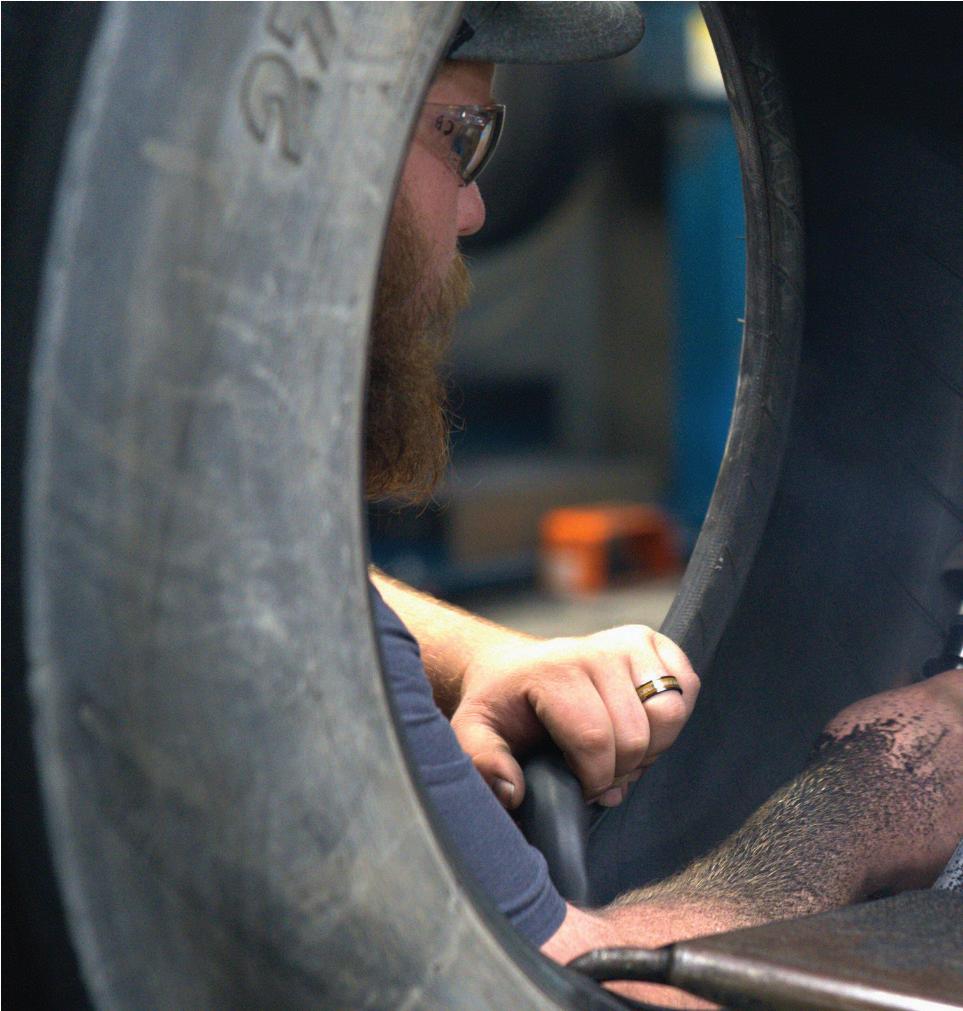
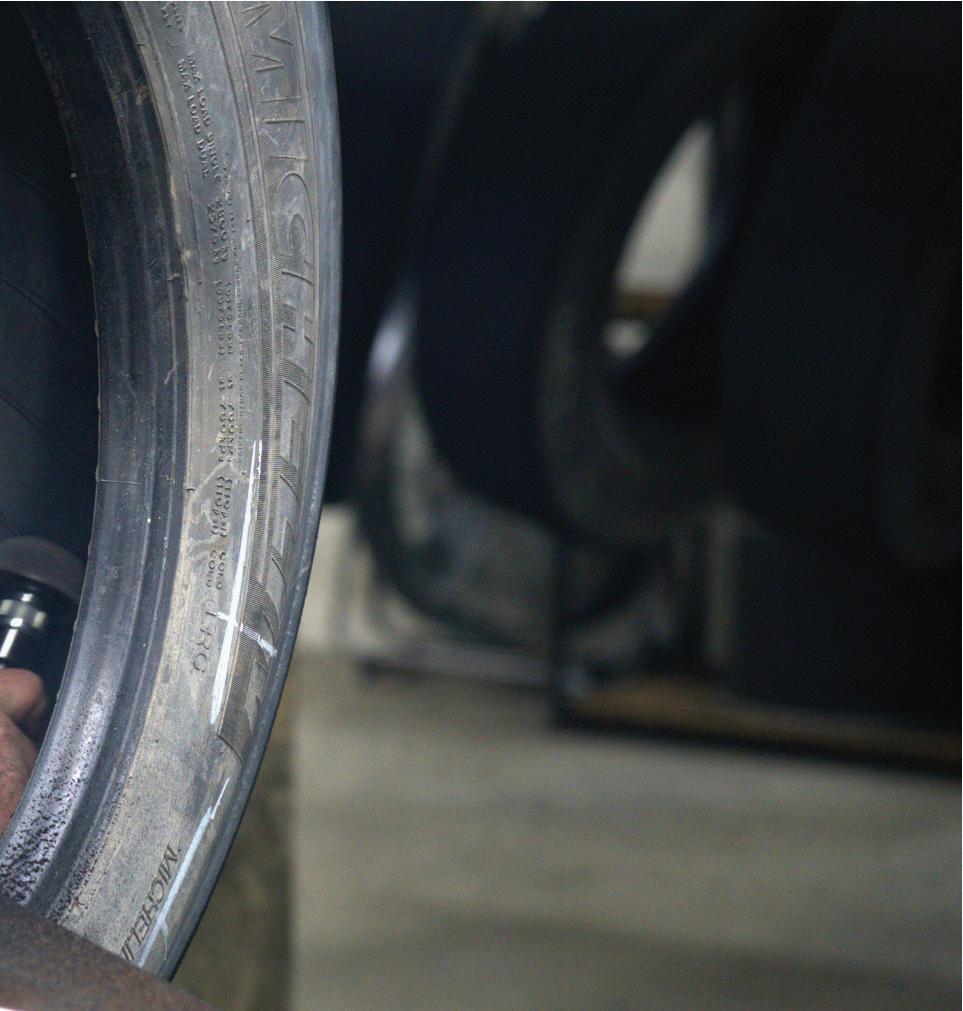
“For Alma, retreading is not an afterthought,” says Grace. “It’s not a necessary evil. It’s a pillar of our company.”
“I think in a lot of ways, the opportunity (for continued growth) lies in the people here,” says Tony Grace, CEO of Alma, Mich.-based Alma Tire Companies. “We have an amazing team and I know they’re excited to continue to grow the business.
“One of the things I’m really proud of is that we can point to a lot of examples in this company where someone came in, started as a tire tech and they’re a manager or salesperson now. There are folks here who have been tire techs for over 20 years and that’s awesome. They found something they like, they found a company they like and they don’t want anything to change. But the opportunity — and we make this as clear as possible — to do more exists within Alma Tire. All a person has to do is look around.”
Giving employees opportunities and options “is a huge benefi t for us because besides just employee retention, culturally speaking, one of the best things you can possibly do is show someone you’re interested in their betterment and you’re going to make investments in them. And when you have managers who’ve been truck tire techs, they understand the business intimately. That in itself is extremely important. It makes them great leaders and that much better of a service provider. There’s a lot of capital that exists in those kinds of people and we want to take care of them.”
“Everything comes back to relationships. People buy from people.”
Commenting on current demand for commercial truck tires, “I think everyone’s feeling the cooling e ect right now and that’s something we all have to contend with,” says Grace.
“We’re direct with a lot of di erent manufacturers and we’ve tried to align ourselves with companies that are building products that line up with what we’re trying to do.
“We want to be able to provide great value. at’s something that’s important, regardless of economic conditions.
“It gets you through the tough times and makes you a rock star in the good times.”
The competitive landscape around Alma Tire Companies is shifting due to consolidation. But more mergers and acquisitions bring more opportunities, says Grace.
“We just got news that a very, very strong competitor was acquired by a bigger dealer from out of state. at’s the nature of business. As options get fewer, it creates opportunities for a growing company like ours to come in and give a eet another option.” ■
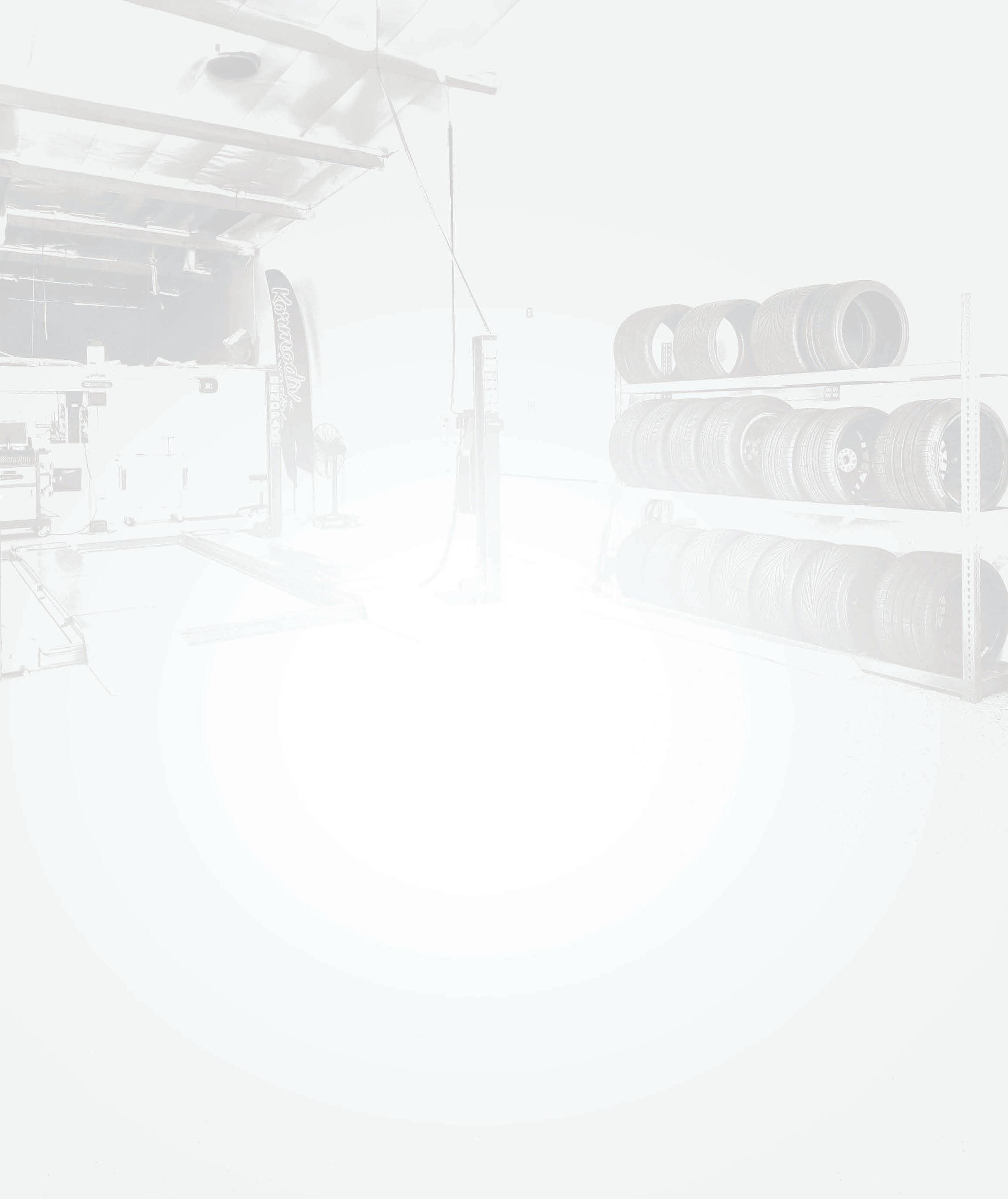

















Madison Hartline By
Kevin Davis started Cowser Tire and Service in 1989 when he was 19 years old with a single service truck, working out of his mom’s garage.
Today, Cowser Tire and Service operates a sprawling, state-of-the-art location in Fort Worth, Texas, with 26 service bays, 102 employees and 16 service trucks.
“There’s virtually no part of the tire industry we don’t touch,” says Davis.
The dealership offers retail, commercial, industrial, OTR and ag tires and related services, while also having its own retread plant. It also provides a full line of mechanical services for cars and commercial trucks, including 18-wheelers.
Davis says that he grew up in the industry and his father, Mike Davis — who managed and owned Russey Tire in the 1980s and sold it when Davis was 16 — taught him everything he knows. But launching his own business wasn’t easy.
“It was difficult starting (a business) at (the age of) 19 because it’s almost impossible to get credit and all that stuff. So my dad and my cousin let me use the Cowser name and run under their insurance.”
Davis did this until he turned 25 and was able to get his own insurance and credit established.
“But by that point, I didn’t want to change (the dealership’s) name because everybody was already familiar with it.”
After five to six months of running Cowser Tire out of his mom’s garage, he was able to rent a small building and hire another employee. The business “kind of snowballed from there.”
Davis says that Cowser Tire and Service has employed a slow, steady growth process over the years.
“It seems like every eight to 10 years, we take a big step. The last big step we took was in 2016, when we opened the retread plant.

“And that was kind of the last piece of the puzzle we implemented.”
The plant, which uses Goodyear Tire & Rubber Co.’s process, is located within the dealerships’ Fort Worth complex.
“Our retread business grew very quickly and we were having a difficult time finding a vendor that could keep up with us.” Bringing retreading in-house gave the business more flexibility.
Davis says he is a very hands-on owner. “I like to be here and when I’m here, I wear a work uniform and I get out there, too. I’m not afraid to go out and change a tire. I’ve always had the motto that I’ll never ask anybody to do something that I couldn’t do myself.”
His employees “have come to realize this and not to toot my own horn, but it seems like the guys have come to really respect me for that and now they won’t let me help them out of respect!”
Davis says Cowser Tire and Service’s employees pride themselves on providing good service with integrity, which is what he believes makes the dealership stand out.
When new hires come on-board, they train under key people. “I try to get one person who is an expert in one thing — for example, (tire and wheel) mounting procedures,” explains Davis.
“I try and get one person very welltrained in tire mounting procedures, so that way they can teach it to the next guy.”
“There’s virtually no part of the tire industry we don’t touch,” says Kevin Davis, owner of Cowser
In an industry with a high turnover rate, Davis says he retains and attracts top talent by offering good benefits, including a retirement program.
“We offer health insurance, dental and vision — just about every benefit you can get.”
He notes that Cowser Tire and Service also has a very good paid time-off program. And the dealership offers competitive pay.
“We are known in our area to be among the top companies to work for, as far as pay goes,” says Davis.
Cowser Tire and Service also highlights and recognizes good employees.
Davis says Cowser Tire and Service is keeping an eye on imported medium truck tire brands, which, he notes, “are getting better and better.”
He’s interested in how these brands will impact the market in the coming years.
In addition, he’s considering adding more services, when the time is right, in areas like fleet checks and equipment maintenance.
“It doesn’t really matter what kind of fleet you have.”
Davis says he attributes his success to God and feels like Cowser Tire and Service is a “very blessed company.” ■
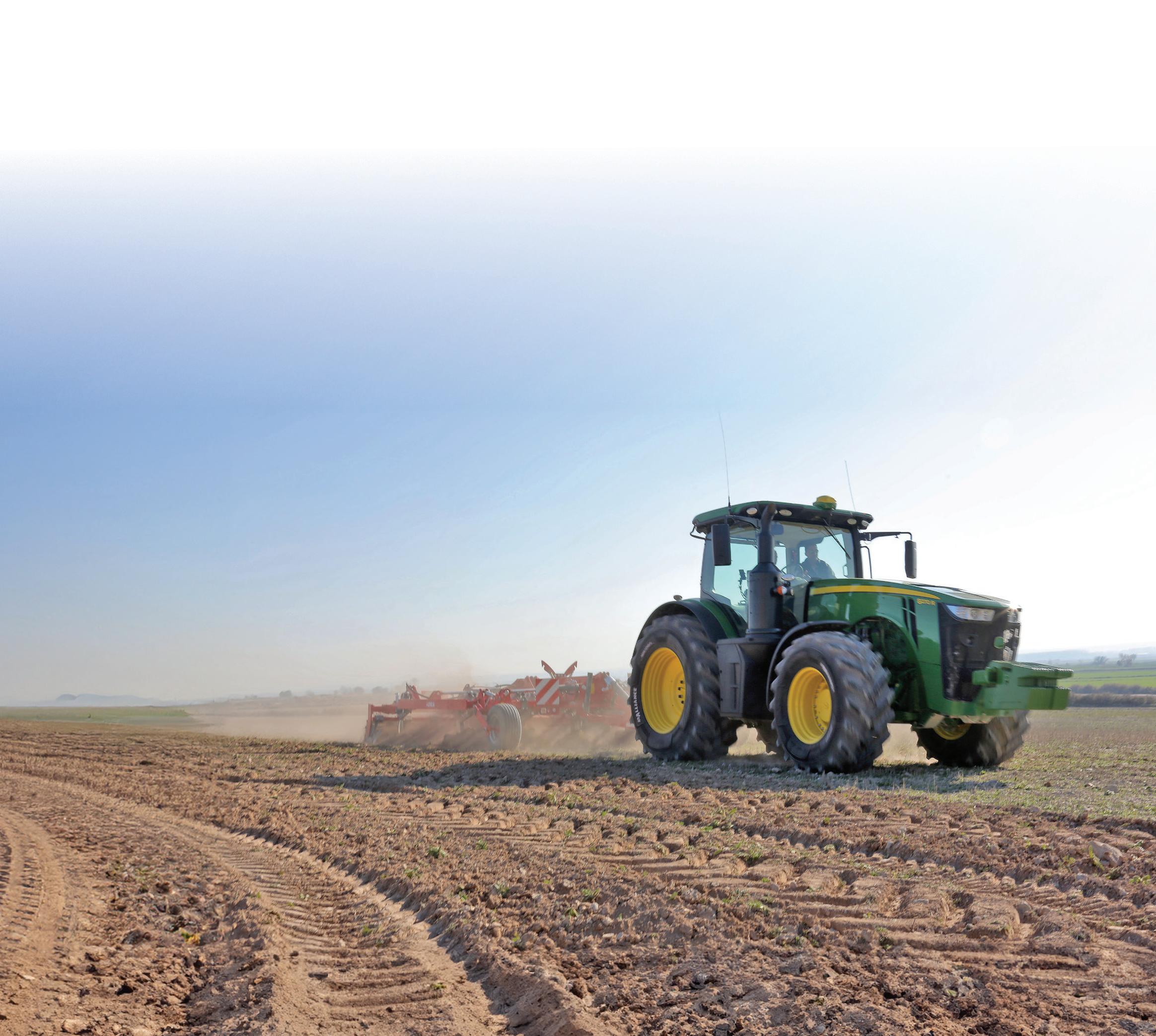



a
you
there’s
Assurance






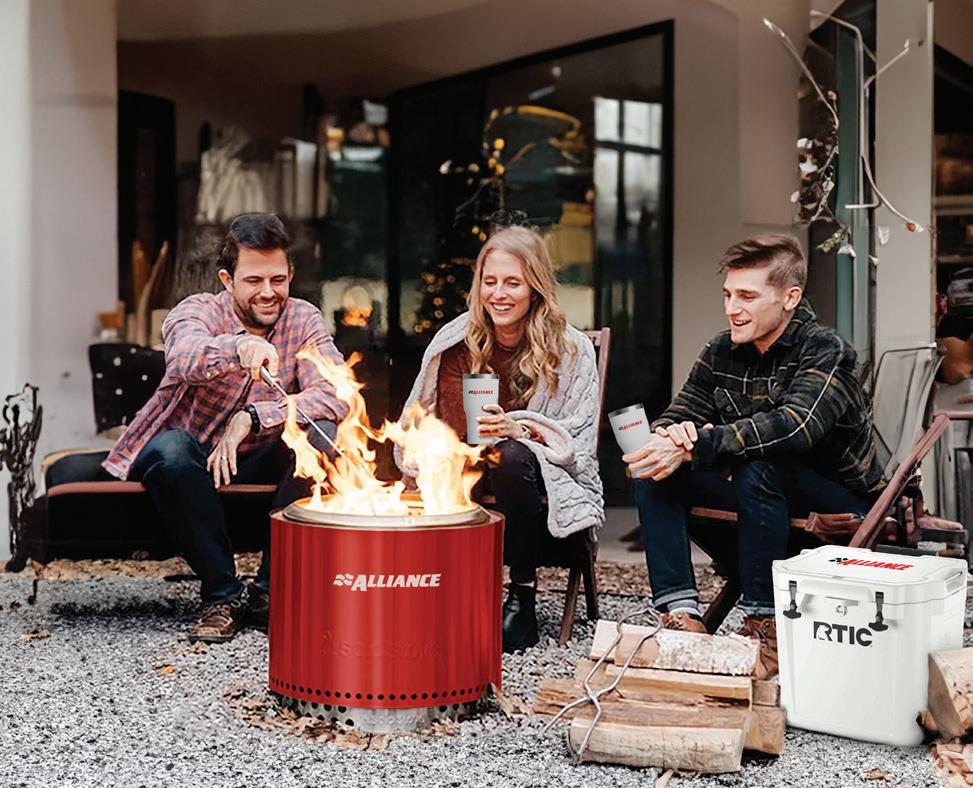





By
Madison Hartline
Dayton, Ohio-based Gem City Tire recently celebrated its 25th anniversary with Goodyear blimp rides and a VIP section for its employees to watch the 2025 Dayton Air Show.
Jeff Lecklider, owner and president of Gem City Tire, a longtime Goodyear dealership, invited employees who have been with the company for 25 years to bring their families and take a ride on the tiremaker’s blimp.
Lecklider also invited about 140 of his employees and their spouses to the 2025 Dayton Air Show, where Gem City Tire rented an area with a tent, food and a place for people to sit and watch the event.
“Gem City is celebrating its 25th anniversary, the Dayton Air Show is celebrating its 50th anniversary and the Goodyear blimp is celebrating its 100th anniversary, which is pretty cool,” Lecklider told MTD during the celebration.
Lecklider said that when he established Gem City Tire in 2000, the dealership started with one commercial service center and one retread plant.
“I didn’t know it was going to be any different from that. We had some good opportunities and had some great customers that pushed us to grow and Goodyear really pushed us to grow and gave us opportunities. Then we had a second location and then a third location.”
Lecklider said this organic growth has been a big accomplishment for the dealership.
“I had no idea we’d be in different states at some point, but now we have three locations in Ohio, one in Kentucky, two in Indianapolis and two in Illinois. Now we have eight service centers and one retread plant and about 200 employees and we run about 85 service trucks. We have grown quite a bit since we first started and it really wasn’t planned!”


Lecklider told MTD that Gem City Tire’s growth has followed the growth of its customers. But hiring technicians remains a challenge for the dealership, he added, especially in the commercial truck tire and retread sectors. “Commercial and retreading isn’t as flashy as other parts” of the tire industry, he said.
“For the future, we plan on trying to grow organically and where it makes sense,” said Lecklider. “We just want to exceed our customers’ expectations and the fleets are getting bigger, so they’re requiring us to do more work. It’s all about trying to make our people better, so that we can supply better products, provide top-notch service and get those five-star Google reviews.”
“Gem City is celebrating its 25th anniversary, the Dayton Air Show is celebrating its 50th anniversary and the Goodyear blimp is celebrating its 100th anniversary, which is pretty cool,” Lecklider told MTD.
Photo: MTD
Lecklider noted that Gem City Tire isn’t the only commerial truck tire dealership in its markets, so it has to compete by providing the best possible service.
He mentioned that the current commercial truck tire and retread market is “pretty flat at the moment.
“We’re slightly up because we have the world’s best commercial sales team. And we’re a winning business because we’re selling fleet solutions to trucking customers.
“We aren’t just selling tires. So that’s how we’re winning today, because we’re not the only guys in town who have tires.”
Lecklider said Gem City Tire’s real job is to reduce customers’ cost-per-mile. “That’s how we’re earning new business today and it’s really working.” ■



TM


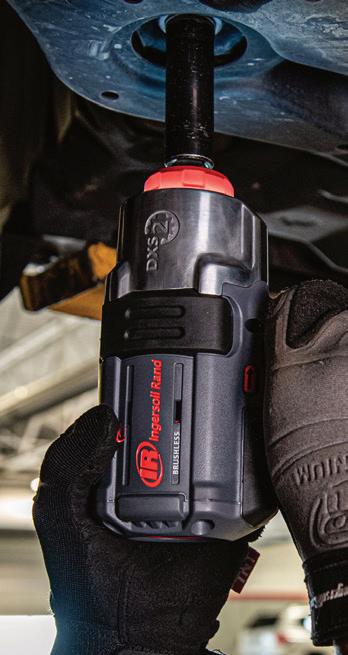
Prevent rotor damage with the W7253-TL Forward Torque Limited DXS® Cordless Impact Wrench featuring a fixed 76 ft-lbs forward torque mode to stop overtightening in its tracks.
- 1,600 ft-lbs of nut busting breakaway torque
- Compact, cordless design for easy handling in tight spaces
- Compatible with all DXS® Drive Xchange System™ extended anvils and direct drive sockets
- Backed by a 5-year warranty
Take the guesswork out, and get the job done right!


By
TMadison Hartline
he world of forklift tires may be changing more than you realize.
Trends like the electrification of lift trucks, the desire for lower rolling resistance, the need for non-marking tires and more are driving this evolution. Executives from some forklift tire manufacturing companies recently discussed these new trends with MTD.
“When selecting the appropriate tire for a forklift, it is important to think about the working environment and how you can maximize factors such as, but not limited to, longevity and performance, you can never look past safety,” says Brick Oltman, commercial category manager at American Omni Trading Co. “There are many factors to consider before making any tire selection: type of lift, operating environment, smooth or rough surface and maximum load capacity.
“Solid rubber are best utilized for indoor applications on smooth surfaces. Cushion tires promote excellent stability,

says “the

“As industries’ needs continue to expand and companies are asked to face multiple challenges, the demand for strong, reliable and durable tires to support forklift operations will grow significantly,” says Hrishikesh Damodar, lead technical and coordinator at BKT USA Inc.
BKT USA Inc.
they grip well to (a) smooth surface offering maneuverability in tight spaces, (and) they are ideal for electric or LP forklifts commonly used in mass distribution, manufacturing and other large indoor facilities.
“Solid pneumatic tires offer durability and puncture resistance, making them suitable for outdoor applications on rough and uneven terrain,” says Oltman. “Air-pneumatic tires provide increased shock absorption and traction, enhancing the forklift’s performance in challenging outdoor environments.
“Rubber compounds for non-marking (sensitive to dust and dirt) and electrically conducting properties (black and non-marking) are engineered for applications for use in hazardous or explosive environments which prevent static charging.”
Ryan Lopes, vice president of marketing and strategic business development at Ascenso Tires North America Inc., says “the two newest trends in forklift
tires at the moment can be found in the areas of tread design and compounding. Forklift applications continue to get more demanding, (forcing) the forklift to work longer hours while maximizing their load-carrying capacity at maximum reach. What this means in terms of the tire design is that you need to have a higher lug-to-void ratio to maximize the usable wearable rubber to allow the tires to last longer, while also providing stability from the design on the tire in applications. As designers look to increase lug ratio, they have in parallel looked to build better roadability into the tread pattern and hence reduce the vibrations that arise from typical industrial lug designs. Given that forklift equipment does not have shock absorbers, any reduction in the vibrations from the surface being passed on to the driver of the equipment results in significantly improving operator comfort.
“The second area where tire design is focused is related to the changes in tread pattern design,” says Lopes. “As the lug-to void ratio of the tires increases, so does the need to manage heat dissipation in the tires. This is especially true for solid forklift tires, which may account for 60% to 70% of forklift applications in the market. The compounds used to build the tires for high-intensity applications need to have the necessary strength to resist abrasion and chipping on the surface of the tire, (and) also have the ability to incrementally dissipate heat within the tire to allow cooler running of the tire, which would lead the tire to last longer. The use of high technology compound formulation, mixing and use of filler material, which has superior heat-resisting properties, helps to achieve this.
“Forklift tires are built considering different intensity levels of the application. It is very important that a customer understands the intensity of the forklift operations and buys the tire built specifically for that intensity of operations. Simply buying a cheaper tire to reduce procurement costs may end up costing you a lot more in downtime if the cheaper tire is not constructed to match the intensity demands of the application.”
“The forklift tire market is experiencing continuous growth due to the increasing demand for material handling equipment across the manufacturing, warehousing and logistics sectors,” says Hrishikesh Damodar, lead technology and coordinator at BKT USA Inc . “As industries’ needs continue to expand and companies are asked to face multiple challenges, the demand for strong, reliable and durable tires to support forklift operations will grow significantly. This results in the rise in demand for tires with extended life, thanks to wear-resistant compounds, improved traction and maintenance-free features, which are increasingly preferred by fleet operators. Another element of interest is related to radial technology over bias-ply, which represents another important trend contributing to market growth.
“The most popular categories of tires used for forklifts are pneumatic forklift tires, either radial or bias construction, depending on the application ... and solid forklift tires, primarily designed for tough applications to minimize downtime and enhance productivity. The trend is mov-
ing towards solid tires. In today’s world, electric forklifts are seeing steady growth because of the increased demand for ecofriendly material handling solutions. In fact, as more industries shift toward electric forklifts for sustainability and operational efficiency, the demand for specialized tires that support electric vehicles will continue to increase, thereby improving the service life of the forklifts. In addition to this, new technologies are being employed to manufacture low rolling resistance tires, which will enhance traction by directly improving the battery life of forklifts.
“In addition to the electric forklift, we also observe steady growth in forklifts powered by diesel and gasoline, which are primarily used in outdoor and heavy-duty applications,” says Damodar.
“Last but not least, the integration of smart tire technologies is gaining traction. Smart tires incorporate sensors, which help in monitoring parameters related to the tire’s performance, wear and tear and pressure over time and in real-time. This trend enables effective fleet management


and reduces maintenance costs through advanced repair techniques and equipment, mainly used for pneumatic tires. However, the high upfront costs associated with smart tires, such as advanced

















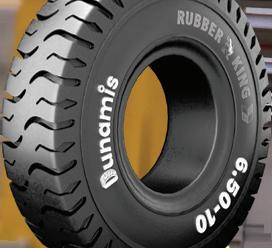
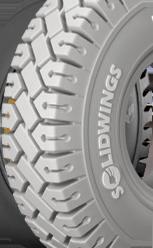



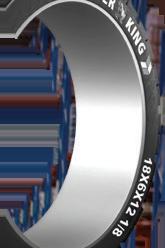
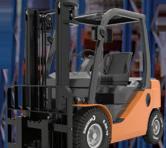






















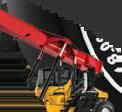




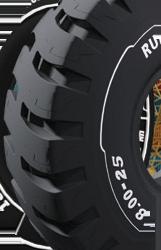

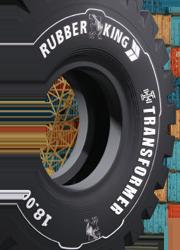


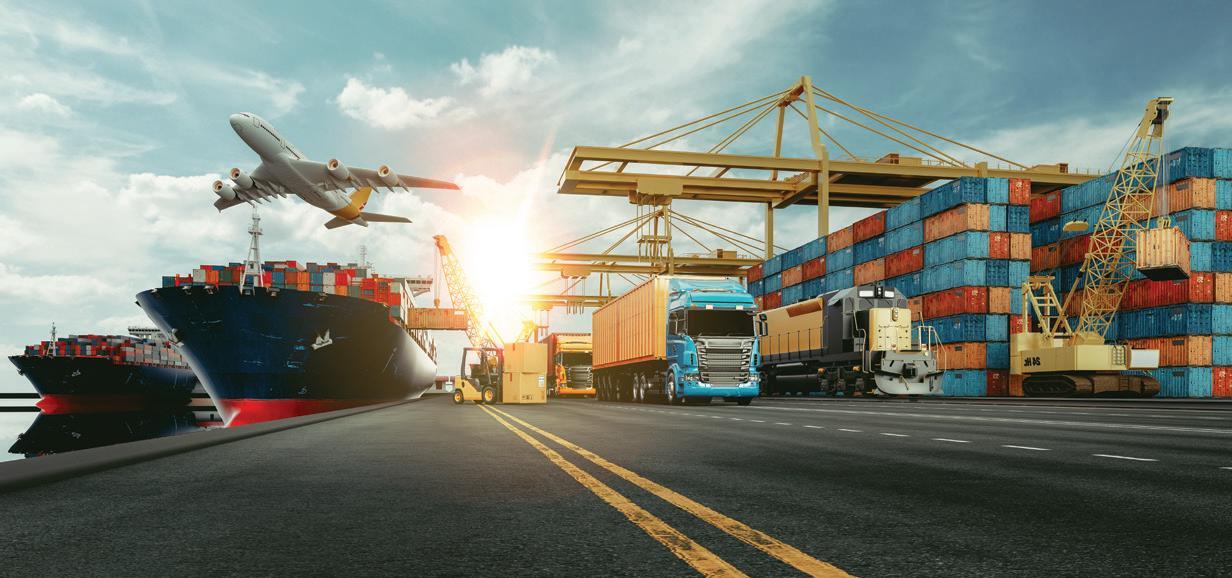


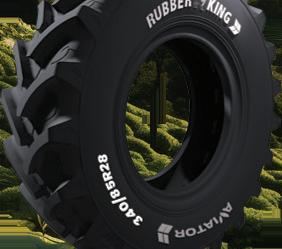






Michael Connor, vice president of sales in Americas, Galileo Wheel, says he is “seeing shifts in forklift and general industrial tire requirements that extend well beyond the incremental improvements we’ve grown accustomed to.”
technologies and eco-friendly options, can hinder easy adoption.”
“One of the hottest trends in forkli tires right now is the shi toward buying solid tire and wheel assemblies online,” says Troy Rudnick, president, Forkli Tire Co. Inc. “Dealers and end-users are skipping the press-on process altogether by choosing pre-mounted sets that ship ready to install. It saves time, reduces downtime and simpli es everything from ordering to installation.”
Michael Connor, vice president of sales in Americas, Galileo Wheel, says he is “seeing shi s in forkli and general industrial tire requirements that extend well beyond the incremental improvements we’ve grown accustomed to. e forkli market pressures are real: heavier loads in warehouse operations, stricter sustainability mandates across material handling eets and equipment downtime costs that operators can no longer absorb. ese factors are driving demand for solutions that address fundamental problems rather than optimizing around existing limitations.
“ e rst trend is structural design innovation emerging. e most significant development is the push toward abandoning conventional tire design principles. Most manufacturers remain focused on incremental changes — tread modi cations, compound adjustments, bead design tweaks. However, structural innovation is beginning to emerge.
“The second trend is sustainability
has become mandatory,” according to Connor. “Sustainability has moved from marketing talk to actual product development requirements, driving changes across multiple areas of the forklift market. e industry is pursuing several approaches, each with signi cant implications for operations and costs. Bio-based compounds using corn oil or soy oil are gaining traction a er decades of limited adoption. The greater sustainability impact comes from preventing premature tire failures in forkli operations. ere’s growing recognition that tire selection directly impacts total forkli equipment costs and sustainability. Poor tire choices damage hydraulic systems, drive motors and structural components, creating waste beyond just tire replacement.
“Trend three is load capacity versus speed engineering. Increasing load requirements in modern warehouse operations are driving sophisticated engineering solutions, but the challenge isn’t what most people think. We can build tires for massive loads. at’s achievable through design and materials. e real constraint is maintaining safe operation at highway speeds with heavy-duty constructions, particularly relevant for forkli s that need to operate both in warehouses and outdoor loading areas. is creates demand for application-speci c designs rather than universal solutions. Extreme applications may require hybrid approaches that maintain at-free operation while incorporating minimal air pressure for additional load support. e key involves matching speci c technologies to particular operating requirements rather than forcing universal solutions. is application-speci c approach requires the exibility that startup companies possess but established manufacturers o en lack due to manufacturing constraints and product line complexity.
“Airless solutions that actually work are the fourth trend. The airless tire segment is experiencing innovation a er years of limited options for forkli applications. Finally, the h trend is autonomous equipment readiness. Autonomous adoption is in uencing tire requirements in ways that traditional manufacturers haven’t fully recognized. Current autonomous forkli units operate primarily at low speeds in controlled warehouse environments, but reliability becomes critical when there’s no oper-


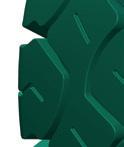
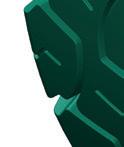



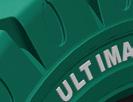
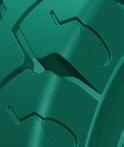
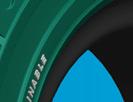
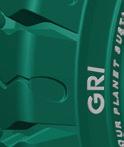

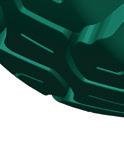









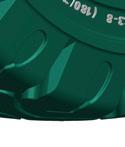
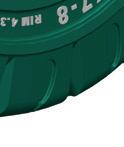
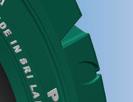



Ydo Doornbos, director of North America at Global Rubber Industries Pvt. Ltd., mentions several new trends in the forklift tire segment: sustainability, the rise of electric forklifts, energy effi ciency and the e-commerce boom.
ator to respond to failures. Tire failures in unmanned forkli equipment create operational disruptions that extend beyond simple replacement costs (and are) particularly costly in automated warehouse operations. Technologies that eliminate failure modes rather than just (reduce) them are becoming essential as tire reliability directly impacts autonomous forkli system e ectiveness.”
Ydo Doornbos, director of North America, Global Rubber Industries Pvt. Ltd., says there’s been a “a clear market shi toward environment-friendly tires. is is driven by both increasing environmental regulations and customer ESG initiatives. Global demand for electric forkli s is surging due to stricter emission controls, lower operational costs and indoor application needs. is shi requires low rolling resistance tires that preserve battery life, without compromising on durability or ride quality.
“With the global push for energy savings and eco-conscious operations, customers are seeking tires with lower rolling resistance and higher wear performance to reduce energy consumption, especially for electric forkli s.
“ e explosive growth of e-commerce has led to more warehouse facilities operating around the clock. is is fueling demand for durable, low-maintenance industrial tires that can withstand






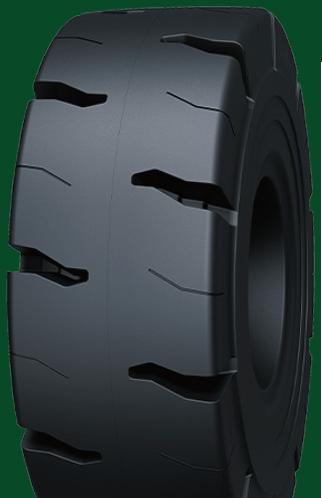











Premium 3-stage construction design









One stop supply, from 8 inch to 35 inch, with more than 500 SKU
The choices of more than 10 premium OEM brands
Continue service more than 160 countries for 30 years plus
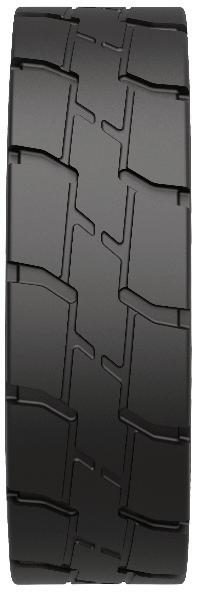




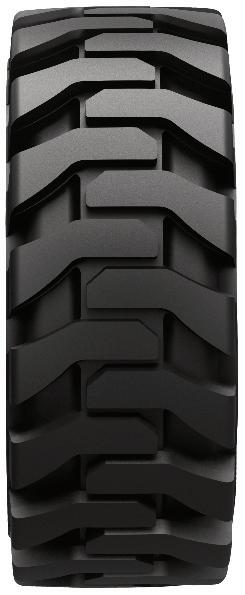

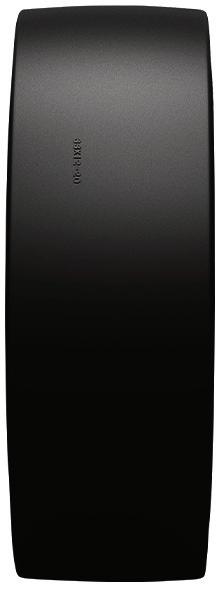
high-frequency usage on forklifts, pallet stackers and reach trucks. Alongside this, the rise in smart warehouse systems is pointing toward future integration with smart tire technologies.
“There are several key trends shaping the forklift tire industry today, as manufacturers look to differentiate themselves and deliver real value to customers,” notes Darren Stratton, brand director for material handling, Michelin North America Inc. “One major area of focus is sustainability — both in terms of product performance and lifecycle — through the use of renewable materials and more durable, efficient designs.”
“The most exciting innovations we’re seeing in forklift tires are for Class XI and XII vehicles, such as rough terrain forklifts and telehandlers,” says Michael Dembe, vice president of OEM sales, OTR Engineered Solutions. “These types of material handlers are often used in harsh conditions and high-intensity applications that require purpose-built tire solutions to maximize safety, reliability and productivity when dealing with heavy loads. Industries in which these types of forklifts are used are extremely demanding and tire failure is not an option. For instance, telehandlers have become more popular for material handling applications, but if they’re being used to lift heavy pallets to the roof of a building, general construction tires are not going to hold up to that type of work.
“Additionally, larger forklifts are popular in the rental industry, which has a shrinking tolerance for downtime, especially from flat tires. This has led to increased interest in flat-free tire solutions, but there are multiple design challenges associated with airless tires. How do we make flat-free tires that are lightweight, durable, heat resistant and economical?
“Another trend in forklift tires for outdoor vertical mast machines and especially telehandlers is the growing preference for low-profile, non-directional tires,” notes Dembe. “Available as air-filled, urethane foam-filled or solid, low-profile tires improve stability and provide optimized traction on all surface conditions. Reduced complexity in not having to deal with different right and left side tires as with directional tire and wheel assemblies is an added bonus.
“In the ever-evolving world of industrial equipment, the humble forklift
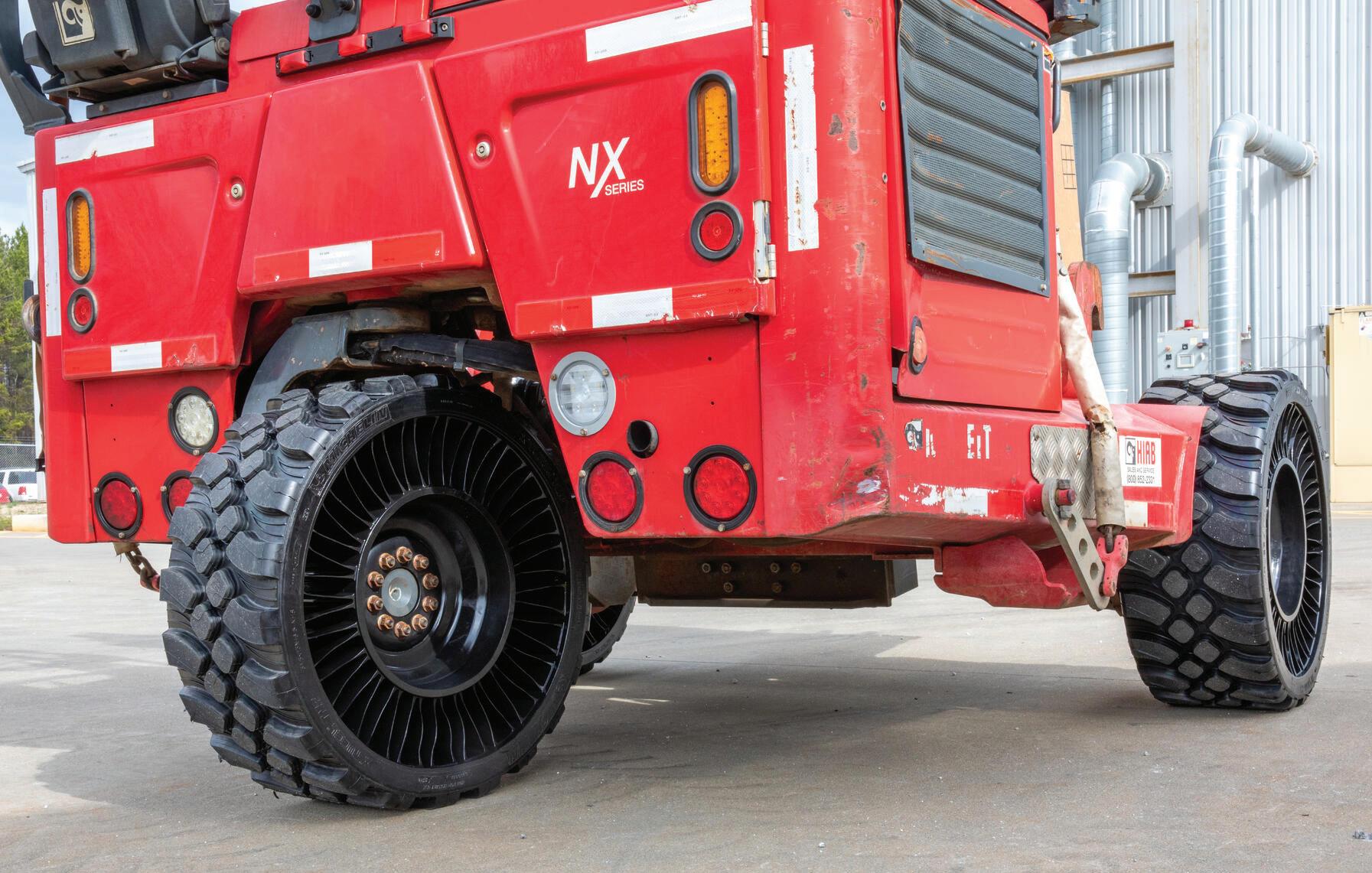
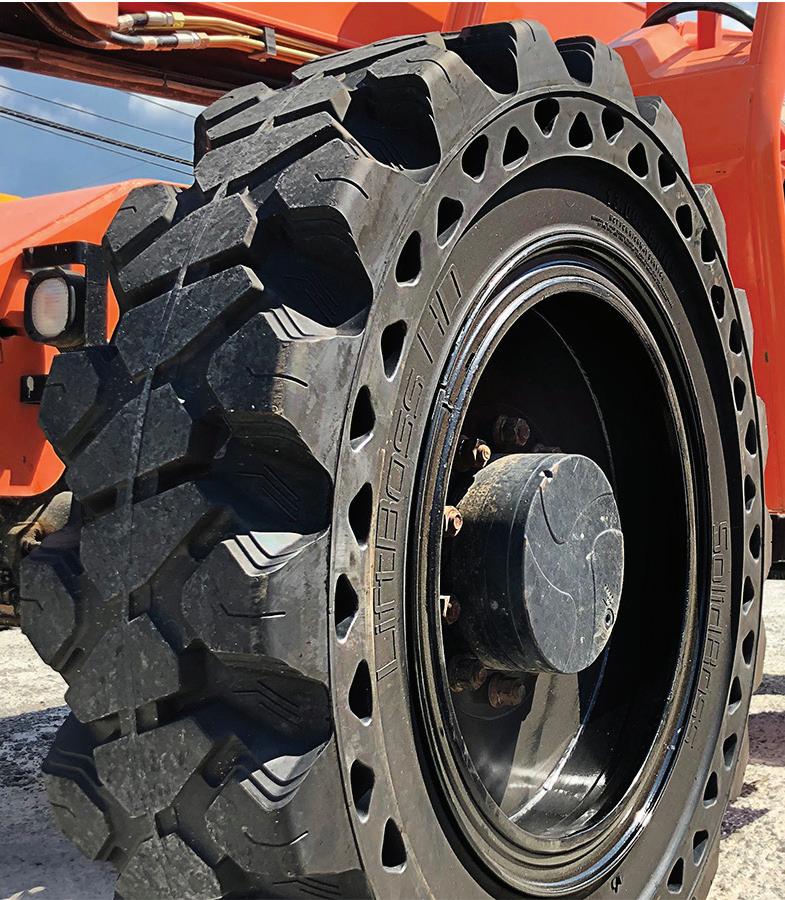
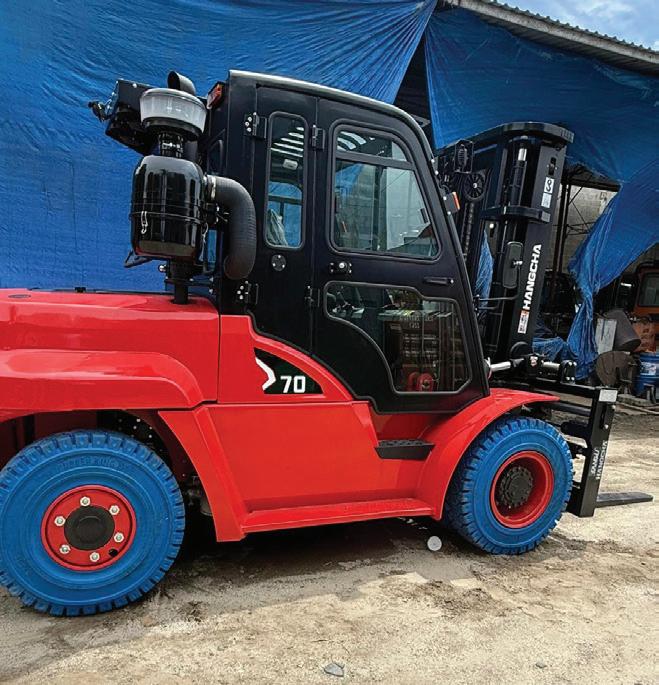
“There is a growing demand for antistatic non-marking solid tires in the market, with customers increasingly seeking options that offer colors to match their machinery,” says Jagdish C. Bagora, executive director, Rubber King Tyre Private Ltd.
‘Additionally, larger forklifts are popular in the rental industry, which has a shrinking tolerance for downtime, especially from flat tires.’
Michael Dembe, vice president of OEM sales, OTR Engineered Solutions





JON VANCE Global Director of Marketing
When AOT partners wanted hard data that proved our tires could perform in a variety of conditions, we gave them a lot more than a spreadsheet. Our marketing team held an exclusive event at a race track to demonstrate their real-world performance. After days of grueling testing under different conditions, the tires left no doubts of their capabilities. They also made the job of selling the tires a lot easier for our partners.
WHAT’S YOUR CHALLENGE?







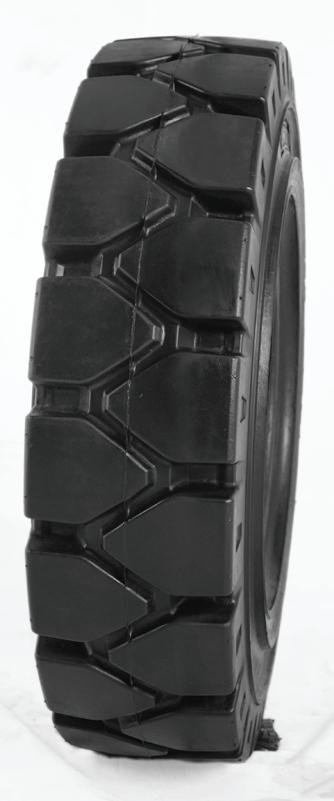
specialized tread patterns that enhance grip and stability. Additionally, tires with a higher load capacity are being developed, allowing forkli s to safely handle increased weight loads without compromising performance or safety. is trend meets the growing demands of modern warehouses that require both agility and strength in their equipment.
“Whether you choose pneumatic, solid or cushion tires, selecting the right type based on operational environment and load requirements will not only improve effi ciency, but also reduce maintenance costs in the long run,” says Sunil Sehgal, general managerexport, Speedway Rubber Co.
Photo: Speedway Rubber Co.
may not seem like the most glamorous subject,” says Jagdish Bagora, executive director, Rubber King Tyre Private Ltd. “However, its essential role in logistics and warehousing cannot be overstated. As businesses strive for e ciency and sustainability, the tire that supports these powerhouse machines is undergoing a signi cant transformation.
“One of the most signi cant trends in forkli tires is the utilization of advanced rubber compounds designed for enhanced durability and performance. ese new formulations not only extend tire life but also provide superior traction and resistance to wear and tear. Manufacturers are leveraging technology to blend synthetic rubber with natural rubber, resulting in tires that can withstand a variety of conditions, from icy warehouses to hot asphalt. is trend promises lower replacement costs and increased uptime for businesses.
“Sustainability is at the forefront of many industries and the forkli tire market is no exception,” says Bagora. “Manufacturers are increasingly experimenting with environmentally friendly materials and production processes. Tires made from recycled rubber and those that are fully recyclable at the end of their life cycle are becoming more common. ese eco-conscious options cater to companies looking to reduce their carbon footprint and promote a sustainable brand image.
“Forkli operators require tires that can handle heavy loads while providing excellent maneuverability. Current trends show a shi toward tires designed with
“As industries increasingly turn to automation, the integration of technology in forkli tires is rising,” says Bagora. “Smart tires equipped with sensors can monitor pressure, temperature and tread wear in real-time, providing valuable data to operators and eet managers. is innovation allows for proactive maintenance, minimizes downtime and ultimately contributes to better overall eet management.
“As we move further into 2025, the forkli tire industry is undoubtedly on an upward trajectory marked by innovation and sustainability. From advanced rubber compounds to smart technology integration, these trends are not only enhancing the performance and safety of forkli operations but also contributing positively to the environment.”
“Forkli tire performance is critical to safety, e ciency and cost-e ectiveness in material handling operations,” says Sunil Sehgal, general manager-export, Speedways Rubber Co. “ Solid tires are gaining more traction, especially for environments where reliability is cru-
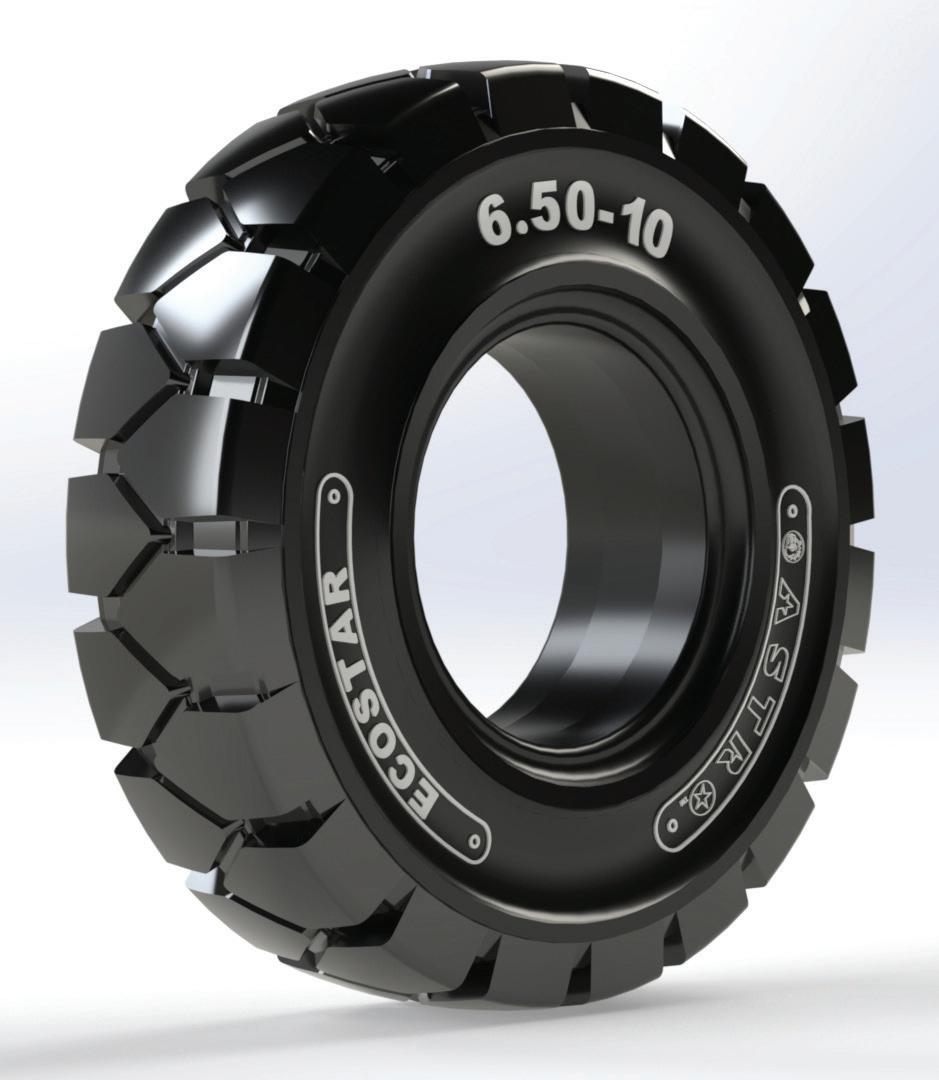


Cliff Davis, executive vice president, North America, Sun Tyres & Wheel System, TVS Eurogrip Tyres, says the trend toward electric forklifts “refl ects a broader movement in the industry towards eco-friendly solutions and sustainability” as advancements in battery technology yield long run times.
Photo: TVS Eurogrip Tyres
cial. They’re puncture-proof, require little maintenance and last longer than pneumatic tires. NPTs (Non-pneumatic tires) are becoming more popular for the same reasons. ese tires are designed to handle rougher terrain and prevent downtime due to tire failure.
“Smart tires equipped with sensors to monitor wear and performance in realtime are becoming more popular. ese sensors can track tire pressure, temperature and tread depth. Condition monitoring and IoT (Internet of ings)-enabled forkli tires to help managers keep tabs on tire health are becoming essential for eet managers to reduce downtime and optimize maintenance schedules.
“High-load capacity tires are designed to handle higher capacities and are becoming more specialty, using reinforced sidewalls and tough tread patterns
Joaquin Gonzalez, president at Tire Group International LLC, says tire manufacturers are responding to the changes in forklifts with advanced tire solutions that go well beyond the basics of providing durability and traction.
Photo: Tire Group International LLC
for better durability. All-terrain tires are becoming more popular as warehouses and distribution centers expand into outdoor spaces or varied environments with the tires designed for rougher, more uneven surfaces. e design of forkli tire trends is becoming more focused on improving traction, reducing wear and increasing lifespan, especially for indoor use where oors can be smooth and slick. Tread patterns are getting more specialized based on the type of warehouse or outdoor environment. Low rolling resistance forkli tires are being designed to improve energy e ciency, as well.”
Joaquin Gonzalez, president, Tire Group International LLC, says the forkli tire segment “is experiencing notable changes as technology, efficiency and sustainability become top priorities in material handling operations. As warehouses modernize and eet managers seek to reduce downtime and operating costs, tire manufacturers are responding with advanced solutions that go well beyond the basics of durability and traction. One of the most signi cant developments is the growing demand for non-marking tires. ese are especially important in industries where oor cleanliness matters, such as food and pharmaceuticals. Alongside this, manufacturers are engineering compounds with low rolling resistance to improve energy e ciency, particularly for electric forkli s.
“Solid and polyurethane tires are also becoming more prevalent. Known for their durability, they are ideal for rough
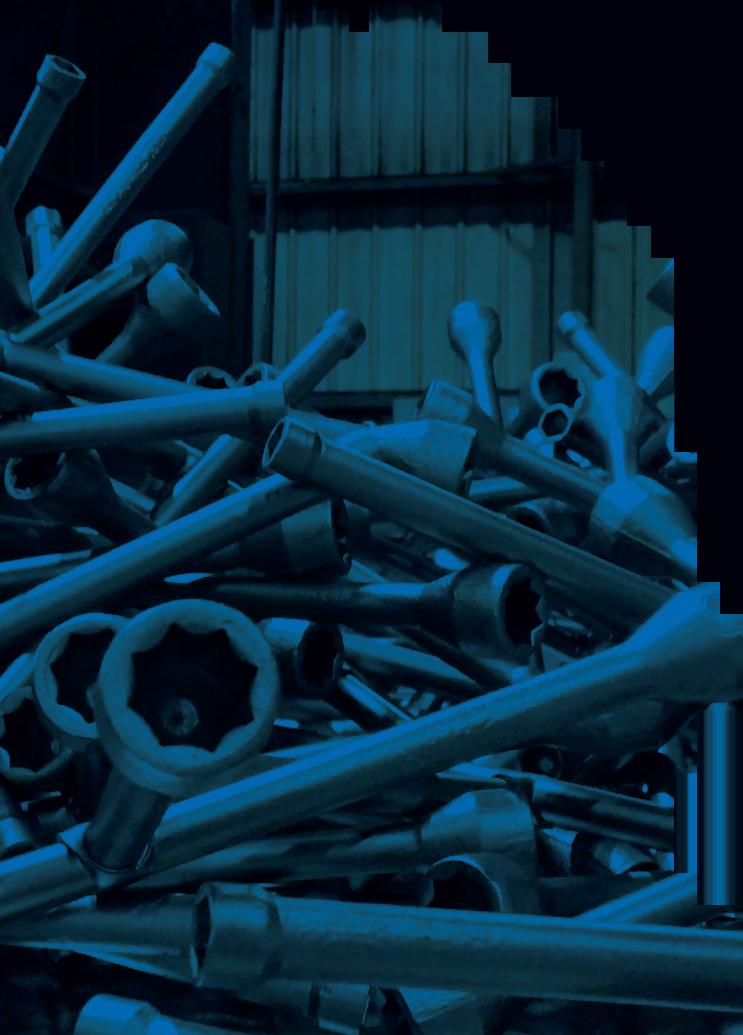

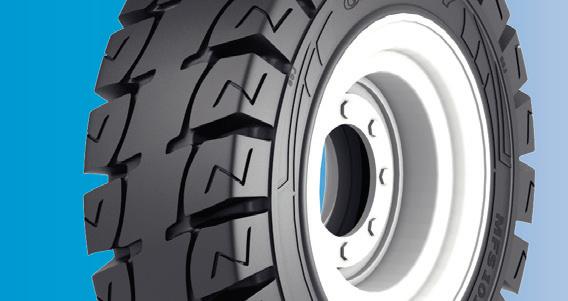

Bhavesh Sondagar, national product manager at Galaxy Tires, Yokohama Off-Highway Tires America, Inc., says several key trends “have been gaining momentum in the forklift tire sector.”
Photo: Yokohama Off-Highway Tires America Inc.
surfaces and high-load environments. Polyurethane tires are being adopted in indoor applications thanks to their chemical resistance, lightweight properties and contribution to lower energy use.”
Cli Davis, executive vice president, North America, Sun Tyres & Wheel System/ TVS Eurogrip Tyres, says that the trend towards electric forkli s “re ects a broader movement in the industry towards eco-friendly solutions and sustainability. Advancements in battery technology are expected to yield longer run times for electric forkli s, enhancing productivity. e future of battery technology includes faster charging capabilities, minimizing downtime for electric forkli s.

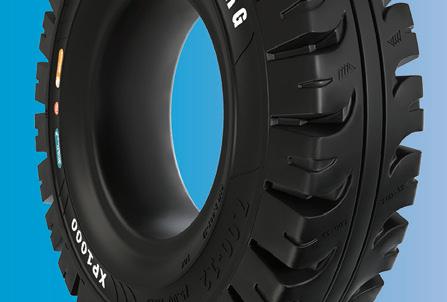
Marc Margossian, business development director, Yokohama TWS, cites electrifi cation in the marketplace as a major trend, along with tires that offer low rolling resistance.
Photo: Yokohama TWS
“Fully autonomous forkli s are also set to transform material handling processes, increasing productivity and safety in many cases. With autonomous operation, forkli s can work continuously without breaks, significantly boosting overall efficiency in material handling tasks. Because of the above trends, tires will be expected to keep up with new demanding levels of performance and longevity. Advancements in tire technology, better materials and more e cient production methods will continue to be a priority for improving overall performance, safety and sustainability.”
Bhavesh Sondagar, national product manager, Galaxy Tires, Yokohama Off-Highway Tires America Inc., says several key trends “have been gaining momentum in the forkli tire sector. Solid resilient tires are steadily gaining market



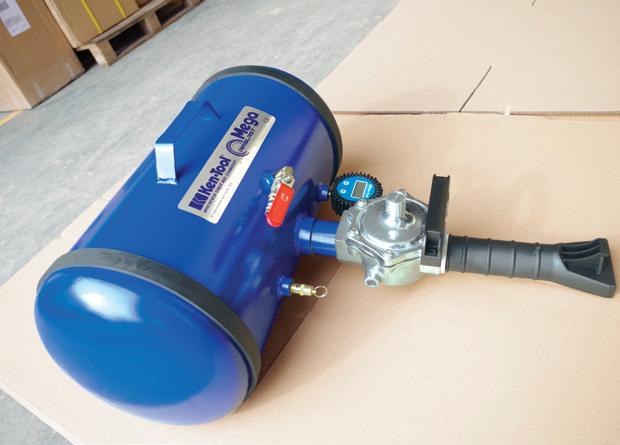
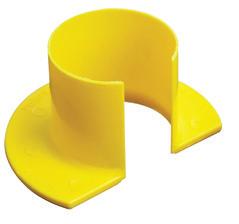
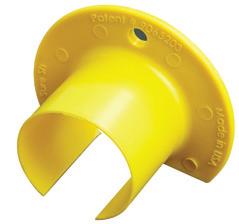
share over pneumatic options thanks to their longer service life, greater reliability and reduced maintenance needs. Two-stage solids are still a viable option for lighter-duty, single-shift applications. However, three-stage solids provide several advantages — such as improved comfort, superior heat dissipation and increased durability — making them particularly beneficial for demanding, multi-shift operations.
“With the rise of electric forklifts, tread designs and compounds that reduce rolling resistance are increasingly important to help maximize battery life. There’s also a surging need for non-marking variants in industries such as food and pharmaceuticals
“Another notable shift in the solid tire market is the growing demand for quick heel, or lip type, tires. Following strong adoption in Europe, sales have roughly doubled in recent years in North America. Quick heel tires offer faster and easier installation than standard fit designs, reducing the risk of improper mounting and minimizing downtime — making them the go-to choice for performance-driven operations.”

erties is a value to the marketplace and less energy consumption. If I can have a rubber tire that offers better rolling resistance properties that allows that tire to be a little bit more free-rolling, I can use less fuel, less battery and less propane. We’re also seeing more and more competition coming to the market and more low-cost competitors.
“There’s a growing demand for specialized and customized tires, especially for electric forklifts and in specific industrial environments,” says Ken Cooper, director for material handling, USA, Zhongce Rubber Group Co. Ltd.
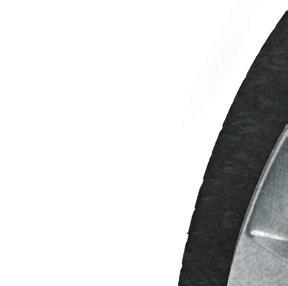

patterns are being optimized for better traction and performance in various operating conditions. Solid and non-pneumatic tires are gaining popularity due to their ability to withstand punctures and heavy loads, requiring less maintenance compared to pneumatic tires.

‘New trends in forklift tires are focused on improving performance, durability and safety, with a significant push towards sustainability and smart technology.’
Ken Cooper, director for material handling, USA, Zhongce Rubber Group Co. Ltd.
Marc Margossian, business development director, Yokohama TWS, cites electrification in the marketplace as a major trend. The desire for tires that offer low rolling resistance, “while it was very important before batteries became better-performing, is actually coming back again, as there’s more electrification in the marketplace and offering tires that have improved rolling resistance prop -
“Another thing is locked tires,” says Margossian. “We’re seeing a great movement towards locked tires versus standard tires. Lock tires are a lower cost option and easier to change. So we’ve been moving our inventory for some time already to keep up with market needs. I know one of the OEMs has moved their entire production line of resilient tires to lock style versus standard and to me, that’s a significant move in the marketplace.”
“New trends in forklift tires are focused on improving performance, durability and safety, with a significant push towards sustainability and smart technology,” says Ken Cooper, director for material handling, USA, Zhongce Rubber Group Co. Ltd. “ This includes the increased use of solid and non-pneumatic tires, the integration of smart tire technology and advancements in rubber compounds for longer wear and better grip. Additionally, there’s a growing demand for specialized and customized tires, particularly for electric forklifts and in specific industrial environments.
“New rubber compounds are being developed to increase tire lifespan, improve grip and enhance resistance to wear and tear, including punctures. Tread
“Sensors are being integrated into tires to monitor pressure, temperature and wear, providing valuable data for fleet management and predictive maintenance. Telematics technology allows for remote tracking and monitoring of forklift operations, including tire condition, enabling proactive maintenance and reducing downtime.

“Non-marking tires are becoming more prevalent in industries where floor discoloration is a concern, such as food processing and pharmaceutical,” says Cooper. “Tire manufacturers offer specialized solutions, including different bead designs for various floor types and specific needs of electric forklifts. There’s a growing focus on developing eco-friendly tire materials, aligning with the broader sustainability trend.
“The increasing adoption of electric forklifts is driving demand for specialized tires designed for their unique characteristics,” he continues. “The growth of e-commerce and (the) logistics sectors is also fueling the demand for efficient material handling equipment and consequently, forklift tires. Providing customers with more tools in the toolbox is simply taking service to a whole different level, i.e., e-commerce portals to access manufacturers’ products, pricing and other useful information to provide to their employees, their customers and their market areas.” ■













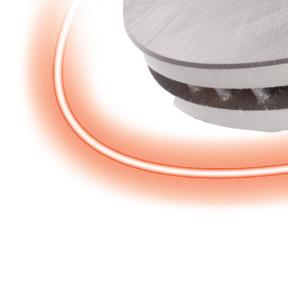



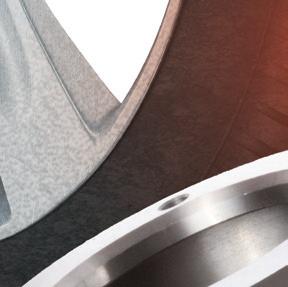
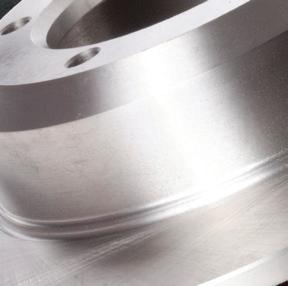


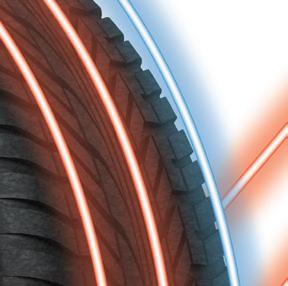
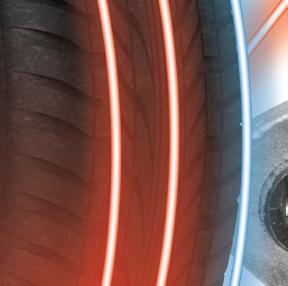

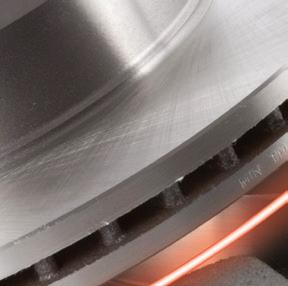


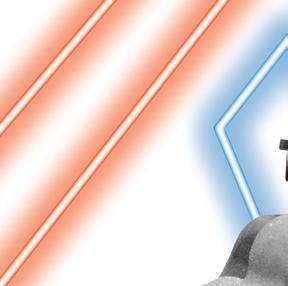
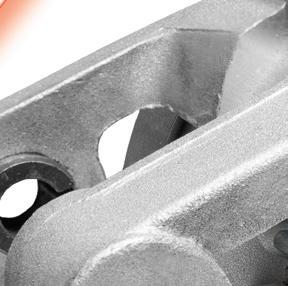

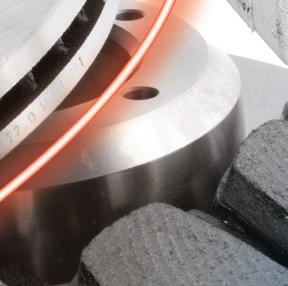



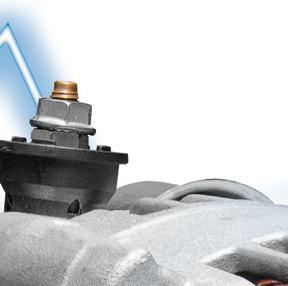
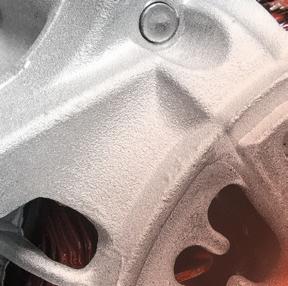




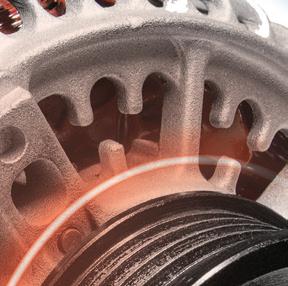




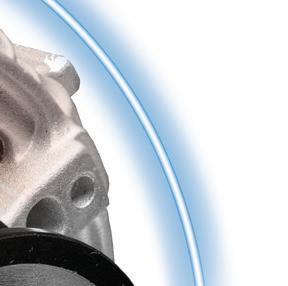
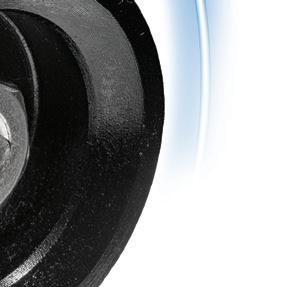

Modern Tire Dealer has partnered with AG Tire Talk to provide answers to insightful questions that farm tire dealers have about farm tire technology. is is the next installment in our ongoing series, which is designed to help farm tire dealers better connect with their customers. A trending question, followed by answers, will appear in our Commercial Tire Dealer section every other month. For complete answers, click on www.agtiretalk.com.

FEATURE IMAGE & VISUAL 3
QUESTIONS: What is a segmented mold versus a clamshell mold? How does tire production di er and what is a visual cue on the tire indicating the di erence? Why are we seeing growth in segmented mold usage in the agricultural tire segment and which ag tire segments do you recommend usage of each?
NICK PHILLIPPI, product manager/technical support, North America, Ascenso Tires North America: A segmental mold is an individual part design of sidewall plates and tread segment sets assembled in the actuator container to form the mold, as called a segmented mold.
A clamshell/two-piece mold is a two halves design. Bottom half and top half assemble and form the tire cavity. Uniformity will always be better in a segmented mold. Due to this reason PCR and TBR all are in segmented molds. For
high-speed applications, a segmented mold would need to be used — generally, when considering speeds over 45 mph.
FEATURE IMAGE & VISUAL 3
A segmented mold costs three-to-four times (more) than a two-piece mold. erefore, the value in cost to the end user must be partially considered in the decision. Segmented versus clamshell mold applications include:
Mold Segments
• Bias rear tractor: Clamshell mold;
• Radial rear tractor: Clamshell mold with a few application sizes that may use a segmented mold;
Mold Segments
S e g m e nte d Mo l d

*Courtesy of Maxam Tire International
• Bias implement: Clamshell mold;
• Radial implement: Clamshell mold with high-speed products moved to a segmented mold;
S e g m e nte d Mo l d
*Courtesy of Maxam Tire International
• Bias otation: Clamshell mold;
• Radial otation: Clamshell mold with segmented molds for critical pattern and high-speed products.
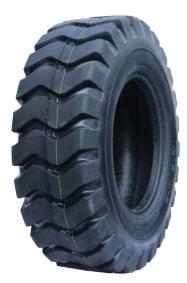
Uniformity can also be gained using steel belts, which Ascenso uses in a great deal of the radial ag segment. erefore, the need for segmented molds to meet the highest standards is reduced.
DAVE PAULK, manager eld technical services, BKT USA Inc.: Tire molds give the tire its nal shape. ere are two types of molds used in the production of agricultural tires: segmented and clamshell. Both are used, but there are distinct di erences in how they work.
Clamshell (two-piece) molds have been used for many years and are still used in both bias-ply and some radial-ply tire production. ey open and close like a clamshell.
The bladder is inflated, usually by steam, to force the tire outward against the mold where the tread is formed and the tire is cured under heat. A er curing, biasply tires will shrink. is allows the tire to come out of the mold without tearing the tire and the tread. Most bias- ply agricultural tires are cured with this method.
Clamshell molds are less costly to make than segmented molds. ere are many reasons why bias tires are less expensive than radials, but this is one reason. Uniformity is generally not an issue with bias tires using this type of mold.
Segmented molds, as the name implies, are molds made in segments that separate outward when the tire is cured. Pressure to the tire is from the outside and not from the inside, like a clamshell mold. is method doesn’t stress the belt package in the tire when curing.
All all-steel radial construction tires and steel-belted radial tires are made and cured with segmented molds. e green tires are already pre-shaped. If these are cured in a clamshell mold, there is a chance of mold scraping — the mold tread portion touching the green tire before the mold closes. is can disturb the tread mass and cause uneven distribution of tread rubber during curing. ese tires have very little shrinkage a er curing. If segmented molds are not used, they are very di cult to get out of the molds and can tear the tread bars.
The segmented molds open from the tire and allow the tire to easily be taken out. If steel-belted tires are cured in clamshell molds, since the pressure is exerted from the inside, stress is placed on the carcass of the tire that can result in
tire failures. Segmented molds are more expensive to make, but ensure better uniformity when curing all steel or steel belted carcasses.
By looking at the tread and nding the le over mold marks — thin ribbons of rubber — it’s easy to determine which type of mold the tire was made in. If there is only one mold mark and it runs circumferentially around the center of
the tire, it was made in a clamshell mold. If the mold marks go across the tread from side to side in a few di erent spots, the tire was made in a segmented mold.
GREG GILLAND: vice president, global agriculture, Maxam Tire North America Inc.: In tire manufacturing, vulcanization is the nal chemical reaction that turns so , elastic rubber into a rm, nished






product using time, temperature and high pressure. is process takes place inside a heated tire mold, where the exact curing time varies depending on the tire’s size. During vulcanization, the tire’s components — such as nylon or steel cords, belts and layers of rubber — bond into a single nished product.
e mold not only cures the tire, but also imprints the nal tread design and required markings.
As modern tires have become larger or narrower with greater demands for traction, endurance and fuel e ciency, manufacturers have moved away from traditional “clamshell” molds — once the standard for bias-ply tires — toward segmented molds that can more e ciently produce radial tires.
When examining the key di erences between the types of tire molds being utilized, the two types can be generally outlined as follows. Clamshell molds are:
• Commonly used for bias-ply agricultural tires or standard radial tires with an aspect ratio of about 80% or higher;
• Consists of two primary parts (upper and lower shells) that clamp together around the green tire;
• Typically, the lower shell remains xed and the upper shell raises and lowers for loading and unloading the tire;
• As a rule, we will see smaller ag equipment well below 75 hp or older ag equipment using bias ply or standard size (+80 A/S) radial tires that can be cured in clamshell molds.
FEATURE IMAGE & VISUAL 3
SEGMENTED MOLD
Segmented molds:
• Typically used for almost all ag radial casing tires regardless of tread or aspect ratio;
• As shown in the images from Maxam’s sister company, Mesnac, a segmented mold allows for signi cantly more intricate tread designs as well as tire sizes in various aspect ratios (from 35% A/S up to 100% A/S) to be both developed and cured;
TOP Half
Top half
BOTTOM Half
Bottom half
• Like a clamshell mold, it closes around the green tire. Multiple segments lock in place concentrically, minimizing tire movement during vulcanization;
• Segmented molds have improved tire uniformity, quality, nish and overall performance, providing the market with better or longer lasting products designed to meet the growing technical challenges of the tire industry;
• As radial ag tires continue to evolve in both size and section width, with lower aspect ratios and in overall diameters to accommodate larger load carrying air chambers, segmented mold technology is providing the engineering capability to develop the right tire solutions;
• In most instances and depending on tire manufacturers, most ag machinery above +75 hp has evolved to radial tires that can use both standard and lower-aspect ratio tires that will require segmented molds to deliver product solutions that have the performance capability that the market requires for above-100 hp tractors, combine harvesters, self propelled sprayers, oaters and high-speed implement or tanker platforms.
VISUAL 1
CLAMSHELL MOLD
VISUAL 4

CLAMSHELL MOLD
*Courtesy Yokohama TWS
turing process. A well-designed mold can ensure even material distribution, reducing weak spots that may lead to premature wear or even failure.
VISUAL 5
Molds also determine the tread pattern and depth, which impacts tractive capacity of a tire, handling/stability and overall performance. More intricate tread patterns from segmented molds can enhance grip and performance in various conditions, while simpler designs from clamshell molds may not perform as well in specialized applications.
GREEN TIRE IN CLAMSHELL MOLD
Segmented Mold
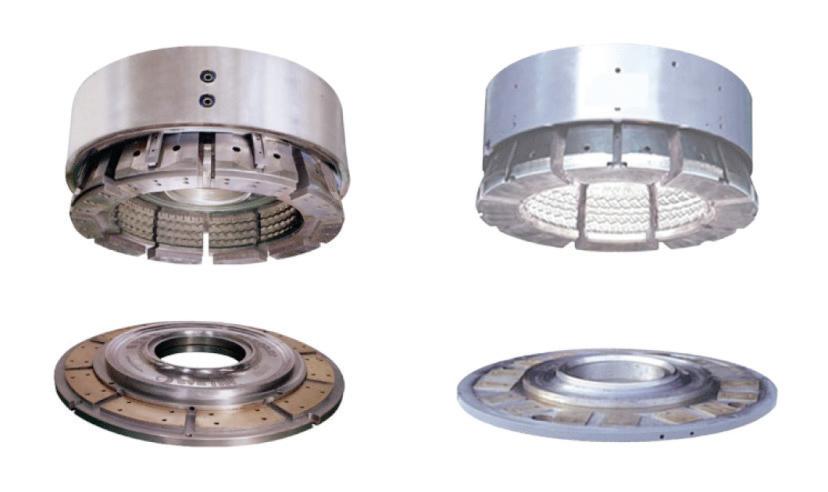
All our current radial ag products, from the AgriXtra family of tires to our FlotXtra, as well as AgilXtra Flotation high speed radial tires, are manufactured using sectional molds to ensure we can deliver the absolute highest quality of
Regardless of mold, the quality of each mold can a ect how heat is managed within the tire during operation. Proper ventilation and design elements in the mold can help dissipate heat, which is crucial for rubber compound consistency, which could prevent tire blow-outs, cause excessive wear and ultimately extend tire life.
Unfortunately, there is a cost associated with a well-designed mold. Some ag tire molds can cost as little as $25,000 and higher-quality molds could be in excess of $150,000.
Multiple Horizontal Lines
Overall, in addition to rubber compounds and casing/tread design, tires produced in high-quality molds tend to last longer and perform better than those made in lower-quality molds, despite the mold type.
*Courtesy of Ascenso Tires North America
In radial tire construction, the two main types of molds used are segmented molds and clamshell molds.
VISUAL 2
Mold segments
Mold Segments
global account manager, agriculture, Michelin North Tire molds signi cantly in uence both tire longevity and perfor-
Clamshell Mold
e design of the mold a ects how rubber compounds are distributed throughout the tire during the manufac-
I would recommend segmented molded tires when (a customer has) very speci c and high-performance expectations. ese applications could include specialty farming, where there is a bene t to using hybrid tread designs for roading, tractive capacity, e ciency, etc. Clamshell
Single Vertical Line
*Courtesy of Maxam Tire International
Yokohama TWS
molds, on the other hand, are suitable for general purpose applications, where cost-e ectiveness is the priority of the manufacturer and the need for specialized performance is unnecessary.
NORBERTO HERBENER, senior technical service manager, North and Central America, Yokohama TWS: Tire manufacturing involves several processes and the last one, before nal quality inspection, is the curing process (vulcanization). During this step, the prepared tire — called a green tire — is placed in a curing mold that will shape and cure the tire and deliver a nal product. During this step, the mold, with the green tire inside, will be heated at a speci c temperature for a speci c time, depending on the tire size and type. e di erent tire components, mainly raw rubber, will start to meld together and bond between them at the same time the rubber is hardened. is non-reversable process is called vulcanization and alters the internal chemical structure of the rubber.
is curing step is performed in equipment called curing presses, basically an enclosed sealed chamber where the tire is molded.
e external shape of the tire is formed by the shape of the mold and internally an expandable bladder presses the material against these molds.
All tires are vulcanized using one of the two types of mold technology available — clamshell or segmented molds.
A clamshell mold is basically two opposite molds, one xed to the base of the curing press and one on the top the curing press dome.
A er the green tire is placed inside this mold, the dome closes down and creates a closed chamber where the tire is molded/cured.
is system is mostly used in larger tires and tires with continuous lugs like the R1 tread. is tread allows the tire to slide from the mold during the press opening.
In contrast, the segmented mold system involves more moving parts, with two molds for the sidewalls and several molds for the tread area — the quantity of segments depends on the size of the tire. Depending on the tire design and size the segments could also include the sidewall mold area.
During curing, these segments are compressed by an outer ring that keeps them aligned.

Once the curing is over, this ring expands allowing the segments to move outwards releasing the tire. is system is used when the tire tread has long lugs or complex tread designs that could be damaged during mold opening, if using a clamshell system. e segmented mold system can also be used on R1 tread design tires. Several manufacturers that have segmented mold system presses in their factories use them to increase press usage time. ■











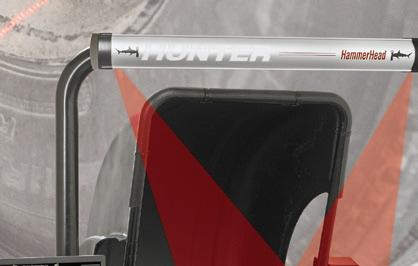
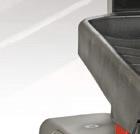
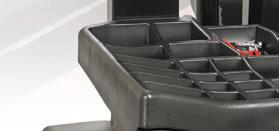
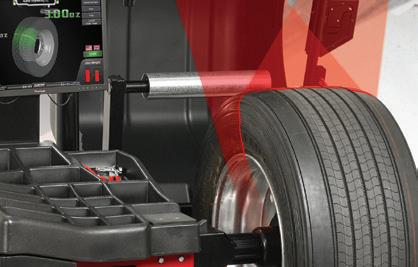




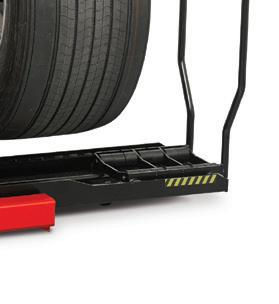
By

Dennis McCarron
During my career, I’ve spent a considerable amount of time talking, laughing and getting emotional about the stories I hear from tire dealers.
This includes the excitement of starting a new venture and the long hours of establishing a new business as a destination for people’s second largest investment, as well as the heartache of disappointing a valued customer and the frustration of even being accused of doing something you didn’t do — not to mention the overall stress of running a small business.
Much of the pressure, strain and tension from running a small business has to do with keeping the doors open and ensuring there’s enough cash flow to make payroll. In the beginning, you can forget about net profit. Just please let there be enough cash in the account to cover payroll! That’s something an employee never has to worry about. But even after hits, misses, swings, strikeouts and home runs, payroll is just the first expense on the profit and loss statement. There’s a cavalry of fixed and variable expenses that also must be paid.
In the automotive and tire aftermarket, the standard bearer of success has been 10 cents on the sales dollar. If 10 cents makes it from top line to bottom line, you have good business. With 10 cents, you can make all your expenses, pay yourself — finally — and move the little bit left over to a balance sheet, where taxes, accounts payable and other items take another bite — and you start growing your cash reserves and even (time for a hushed whisper) any retained earnings.
I say all of this because ultimately conversations with owners almost always come down to how to make more money, either in sales, gross profit or net profit.
Most stores operate within a bell curve of profitability, as depicted below.
The large middle section is almost 70% of stores, representing operations that are staffed accordingly — to financial, but not always to the store manager’s contentment — have adequate vehi-
cle count and an average repair order of a couple hundred dollars, roughly a third of which is tires, a third parts and a third labor. This is what generates the 10-cent profit on a dollar sale. More labor? More profit. More tires? Lower margins of gross profit and higher sales dollars. Lower car count or lower repair orders? Not going to get 10 cents. It disappears in expenses.
If your business falls into the 70% — with a couple of service advisors, a few more techs than advisors, a double-digit daily car count and at least a basic vehicle inspection process — you should be treading water financially. So stop focusing on profit.
What I mean to say is, by focusing too much on profit, you’re infecting the process. You’re poisoning the well. By over-focusing on results instead of process, you’re getting the attention of the doers, the individual contributors of the business, but are forcing them to focus on the outcome: how much money they make off a sale.
This will very quickly and easily translate into the communication style in your dealership and with your customer. It won’t be blatant, of course. But customers will sense it. And they won’t be back. This means you’ll have to increase expenses to reach more customers — only to risk turning them off on a first visit.
Establishing a level of trust that adequate car count and an attentive advisor who asks pertinent questions before the process begins will give valuable information to the crew working on the cars and trucks. Be wildly passionate about discovering what’s important to the customer before the work starts. That’s where the profit is. It’s locked up with the customer. They pay the bills. They cover your dealership’s payroll.
As an owner, you should be 100% focused on the process, experience and steps — whatever you want to call it. That’s how it happens. The result has been cast in stone for 100 years. Friendly, engaged employees reduce customer stress. Less-stressed customers spend more money than stressed ones. Profits are then reinvested in the business to accommodate more customers.
If you get to — or have ever been a part of — a store that figures this out, you’ll never forget it. Imagine 30 cars a day out of six bays with an ARO of $400. You’re now living on the right side of the bell curve, where you’ve outpaced fixed expenses. The only stress you’ll experience is how the heck you’re going to get it all done today.
Dealers who find themselves on the left side of the bell curve need to focus on volume, so customers can become loyal to the process. Stores in the curve refine their process to get from 10 cents to 12 cents. Stores on the right-hand side? Have fun operating in controlled chaos. Profit happens because of the right process with the right people. You can’t force it. ■
Dennis McCarron is a partner at Cardinal Brokers Inc., one of the leading brokers in the tire and automotive industry (www.cardinalbrokers.com.) To contact McCarron, email him at dennis@cardinalbrokers.com.
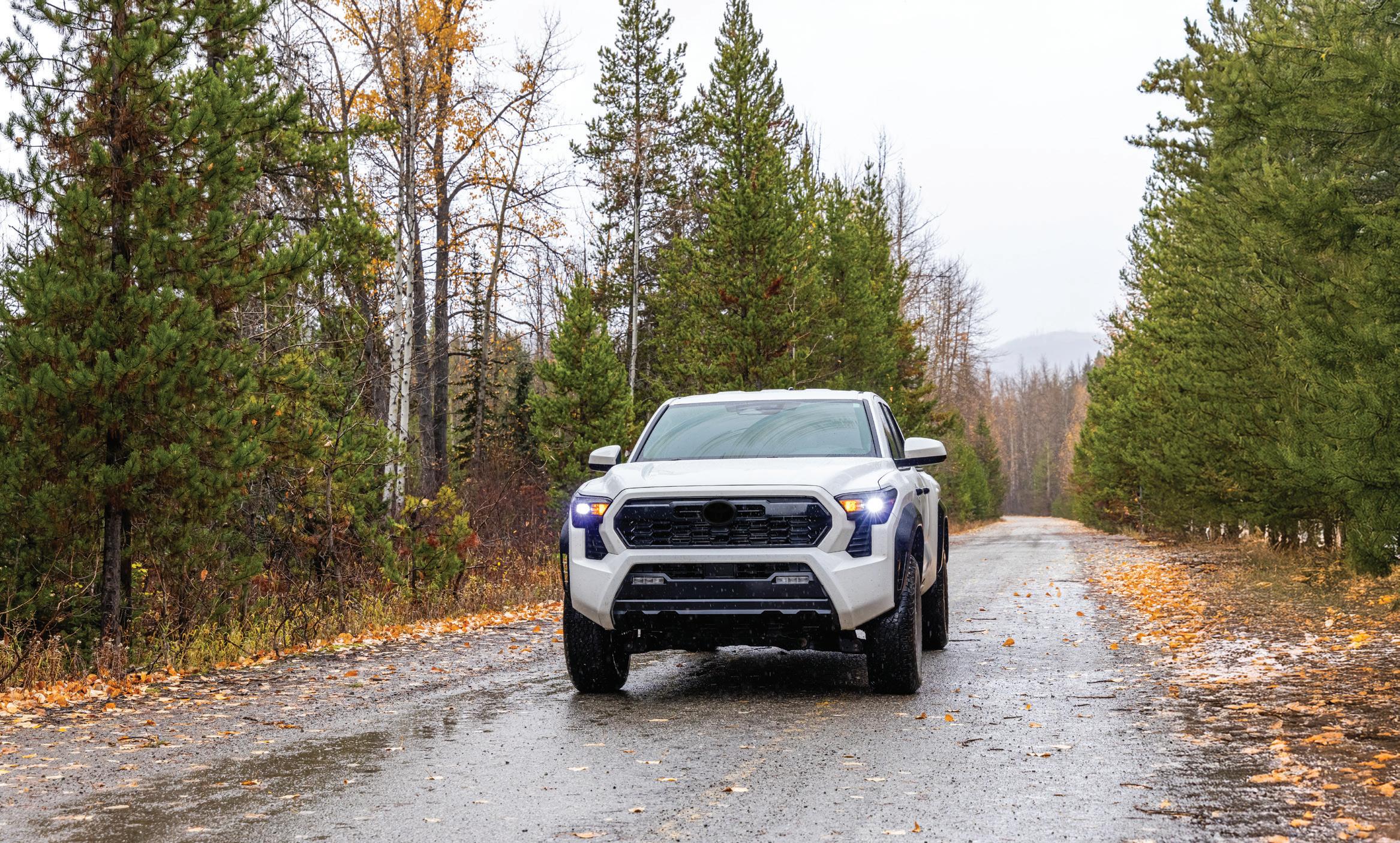








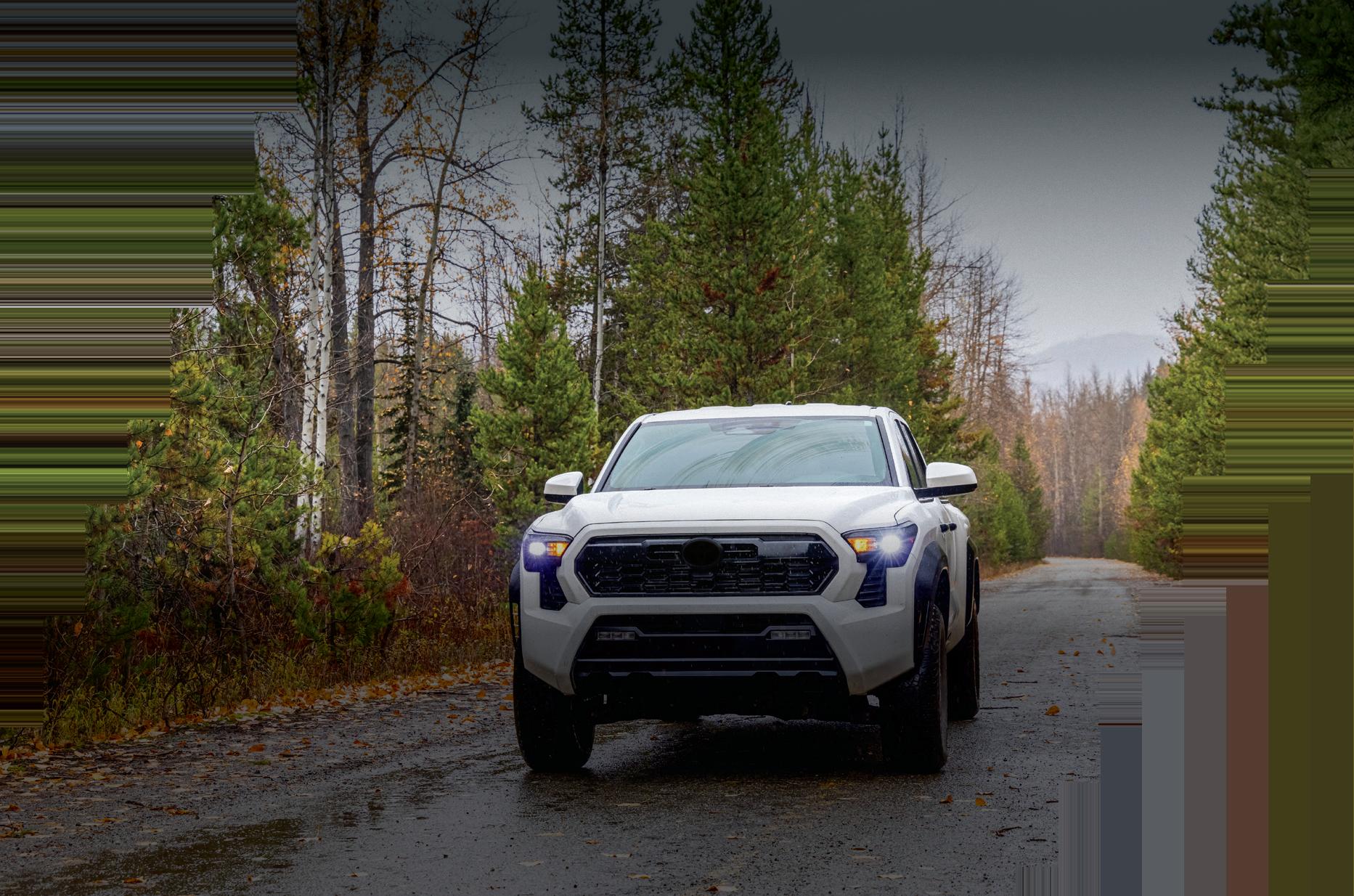
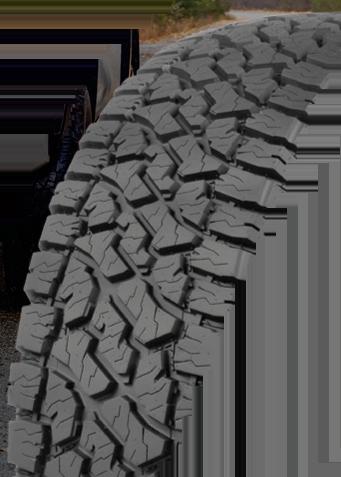



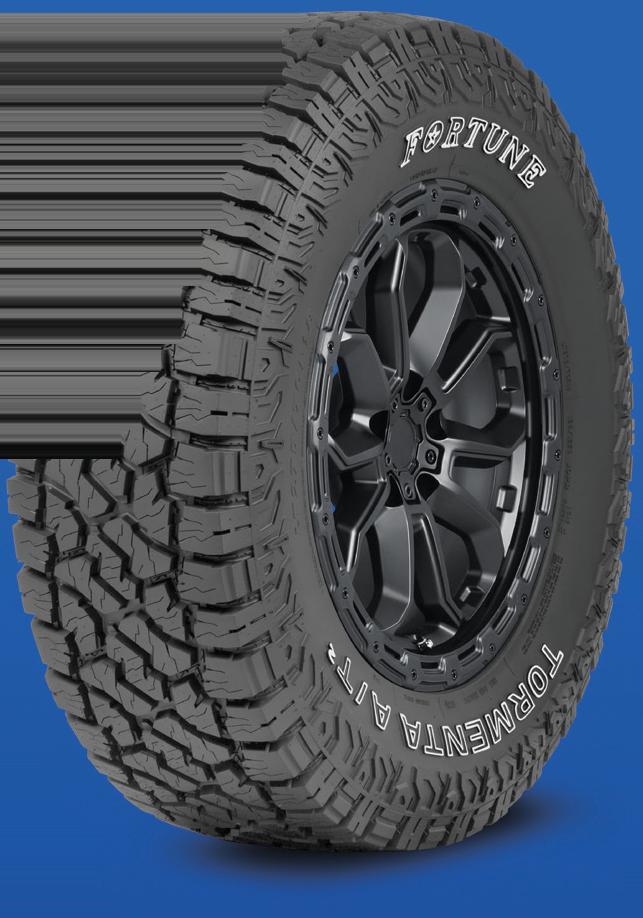












Cole Strandberg By
hen it comes to selling your dealership, there’s plenty of talk about valuation drivers — the things that can increase the value of your company in the eyes of a buyer. But just as important — and often overlooked — are the valuation killers. These are the red flags or structural weaknesses that can quietly drag down your business’s worth or even scare off buyers entirely. If you’re building with the end in mind or just want a stronger, more sustainable operation, it’s critical to address these issues early.
A common killer of deals is customer concentration. If a large portion of your revenue comes from just one or two customers, buyers will view this as a major risk. What happens if that key customer leaves? A healthy customer base is one that’s diversified across multiple accounts, geographies or service types.
Aim to keep any single customer below 15% to 20% of your dealership’s total revenue, whenever possible. If you’re a traditional retail operation with hundreds of customers, this may not be relevant. If you’re a commercial dealer or a dealer with a significant chunk of business coming from one marketing channel, it’s worth a thought. We don’t talk about customer concentration enough in this industry, but it still matters.
Similarly, vendor concentration can create serious vulnerabilities. If your business depends heavily on one or two key suppliers, you’re at risk of pricing pressure, supply disruption and/or unfavorable terms. Buyers will dig into your supply chain relationships and look for alternatives. Diversifying suppliers, negotiating long-term agreements or exploring exclusive arrangements can help ease concerns. If you’ve seen fantastic businesses sitting on the market for a long time without the right buyer coming along, it may be because of vendor concentration. As with customer concentration, diversification is key.
Real estate can be a major value creator or a value killer, as addressed in a previous column. Less than optimal facilities, short-term leases, zoning issues or poor locations can all negatively impact valuation. Buyers want to see clean, compliant and long-term real estate arrangements.
In some cases, poorly negotiated leases or deteriorating buildings can hurt a deal more than a bad P&L. The physical location of your dealership and its future usability can matter just as much as the numbers on paper. It’s easy to claim a business is relocatable, but in this industry, a good location with long-term staying power is paramount.
If you’re the face of your business and the one making every decision and holding every supplier and/or customer relationship, that’s a problem. While it may feel like a strength to be deeply involved, buyers see it as a risk. What happens when you leave? Businesses that run well without the owner in every meeting
or transaction are considered to be more valuable. Delegation, documented processes and a strong second tier of management are crucial for attracting top buyers. It’s tempting to want to take credit for your business’s success. But in the M&A process, the less you’re involved in the day-to-day, the better.
The labor shortage across the automotive industry is no secret and many dealerships continue to rely on veteran technicians who are nearing retirement. While having experienced staff is valuable, a workforce without a clear pipeline of younger talent — or at least talent who are planning on sticking around for a while — may be seen as a long-term liability. Buyers want confidence that a business can continue to operate without a generational cliff. Investing in technician development and recruiting younger staff can protect your valuation down the line. You don’t want to have a core base of technicians looking to follow you into retirement.
‘Build for the day you’re ready to exit and make sure nothing silently eats away at the value you’ve worked so hard to create.’
Have you thought about brand equity? Buyers don’t just want a cash-flowing business. They want to buy a recognizable, reputable brand, even if they’re going to re-brand your business themselves. A lack of brand identity and a poor online presence are red flags. Even small operators can build meaningful brand equity through local marketing, consistent service and customer engagement. In today’s world, an up-to-date website, an active Google presence and strong, positive customer reviews go a long way.
Poor financial reporting can hurt the market value of your business. Inaccurate, incomplete or overly complex financials are another deal killer.
Sloppy books make buyers nervous and suggest there may be deeper operational issues. Clean financials will make your business easier to value and much easier to sell.
If you’re considering a sale or simply want to prepare your business for long-term success, identifying and addressing these valuation killers early will serve you well.
Buyers love businesses with clean books, clean facilities and clean stories. Don’t just build for today. Build for the day you’re ready to exit and make sure nothing silently eats away at the value you’ve worked so hard to create. ■
Cole Strandberg is a managing director with Focus Investment Banking’s automotive aftermarket team, specializing in mergers, acquisitions and capital raising for multi-location tire dealerships and automotive service businesses. Email him at cole.strandberg@focusbankers.com.



























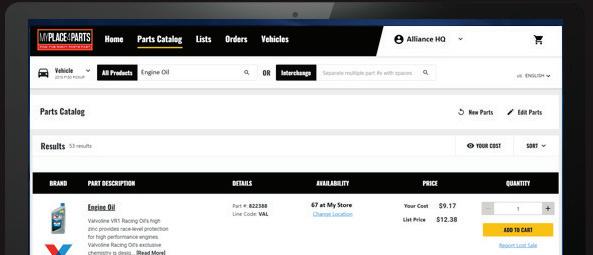







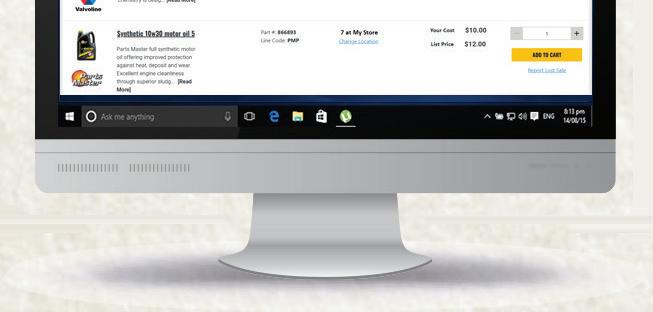



Randy O’Connor By
ire dealers are always looking for ways to improve shop efficiency, reduce technician downtime and deliver a better customer experience. But one area that’s often overlooked is how we structure our front-of-house team — specifically, the balance between sales associates and service management.
Lately, especially as payroll growth year-over-year is outpacing gross profit increases year-over-year, this topic has surfaced quite a bit. Is it more efficient to have three sales associates managing the repair orders from cradle to grave or two sales associates, supported by one dedicated service manager, who coordinates service management?
Let’s break this down, using some real numbers to see which structure drives better performance.
The first structure — with three sales associates, each managing their own set of repair orders from start to finish — is very popular in tire dealerships. On paper, this set-up seems efficient. You have three experienced sales associates and each is responsible for writing work orders, communicating with customers and directly coordinating with a group of technicians — let’s say two techs each for a dealership with six technicians.
The pros? Sales associates own their lane. They’re responsible for customer service, upselling and technician workflow. That autonomy can feel efficient and personal. But in practice, this model leads to multi-tasking fatigue and hidden inefficiencies. Sales associates in this structure aren’t just selling. They’re juggling technician questions, handling missed parts deliveries, reassigning jobs on the fly and trying to keep techs productive, while answering phones and quoting repairs.
It’s a lot and we often find the overwhelming nature associated with this scope of work causes deficiencies with both customers and techs. This causes poor customer service and less productivity, not to mention added stress for everyone.
Let’s say each sales associate manages eight jobs per day. If they spend 10 minutes writing each estimate and another five minutes, on the very low end, coordinating technician workflow, that’s two hours of coordination time per day — time that could be used for delivering focused customer service, selling, upselling or handling follow-ups.
Now think about technician downtime. If each tech waits just five minutes per job due to time spent answering phones, working with customers, unclear communication, etc., that adds up to two tech hours lost per day across a six-tech shop. With four jobs per tech per day, that’s about 0.5 jobs lost per day or 13 jobs per month. At an average repair order of $500, that’s $6,500 in missed revenue. And that’s a conservative estimate.
Now consider the alternative: two front-end salespeople whose only job is to write work orders, greet customers and focus on
delivering truly professional customer service. Behind them stands a dedicated service manager — someone who handles all technician scheduling, workflow optimization, bay assignments and parts timing. This structure introduces clear communication channels. Salespeople deal with people. The service manager deals with workflow and the shop floor.
Here’s what happens: sales associates, freed from the stress of coordinating technicians, can now handle 12 to 13 repair orders per day instead of eight. They also now have time to handle receivables and better manage inventory. The service manager, managing the full workload of 24 to 26 jobs per day, spends about two hours total coordinating the shop. But that time is centralized, which means jobs are prioritized, bays are balanced and techs aren’t stuck waiting for their next assignment.
Technician productivity also increases. Wait time drops from five minutes per job to about one minute. You save about 1.5 technician hours per day or gain an extra 0.4 to 0.5 jobs. Over the course of a month, that’s 10 to 12 more jobs or $5,000 to $6,000 in recovered revenue. This doesn’t even include improved customer experience and sales conversion from a more focused front-end staff.
Let’s look at a side-by-side comparison for a six-technician shop doing 24 jobs per day:
The takeaway is simple: centralizing workflow control through a service manager increases employee efficiency.

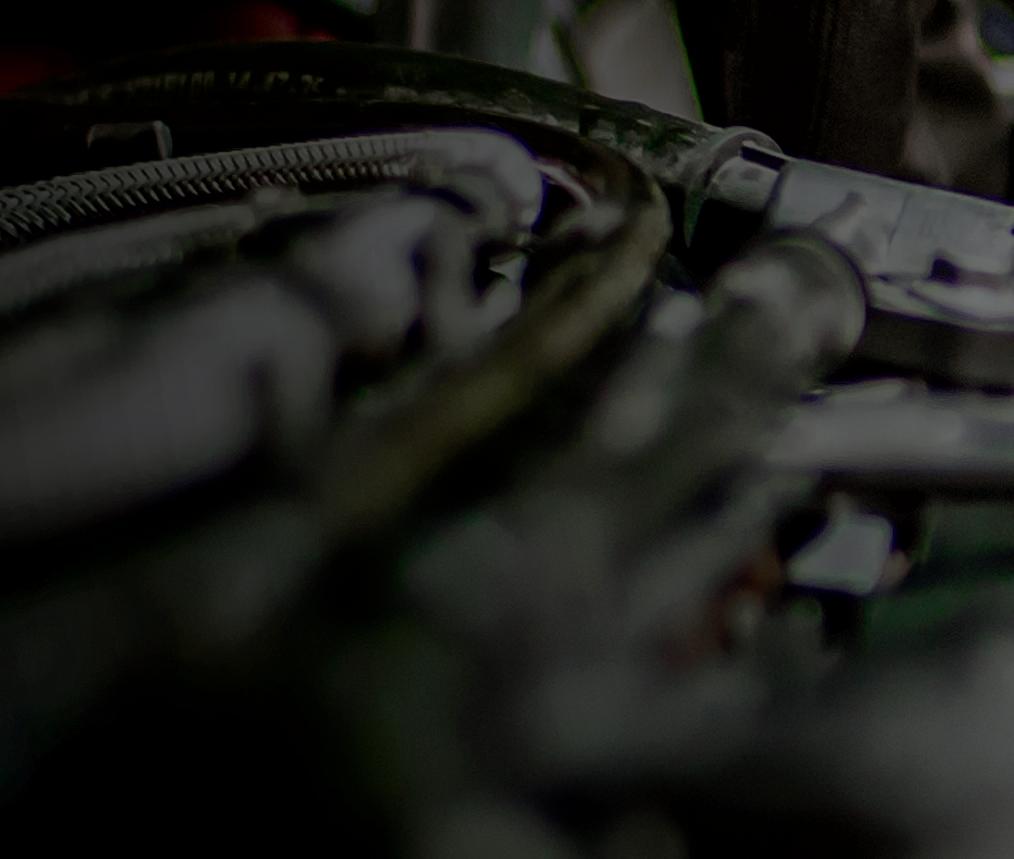
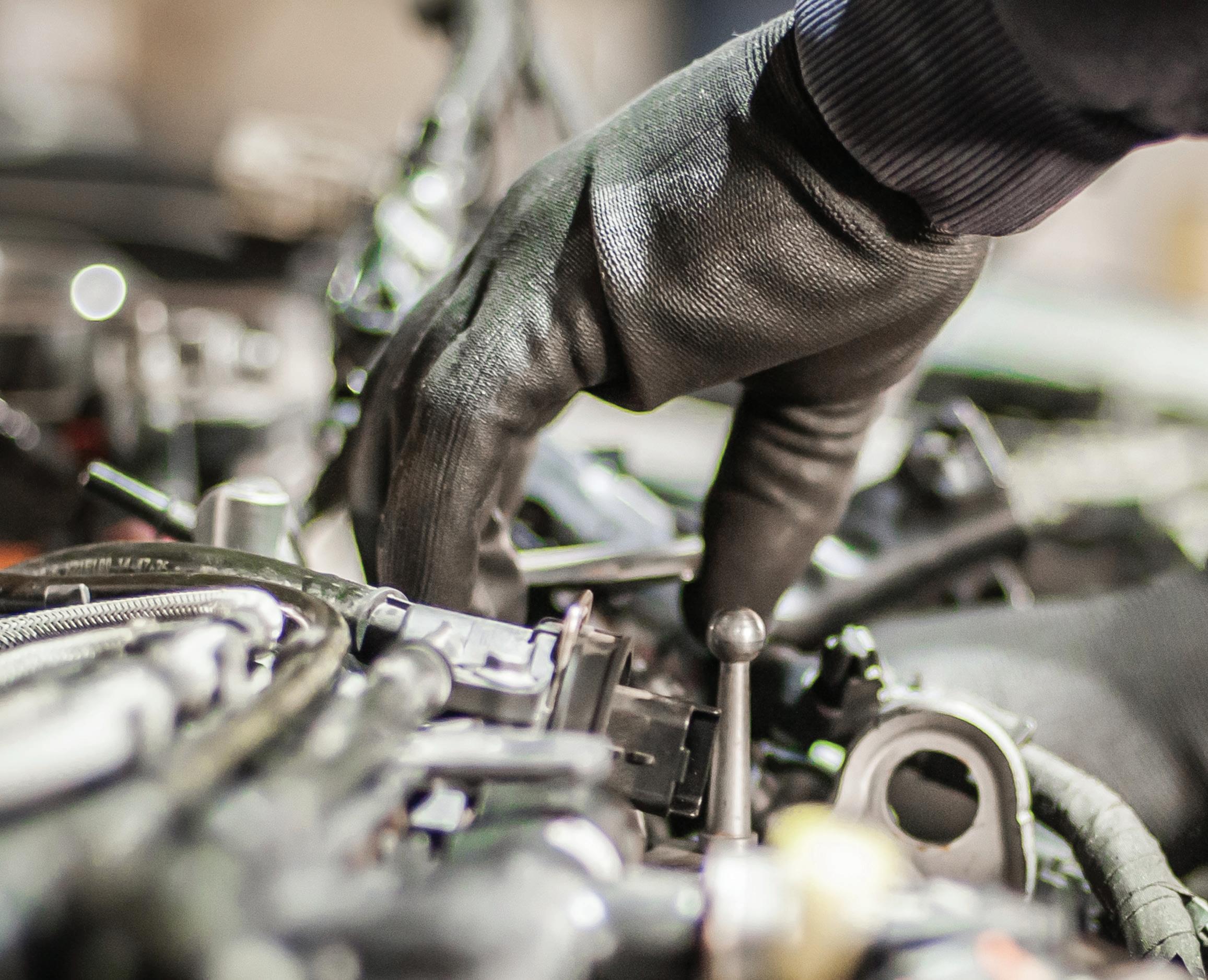



Motor Age Training offers the most complete and extensive ASE Training Series available anywhere
• Study guides
• Practice tests
• Detailed illustrations
• Available in your favorite format


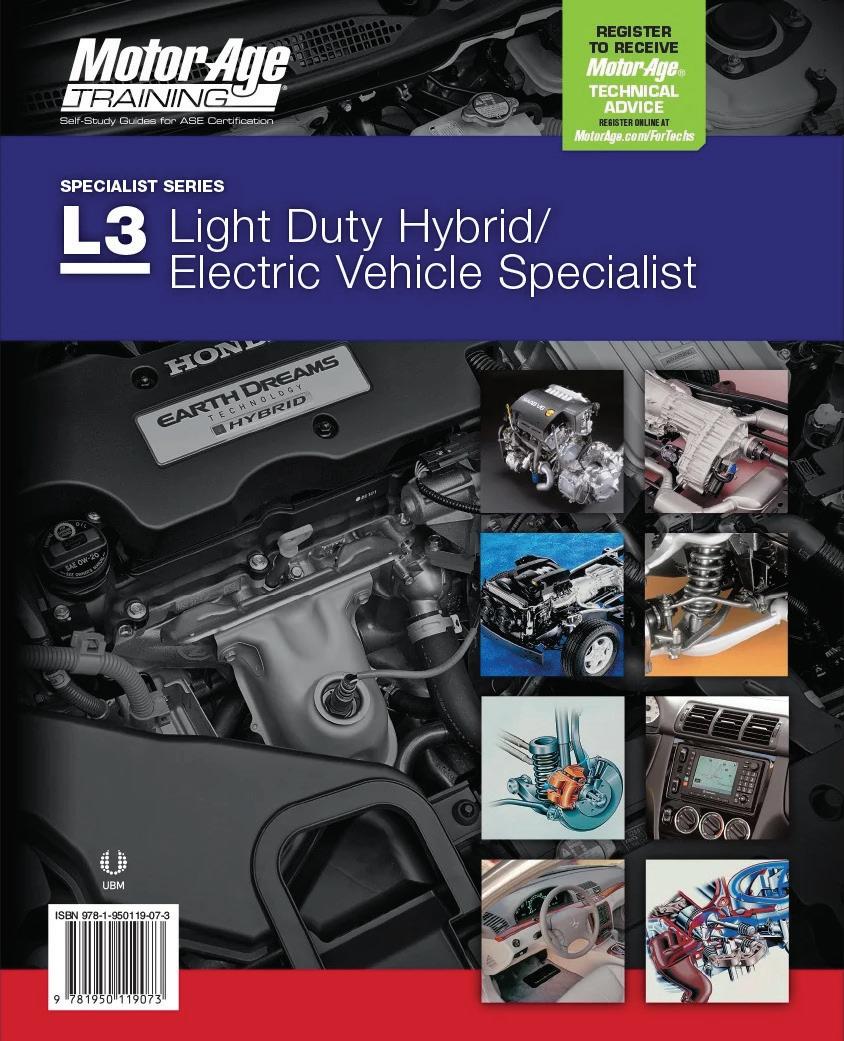









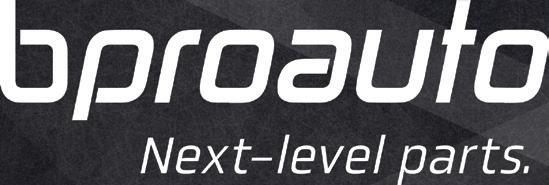




PREPARED TO EDUCATE YOUR CUSTOMERS
Craig Van Batenburg By
When you go on your first road test when buying a new car, what do you do? Walking over to the car or truck, you may say to yourself, “I love the looks of this” and the paint job just “pops.” These emotions may “seal the deal” and the rest is, “How do I pay for my dream machine?”
Once you take delivery, those first few miles are like taking a vacation to someplace new, warm and sunny. Put on your favorite song, adjust the climate control and off you go. It’s all so good, for a while. Then comes the first scratch, a lost french fry in a spot you cannot reach and heaven forbid, a bird dropping on the hood.
The new love affair has its first fight with the elements. You try so hard to keep your car clean and new, but eventually it becomes just another payment and it’s now time for the tires to get replaced — the first large expense for this new car.
Electric vehicles (EVs) often use expensive tires. When the EV is fast — and many are — its low-end torque can eat up a set of tires quickly.
vehicle weight without compromising structural integrity. Lightweight materials are important for many reasons. A lighter vehicle requires less energy to move — meaning the battery may last longer — and also extend the vehicle’s range. By improving energy efficiency, these materials help in lowering the operational costs associated with EVs, making them a more attractive option for consumers.
In addressing environmental concerns, lightweight materials also offer a substantial advantage. The reduced weight leads to lower energy requirements, which in turn means fewer emissions when generating the electricity needed to recharge the battery during the vehicle’s lifetime.
Aluminum, magnesium and carbon fiber lower weight, but increase the cost. Some plastics and other materials are lessexpensive. Less weight helps slow tire wear.
When your customers buy tires that wear out quickly, they may blame you.
Make sure you explain why an EV’s tires do wear faster, but don’t make statements about the customer’s choice of vehicle. Doing that will lose customers in a hurry.
We once bought a Kia Niro EV and the dealership’s service advisor suggested we should have bought a gas-powered car. Not cool.
‘When your customers buy tires that wear out quickly, they may blame you.’
Automotive Career Development Center, my EV technician training company, owns many EVs and they have been driven collectively over 200,000 miles. All of them have needed tires before 30,000 miles. The 2020 Tesla Model 3 is the worst. Why? The torque at all four drive wheels — using two motors, one for each axle — delivers a combined torque of 363 pound-feet (lb.-ft.). That’s delivered at start-up.
Our 2019 Kia Niro EV has a torque output of 291 lb.-ft. at its front wheels. This torque is produced by the electric motor, which drives the front wheels via a single-speed transmission. The 2011 Chevrolet Volt delivers 273 lb.-ft. of torque to the front wheels. Our 2011 Nissan Leaf has 206 pound-feet of torque and is also front wheel drive. Our 2020 Zero SR/F EV motorcycle produces 140 lb.-ft. of torque at the rear wheel.
The weight of a high-voltage battery ranges from 800 pounds to almost 3,000 pounds. The former is an older Nissan Leaf and the latter, a 2025 Chevy Silverado EV. Weight is another reason that tires on electric vehicles wear more quickly. That’s why the rest of the vehicle usually goes on a diet to shed pounds.
To lighten the EV, materials that offer better strength-toweight ratios are used. This allows manufacturers to reduce
Tire manufacturers are continuing to develop EV-specific tires. Their research includes looking into reducing rolling resistance, which will help improve the range on one charge of the vehicle.
EV tires require designs that can withstand the increased wear and tear caused by the heavier weight and instant torque of EVs. As electric vehicles are quieter than internal combustion engine vehicles, tire noise is more noticeable. EV tires have been designed with noise-absorbing features for that reason. The progress may seem slow, but the market is there and it is advancing.
As you encounter more customers moving away from internal combustion and charging up instead, offer them the service they will need at your store or all that hard work of growing your business will be for nothing. One by one, they will walk out the door and not return. Keep an open mind. ■
Craig Van Batenburg is the CEO of Van Batenburg’s Garage Inc., dba Automotive Career Development Center (ACDC), which is based in Worcester, Mass. A 50-year automotive service industry veteran, Van Batenburg provides training for facilities that service — or want to service — electric and hybrid vehicles. For more information, see www.fixhybrid. com or email him at craig@fixhybrid.com.


Joy Kopcha By
Hankook Tire America Corp.’s electric vehicle (EV) tire lineup is no longer focused solely on passenger cars. This month, the tiremaker is expanding the iON line to SUVs and pickup trucks with the new iON HT.
Robert Nasca, product training manager at Hankook, says the tire is designed to accommodate both the typical load-bearing uses of these larger vehicles with the sound-sensitive and high torque-related needs of an EV platform.
“What we look for here with the pickup truck is that not only do the truck owners want to be aggressive, but because of the electric vehicle, they also want to make sure that they don’t sacrifice the range, the performance or the quality of the tire,” says Nasca. “Those are some of the components that we looked at when we made the iON HT.”
The tire’s key compound and design features include:
• Roll Lite Compound and Opti Cure Technology. The tire’s compound and curing technology work together to decrease internal friction for optimal curing temperature. Hankook says that results in lower rolling resistance and battery efficiency;
• ProDurable Compound and Opti Tread Technology. This combination improves wear resistance because road pressure is distributed evenly, which helps extend tread life. Hankook offers an 80,000mile limited treadwear warranty on the tire, and says that lifespan is one of the longest for EV tires;
• 3D-embossed sipe and flared shoulder grooves. These features provide both grip and help with water evacuation;
• An aggressive shoulder block design and iON construction. These features buffer against impacts to the tire, but do so without affecting comfort.
All five debut sizes of the tire are designated for XL loads and come with speed ratings of T or H. Primary fitments for

initial sizes include the Ford F-150 Lightning and the Rivian R1T. More sizes are to be added in 2026.
• 275/65R18
• 275/65R20
• 275/60R20
• 275/55R21
• HL275/50R22
Nasca says the iON HT is coming to market as a replacement tire, though other tires in the iON family have added OE fitments over time. And while this launch is dedicated to North America, Nasca says, “We look at the entire world and the world demand. So we see that there is a larger demand maybe in other parts of the world, but we see it growing here in the U.S. We want to make sure that we identify all of our potential sales.”
He says the tire has been designed to respond to concerns about wear. “One of the biggest complaints is that the tire’s not lasting long and that it’s not able to hold a charge or have more miles per charge and so that’s one thing that we identified with this iON HT. Not only will it handle
the torque, ... but also our tires will be able to get you more miles per charge,” says Nasca.
A new tire launching with just five sizes is unusual in a market where size proliferation continues. But this is a tire specifically built for battery-powered EVs and hybrids and Nasca says so far, those case-specific tire sizes haven’t exploded like their counterparts built for internal combustion-powered vehicles.
“I think it’s getting more streamlined. If you look at the EV sales not only for sedans but also for large SUVs and now for light pickup trucks, we’re starting to see that there’s going to be niche sizing that people are going to want to stay with.
“I can see us being very direct with our sizing and also going after the largest market share for our customers. If you look at the market, I find that consumers going for EV light trucks are sophisticated in a sense that they want to keep everything kind of simple. They like the technology of things. They are looking at it from a holistic point of view.” ■


















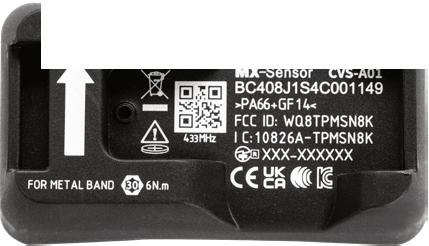
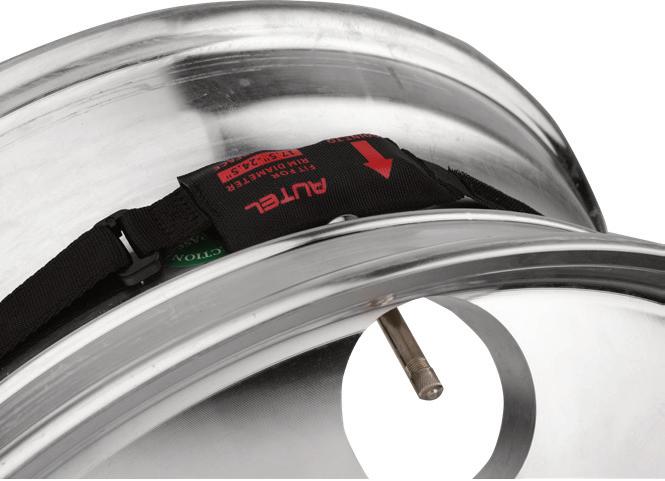









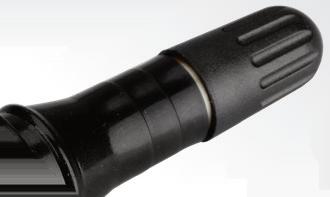

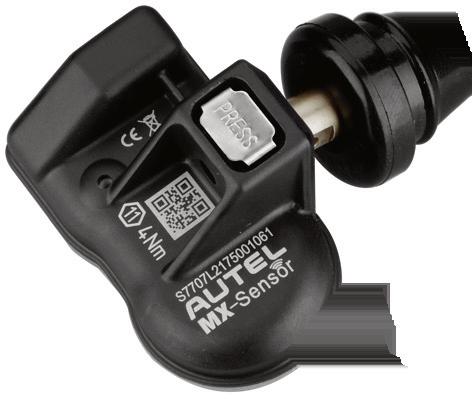

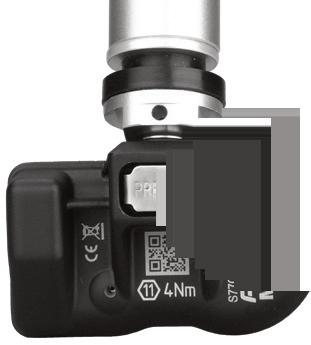


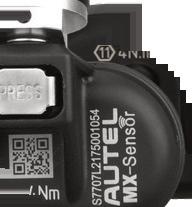
Tire Pressure Sensor
The tire pressure sensor integrated with the valve is installed in each wheel, as shown in Fig. 1, and transmits the detected tire pressure and temperature signal in the form of the radio wave. The radio signal is received by the low tire pressure warning control unit (tire pressure receiver).
Service Notice and Precautions for TPMS
Warning: Radio waves could adversely affect electric medical equipment. Those who use a pacemaker should contact the electrical medical equipment manufacturer for the possible influences before use.
Low tire pressure warning lamp blinks for one minute, then turns ON when any malfunction occurs except low tire pressure. Erase the self-diagnosis memories for Tire Pressure Monitoring System (TPMS), or register the ID to turn low tire pressure warning lamp OFF.
ID registration is required when replacing tire pressure sensor or low tire pressure warning control unit.

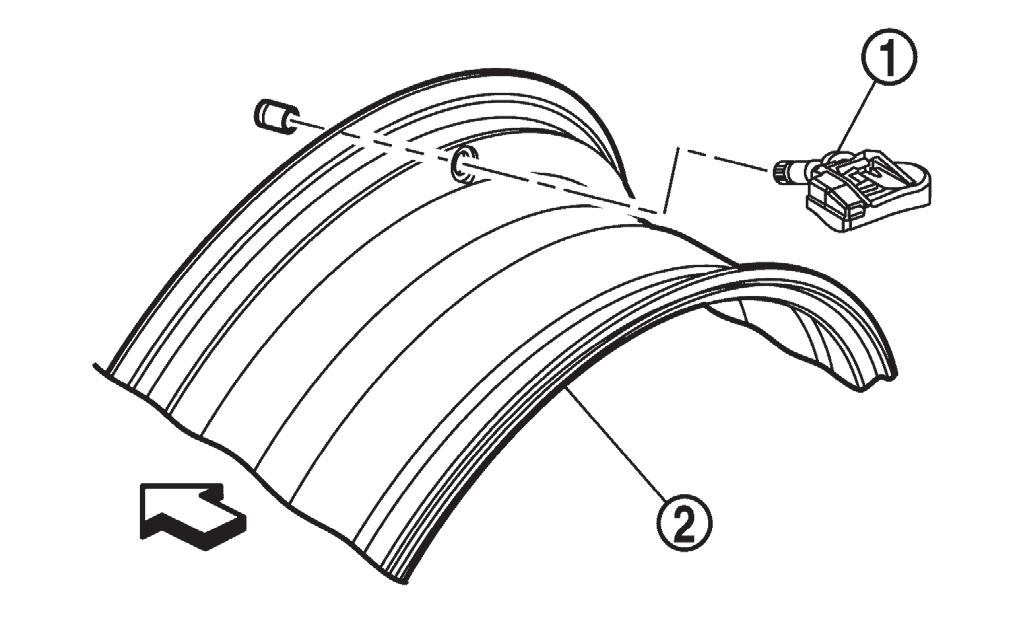
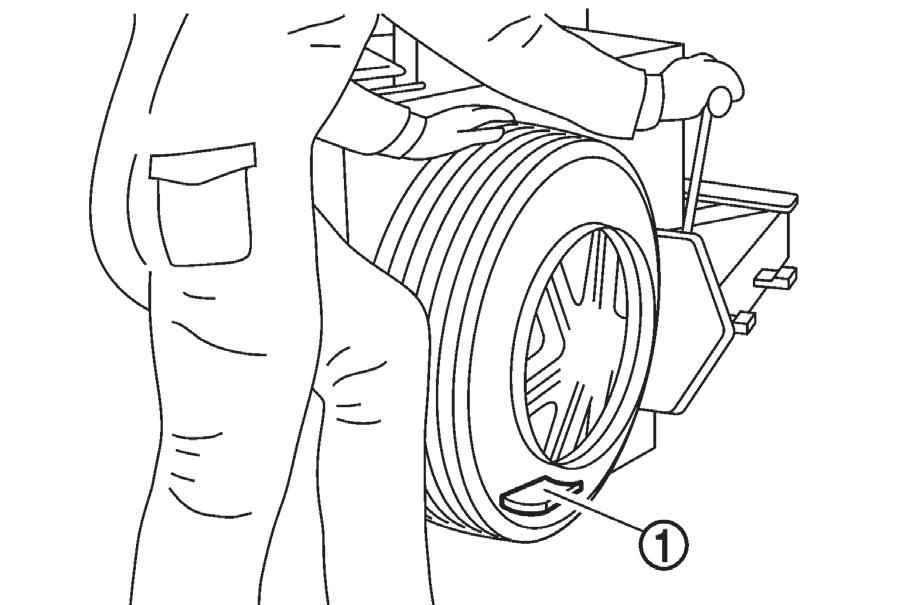


For easy fill tire alert function, refer to the following:
• When inflating the tires, park the vehicle in the safe area and ensure the safety of the working area.
• Read and understand the easy fill tire alert function prior to use.
• Inflate the tires one at a time.
• If there is no response for approximately 15 seconds or more after inflating the tires, cancel the use of the easy fill tire alert function or move the vehicle approximately 3.2 feet backward or forward to try again. The air filler pressure may be weak or out of service area.
• Despite the high-precision TPMS pressure sensor, an indicated value may differ from that of the pressure gauge.
• Air pressure is measured rather high due to the rise in tire air temperature after driving.
• If TPMS is malfunctioning, the easy fill tire alert is unusable. Replace grommet seal, valve core and valve cap of tire pressure sensor in TPMS when replacing each tire by reaching the wear limit. Never install tire pressure sensor from other vehicles. The TPMS does not function if the specified Genuine Nissan tire pressure sensor is not installed. Because the tire pressure sensor conforms to North America radio law, the following items must be observed:
• The sensor may be used only in North America.
• It may not be used in any method other than the specified method.
• It must not be disassembled or modified.
Description
This procedure must be performed after replacement of a tire pressure sensor or low tire pressure warning control unit.
Work Procedure
TPMS ID registration can be performed using one of the following procedures:
• Transmitter Activation tool [KV48105501 (J-45295-A)] using CONSULT — preferred method
• Signal Tech II tool (J-50190) using CONSULT — preferred method
• Signal Tech II tool (J-50190) without CONSULT
• CONSULT only
TPMS REGISTRATION WITH TRANSMITTER ACTIVATION TOOL [KV48105501 (J-45295-A)] and CONSULT
1. Press push-button ignition switch ON.
2. Select “ID REGIST” in “Work support” mode of “AIR PRESSURE MONITOR.”
3. Select “Start” on “ID REGIST” screen.
4. Hold the transmitter activation tool [KV48105501 (J-45295-A)] against the side of the left front tire, near the valve stem.
5. With the tool held at a zero to 15 degree angle to the tire, press and hold the transmitter activation tool button until the indicator lamp turns OFF (approximately five seconds).
6. Repeat steps four and five for the remaining tires in this order: right front, right rear and left rear.
7. When ID registration is complete, check the following pattern at each wheel. Turn Signal Lamp - 2 blinksCONSULT - “Yet (red)” “Done (green)”
8. After the ID registration procedure for all wheels is complete, press “End” on the CONSULT to finish ID registration.
9. Test drive the vehicle to ensure that the TPMS lamp is OFF and no warning messages are present.
TPMS REGISTRATION WITH SIGNAL TECH II TOOL (J-50190) using CONSULT
NOTE: The Signal Tech II must be updated with the newest software version in order to perform the below procedures.
1. Adjust the tire pressure for all tires to the recommended value.
2. Press push-button ignition switch ON.
3. Select “ID REGIST” in “Work support” mode of “AIR PRESSURE MONITOR”.
4. Select “Start” on “ID REGIST” screen.
5. Turn on the Signal Tech II tool [- (J-50190)].
6. Hold the Signal Tech II against the side of the left front tire, near the valve stem.
7. With the tool held at a zero to 15 degree angle to the tire, select “Activate Sensor” from the main menu, then press and release the “OK” button to activate the sensor. Once the sensor is activated, the vehicle parking lamps will flash and the sensor ID will appear on the CONSULT screen.
8. Repeat steps six and seven for the remaining tires in this order: right front, right rear and left rear.
9. When ID registration is complete, check the following pattern at each wheel. Turn Signal Lamp - 2 blinksCONSULT - “Yet (red)” “Done (green)”










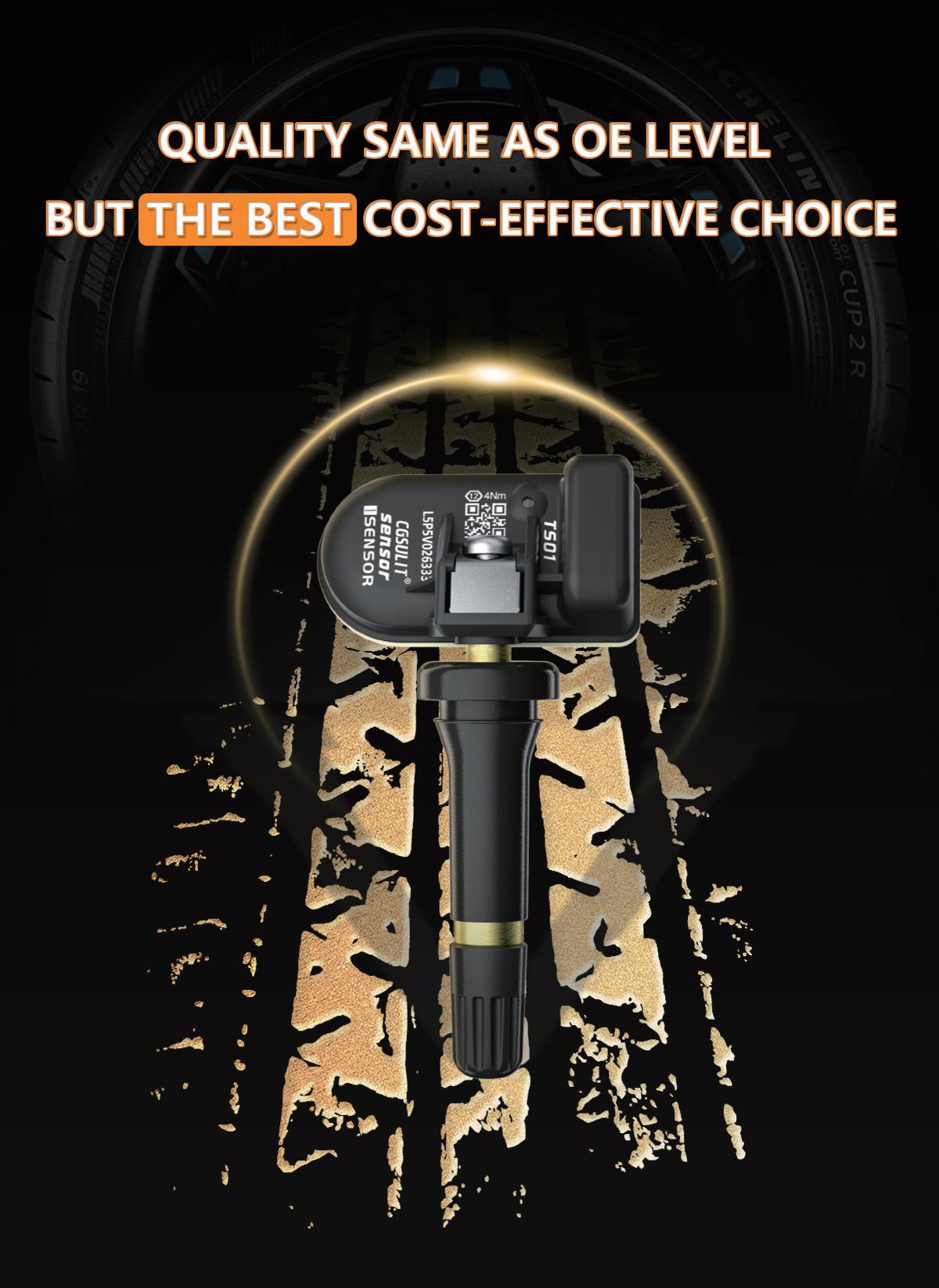
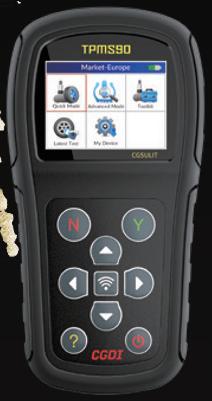

10. Once all sensors have been activated, select “End” on the CONSULT to nish ID registration.
11. Test drive the vehicle to ensure that the TPMS lamp is OFF and no warning messages are present.
TPMS REGISTRATION WITH SIGNAL TECH II TOOL (J-50190) without CONSULT
1. Adjust the tire pressure for all tires to the recommended value.
2. Turn on the Signal Tech II tool (J-50190) and select “TPMS Check” from the main menu.
3. Select vehicle model and year.
4. When prompted, hold the Signal Tech II against the side of the le front tire, near the valve stem.
5. With the tool held at a zero to 15 degree angle to the tire, press and release the “OK” button to activate the sensor. Once the sensor is activated, the tool will sound a tone and the tire pressure will be displayed.
6. Repeat steps four and five for the remaining tires in this order: right front, right rear and le rear.
7. When prompted, connect the tool to the data link connector. e tool will connect to the low tire pressure warning control unit, read the VIN, read sensor IDs and check for TPMS DTCs. Along with DTCs detected, one of the following will be displayed next to each wheel:
• N/A: Not applicable because no ID found by the tool
• OK: Wheel and sensor are in original position
• NEW: New ID found compared to low tire pressure warning control unit
• RT: Wheel has been rotated
• Low Press: Low tire pressure
8. If no DTC is present or the repair has been completed, press the “OK” button to register the IDs and clear DTCs.
9. Test drive the vehicle to ensure that the TPMS lamp is OFF and no warning messages are present.
10. Print a Signal Tech II Audit Report for your records. Refer to the Signal Tech II User Guide for instructions.
TPMS REGISTRATION
WITH CONSULT ONLY
1. Adjust the tire pressure for all wheels to match the list below:

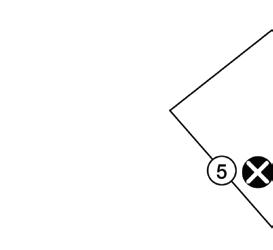

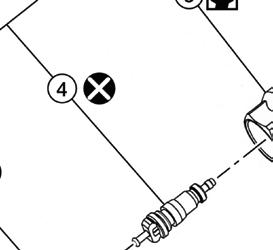

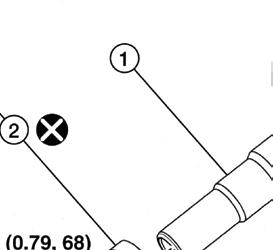


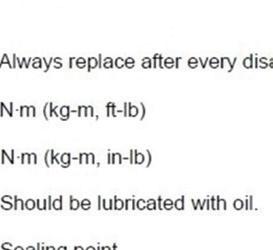




the position of the valve stem assembly for the purpose of wheel and tire balance adjustment a er installation.
4. Lubricate the tire outside bead well with a suitable non-silicone lubricant, and remove outside of tire from the wheel.
Caution:
• Do not use silicone lubricant. Use of silicone lubricant will deteriorate the tire and wheel.
• Le front: 35 psi,
• Right front: 32 psi,
• Right rear: 29 psi,
• Le rear: 26 psi.
2. Press push-button ignition switch ON.
3. Select “ID REGIST” in “Work support” mode of “AIR PRESSURE MONITOR”.
4. Select “Start” on “ID REGIST” screen.
5. Drive the vehicle at a speed greater than 25 mpg for three minutes or more.
6. A er ID registration for all wheels is complete, press “End” on the CONSULT to nish ID registration
7. Adjust the tire pressures for all tires to the recommended value.
8. Test drive the vehicle to ensure that the TPMS lamp is OFF and no warning messages are present.
1. Remove wheel and tire using power tool.
2. Remove valve cap and valve core to de ate the tire.
3. Remove the valve stem nut and allow tire pressure sensor to fall into tire. Note: If the tire is to be reused, apply a matching mark on the tire in line with
• Be sure not to damage the wheel or tire pressure sensor.
• Do not allow lubricant to make contact with tire pressure sensor.
• Verify that the tire pressure sensor is at the bottom of the tire, as in Fig. 2, while performing the above.
5. Lubricate the tire inside bead well with a suitable non-silicone lubricant, and remove inside of tire from the wheel.
Caution:
• Do not use silicone lubricant. Use of silicone lubricant will deteriorate the tire and wheel.
• Be sure not to damage the wheel.
6. Set the tire onto the tire changer turntable so that the tire pressure sensor inside the tire is located close to the valve stem hole in the wheel.
7. Turn the tire so that the valve stem hole in the wheel is at the bottom and bounce so that the tire pressure sensor inside the tire is near the valve stem hole in the wheel. Carefully li tire onto turn table and position the valve stem hole in the wheel (and tire pressure sensor) 270 degrees from mounting/dismounting head. Be careful not to damage the wheel or tire pressure sensor.
8. Remove the tire pressure sensor from the tire.
9. Remove the grommet seal.
1. Apply a suitable non-silicone lubricant to the tire inside bead.
Caution:
• Replace the tire pressure sensor if the valve stem has deformations, cracks, damage or corrosion.
• Do not drop or strike the tire pressure sensor. Replace the tire pressure sensor if it has been dropped from higher than one meter.
2. Install the tire inside bead onto the wheel.
3. Install the grommet seal onto the valve stem as shown.
• Do not reuse grommet seal.
• Check the direction of the grommet seal.
• Insert new grommet seal all the way to the base of tire pressure sensor valve stem.
4. Hold tire pressure sensor and install the tire pressure sensor in the direction shown in illustration below. Tighten the valve stem nut.
• Do not reuse valve core and valve cap.
• Check that grommet seal is free of foreign matter.
• Do not push the tire pressure sensor body in any direction other than indicated by the arrow when installing valve stem nut to avoid damage to the grommet seal.
• Check that grommet seal contacts completely with wheel.
• Check that grommet seal is not pinched or folded over in, as this can cause a air leak.
• Manually tighten valve stem nut all the way to the wheel. (Do not use a power tool to avoid impact.)
5. Place wheel on turntable of tire machine. Ensure that tire pressure sensor is 270 degrees from mounting/ dismounting head. Do not touch tire pressure sensor with mounting head.
6. Apply a suitable non-silicone lubricant to the tire outside bead.
• Do not allow lubricant to make contact with tire pressure sensor.
• When installing, check that the tire turns together with the wheel to prevent damage to the tire pressure sensor from contact with the tire bead.
7. Install tire outside bead onto wheel using same process as inside bead. Note: If the tire is being reused, align the matching mark applied on the tire with the position of the valve stem
assembly for the purpose of wheel and tire balance adjustment after installation. Make sure that the tire does not rotate relative to wheel.
8. Install the valve core and inflate tire.
9. Install the valve cap.
10. Balance the wheel and tire. Install wheel and tire in the appropriate position on vehicle.
11. Perform the ID registration procedure.
If replacing the tire pressure sensor, then the ID registration procedure must be performed. ■
Information for this column comes from the tire pressure monitoring systems data in ProDemand, Mitchell 1’s auto repair information software for domestic and import vehicles. Headquartered in San Diego, Mitchell 1 has provided quality repair information solutions to the automotive industry since 1918. For more information, visit www.mitchell1.com.
4 sensors = coverage for 225 million vehicles.
Keep the four REDI-Sensors™ on hand, and you’ll have coverage for almost every customer. No need to wait for a sensor delivery. Plus, REDI-Sensor needs no cloning or programming, so you save even more time.
REDI-Sensor.com




